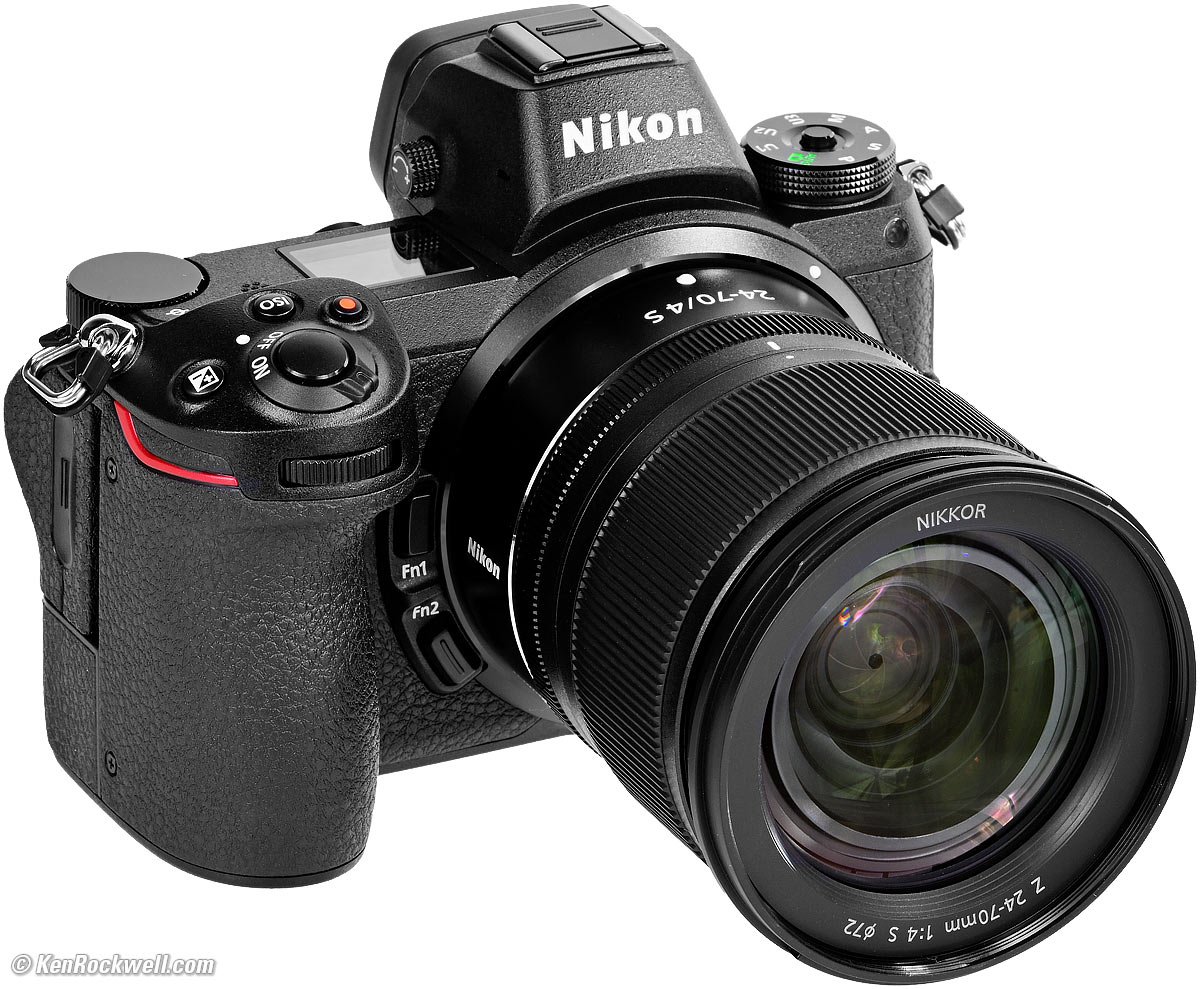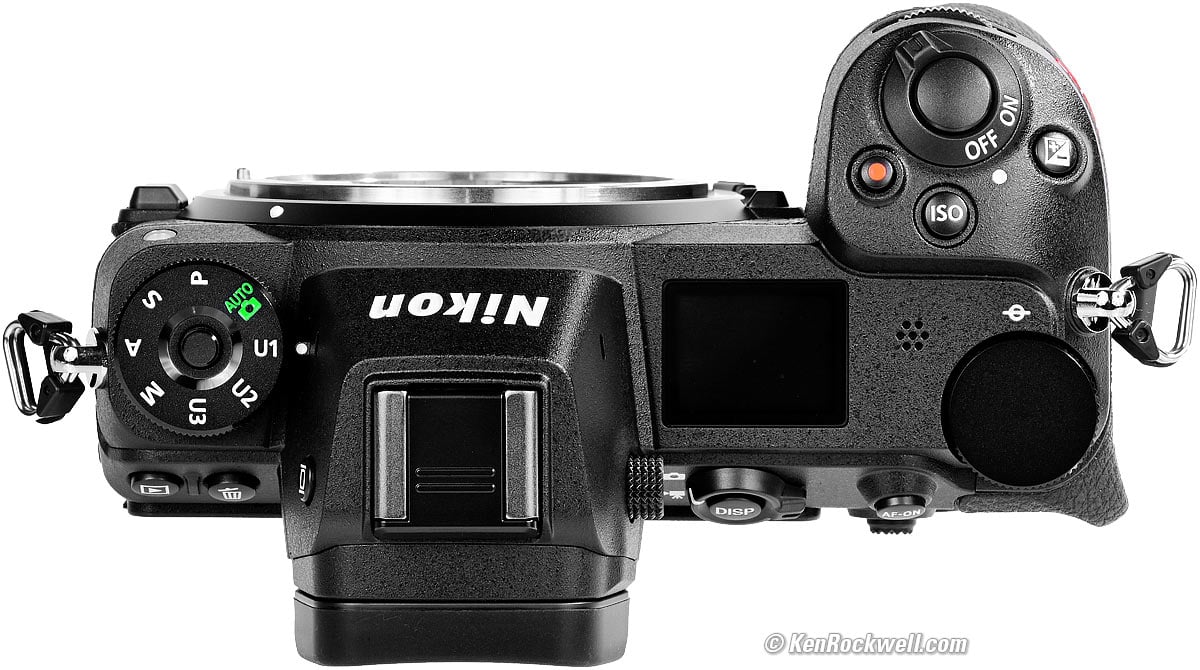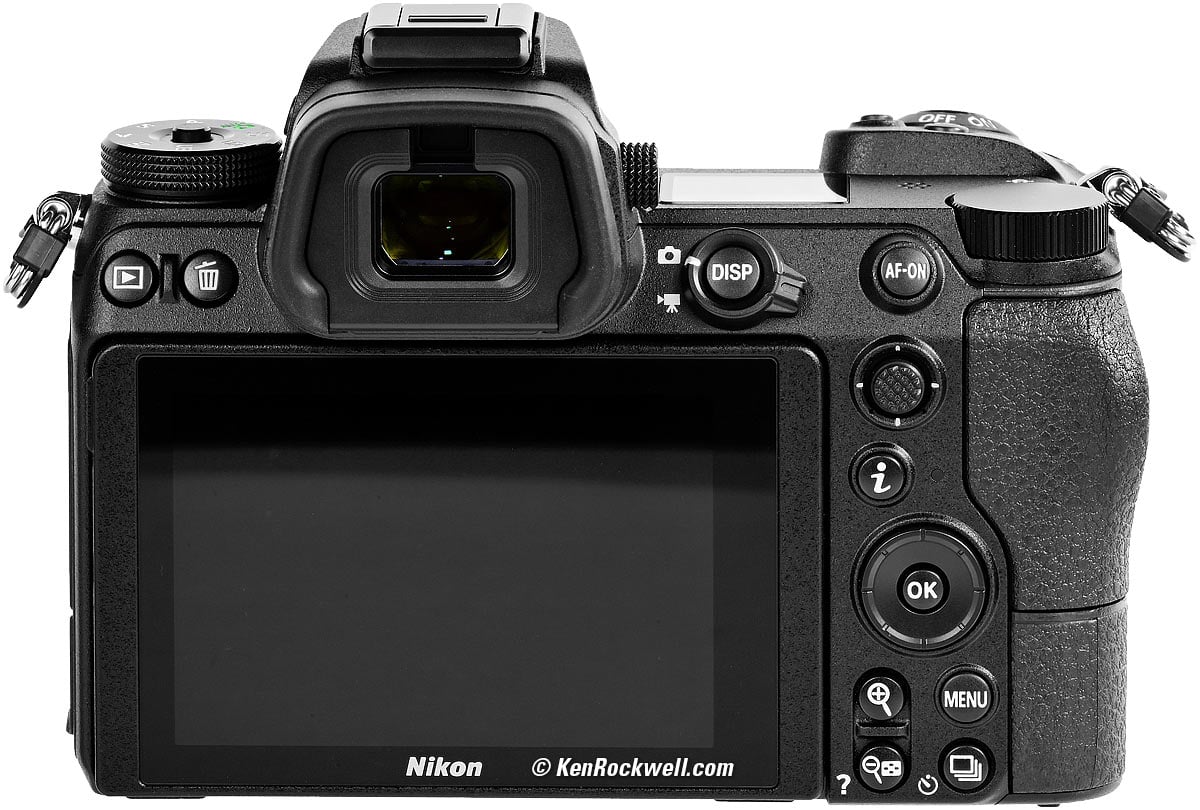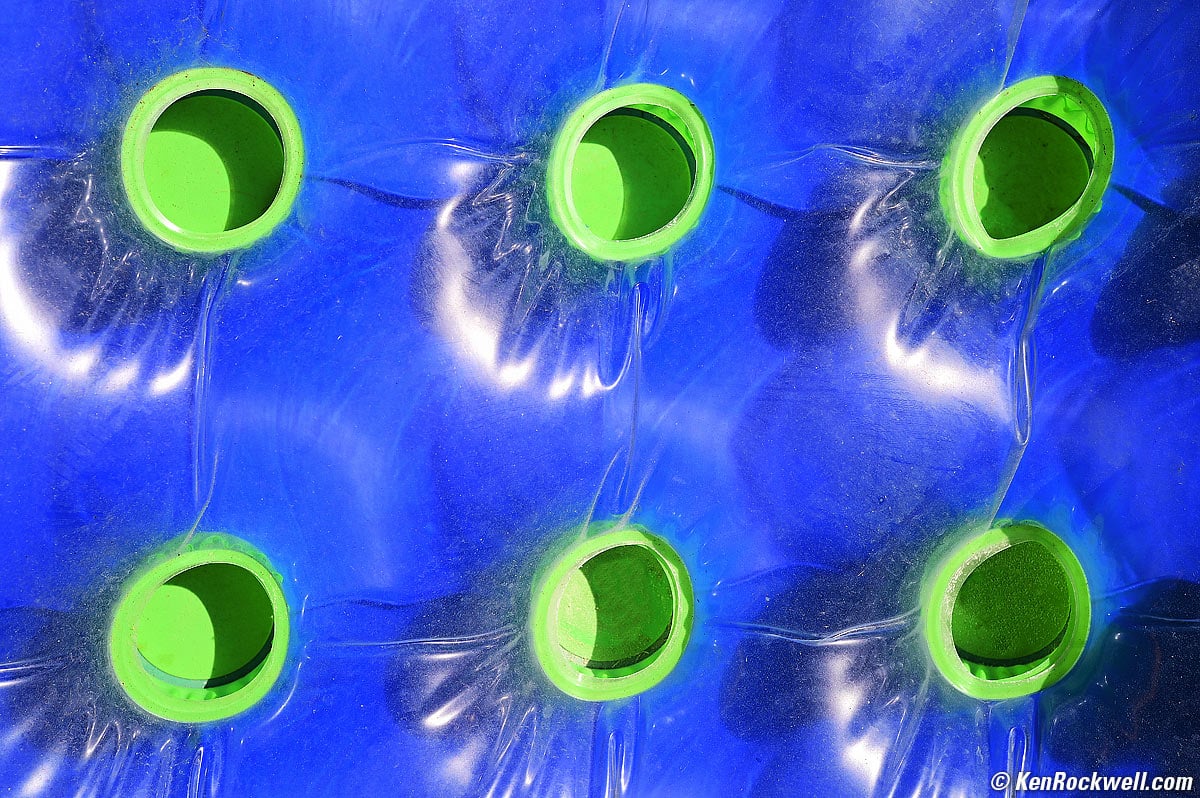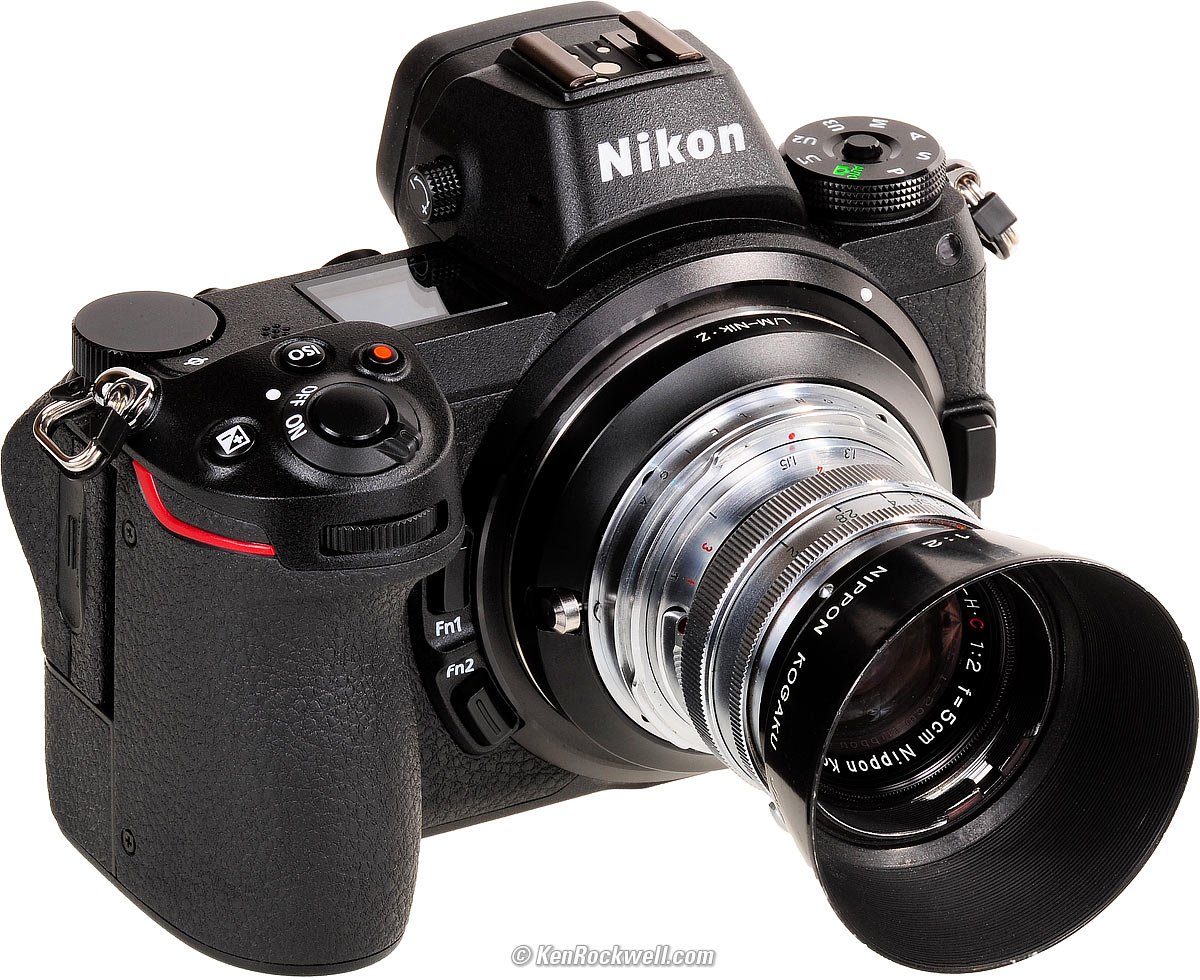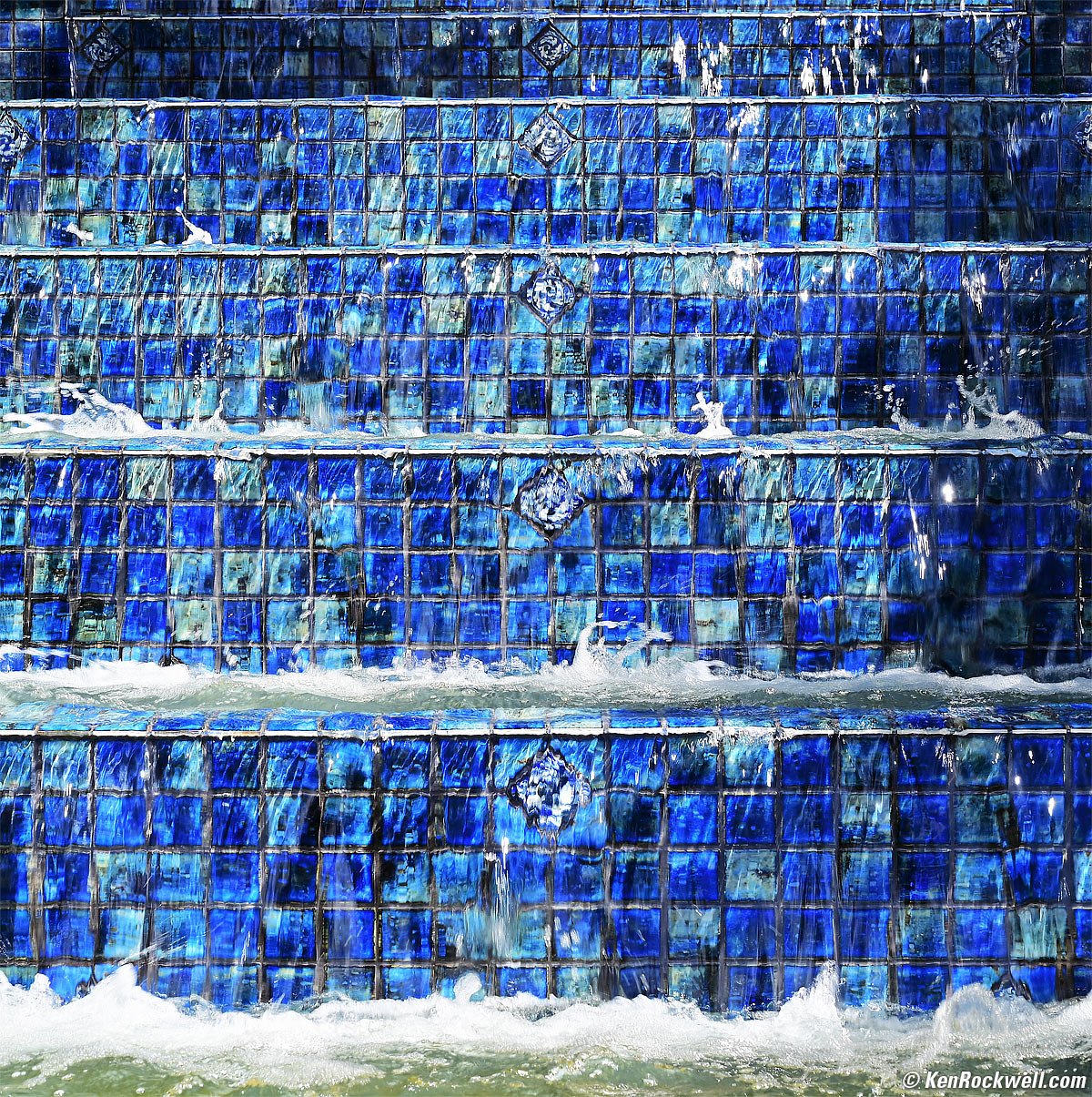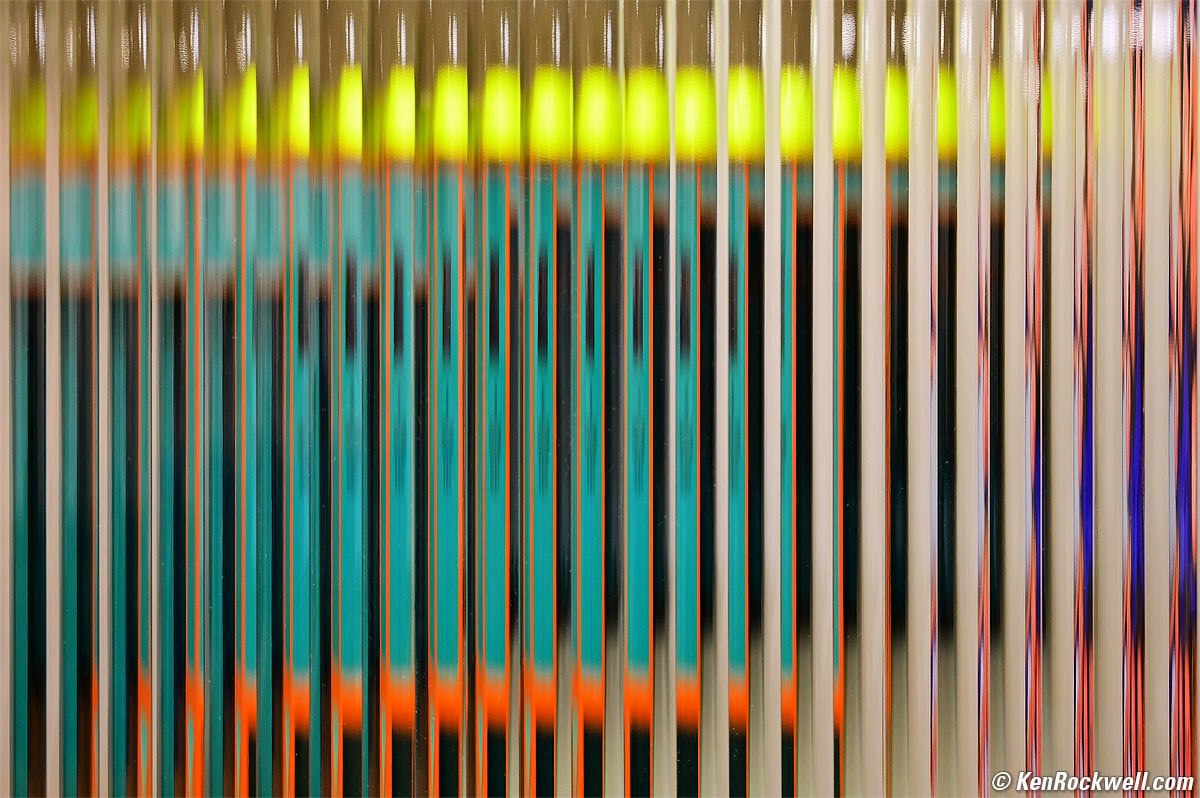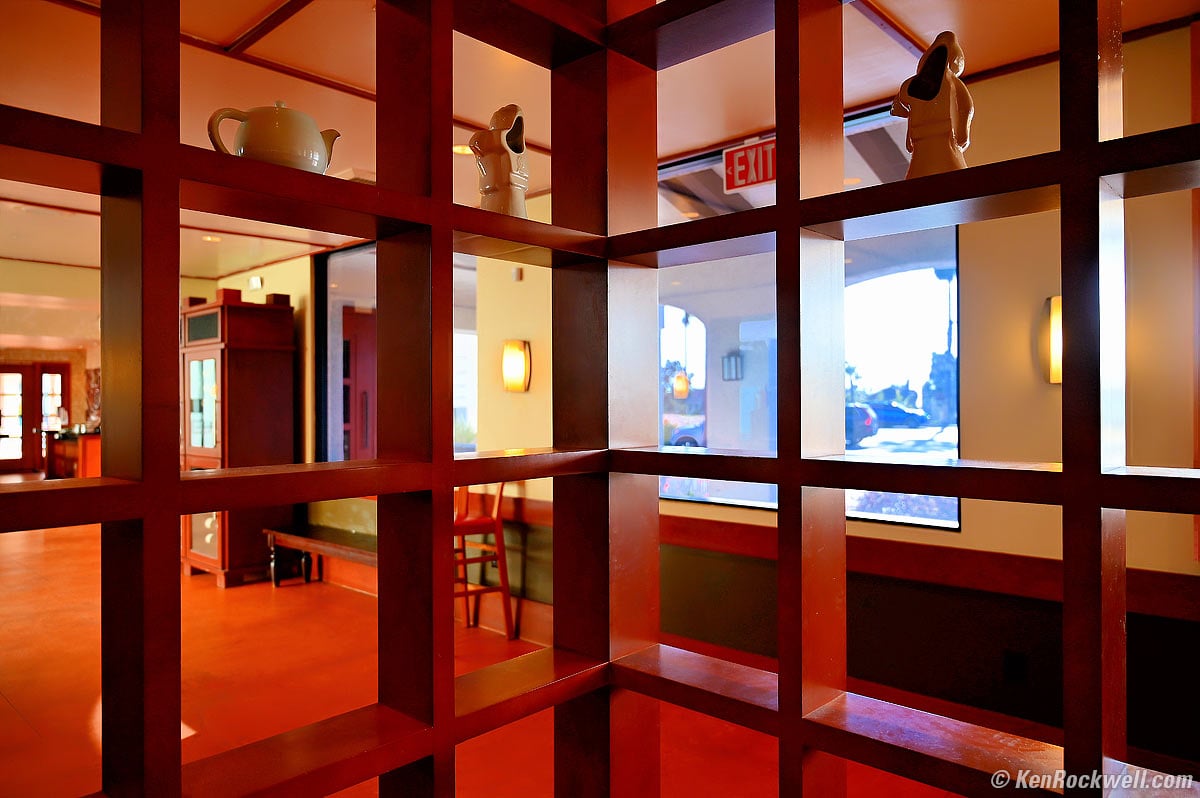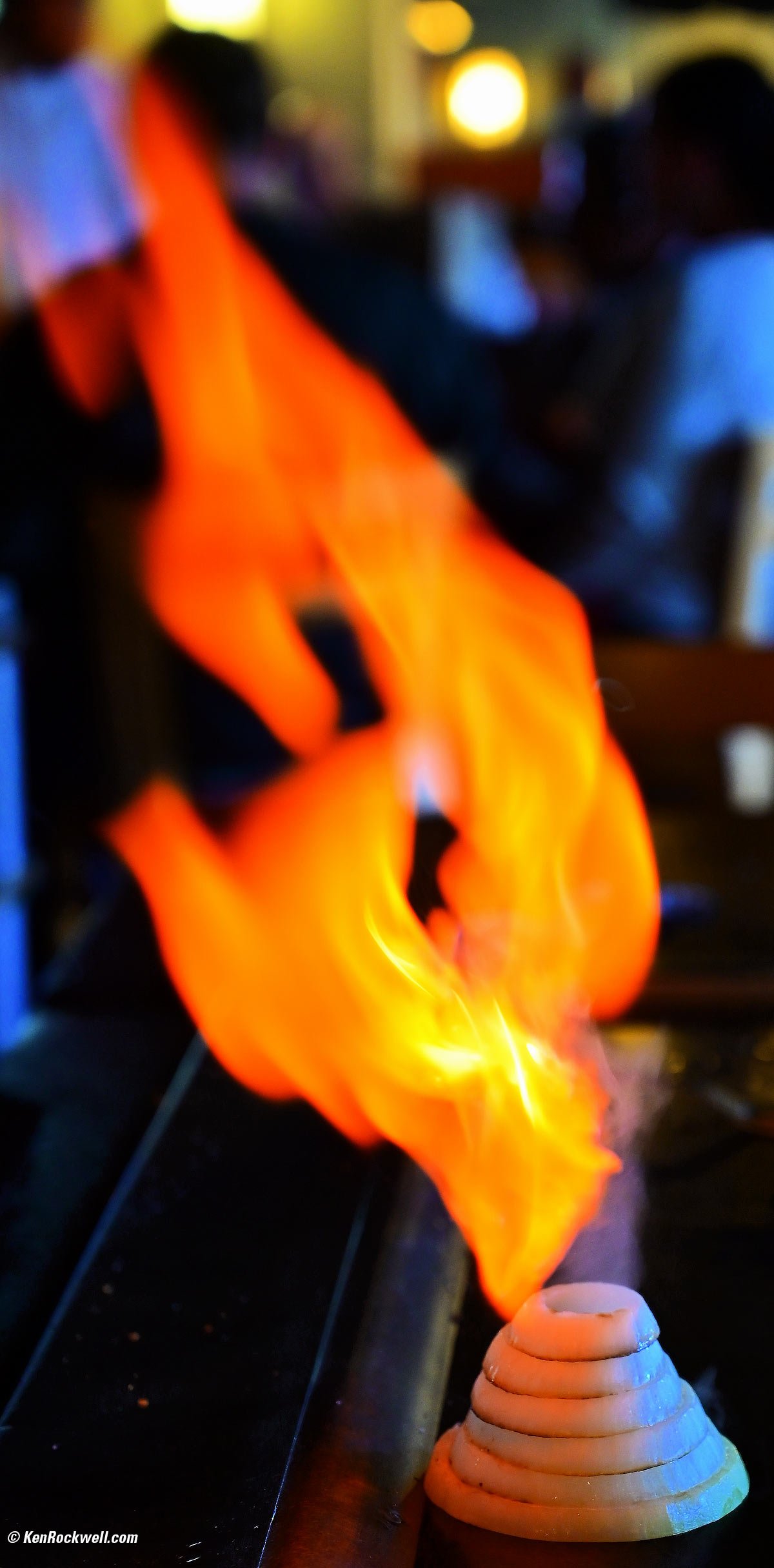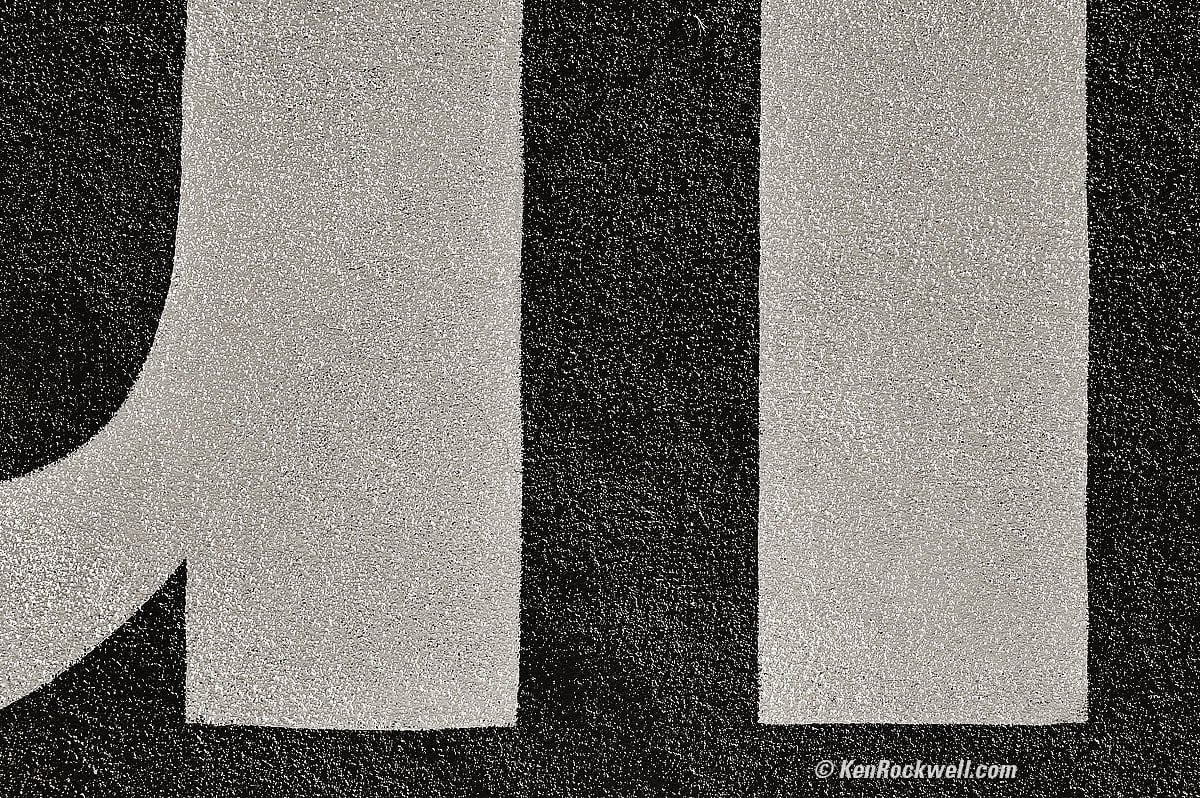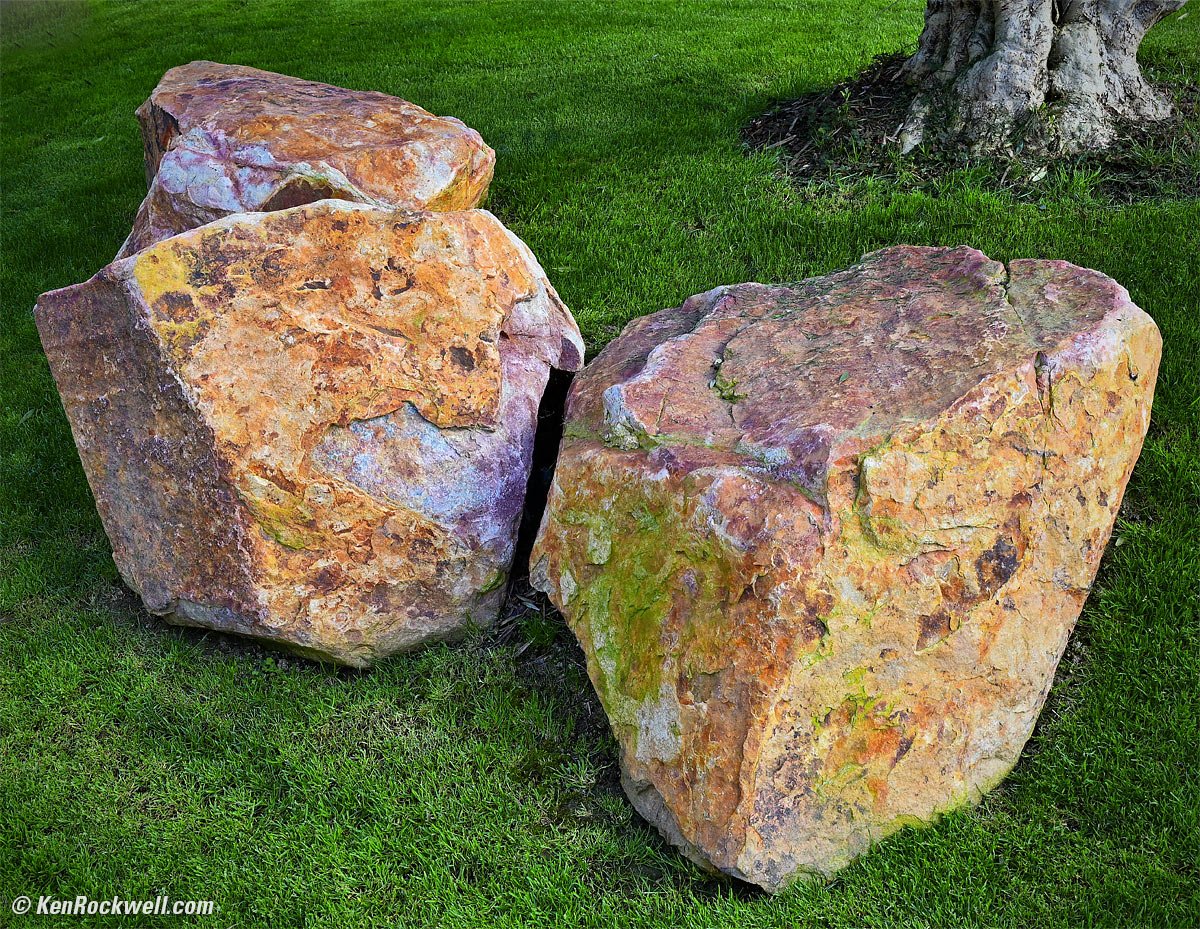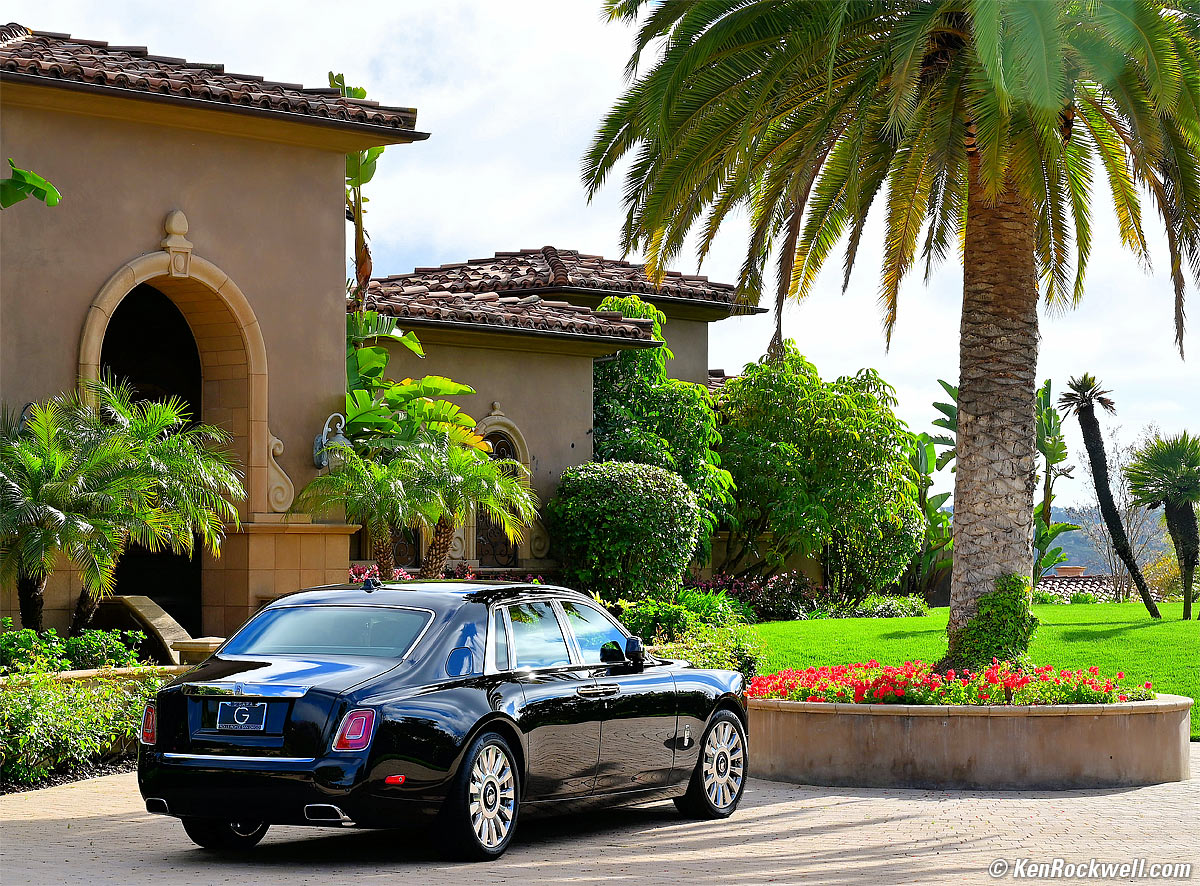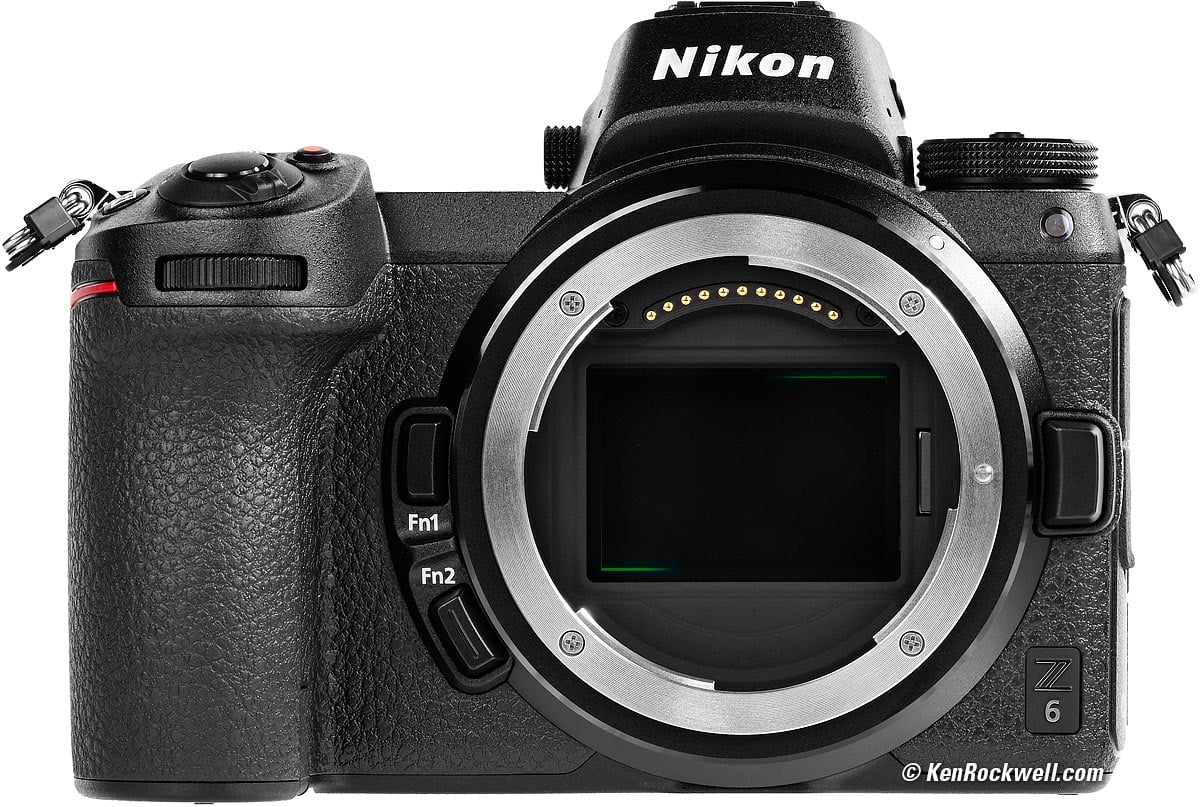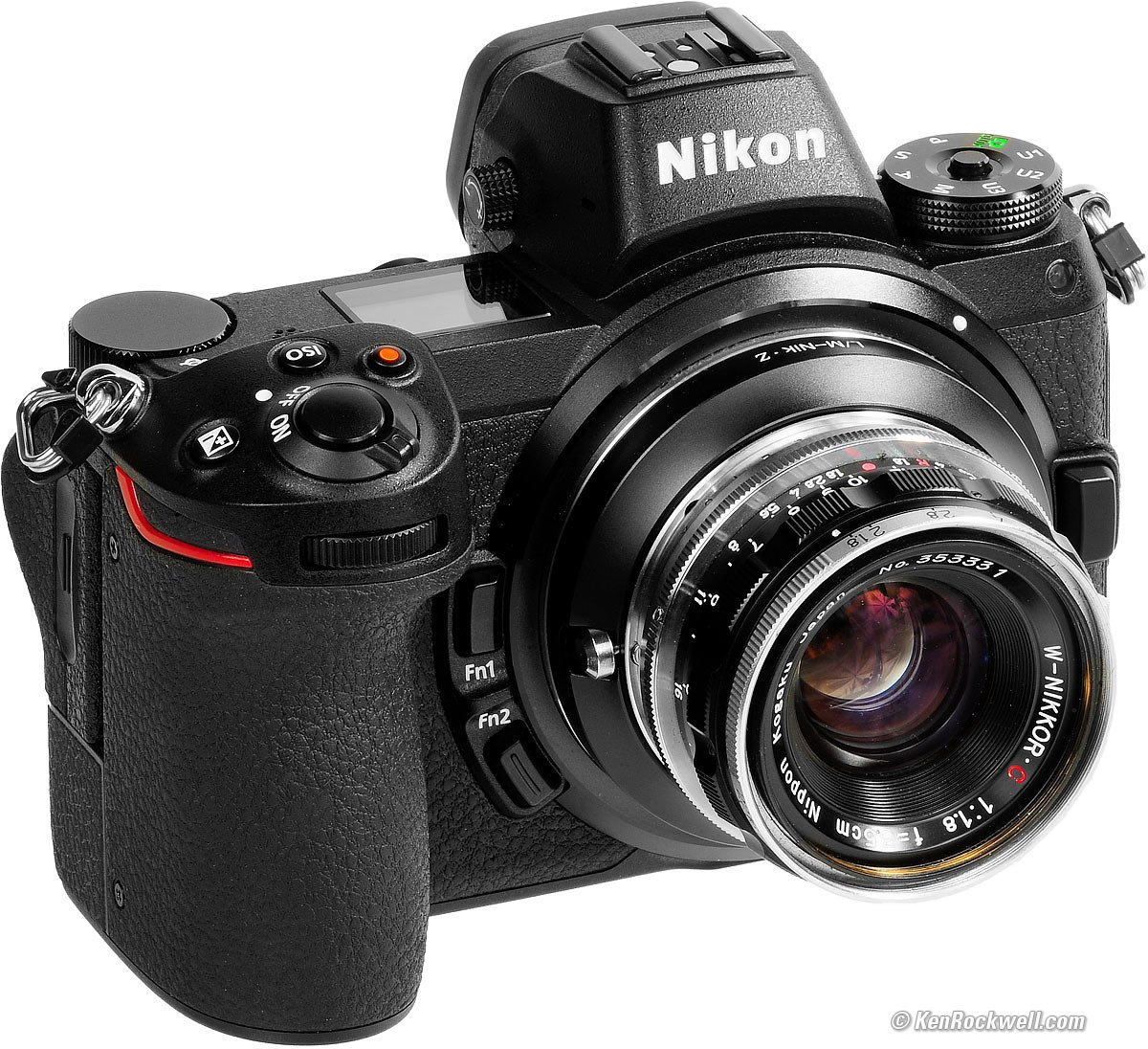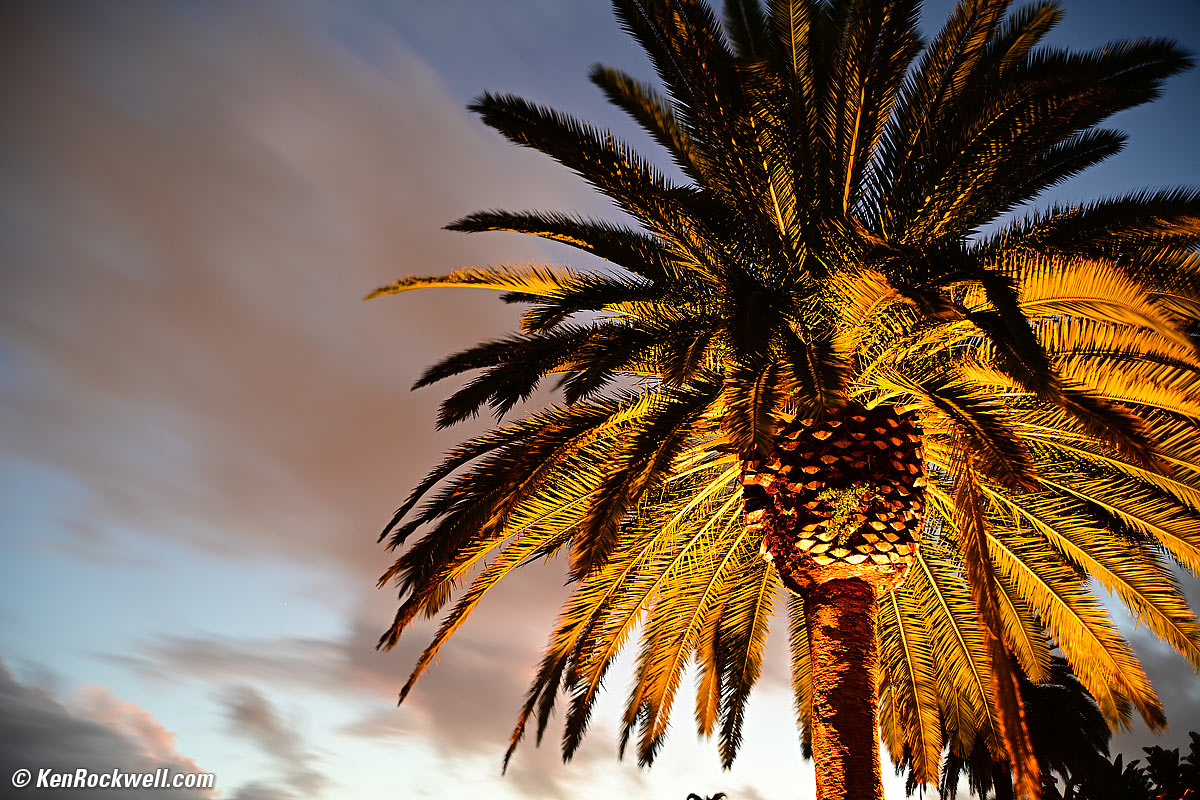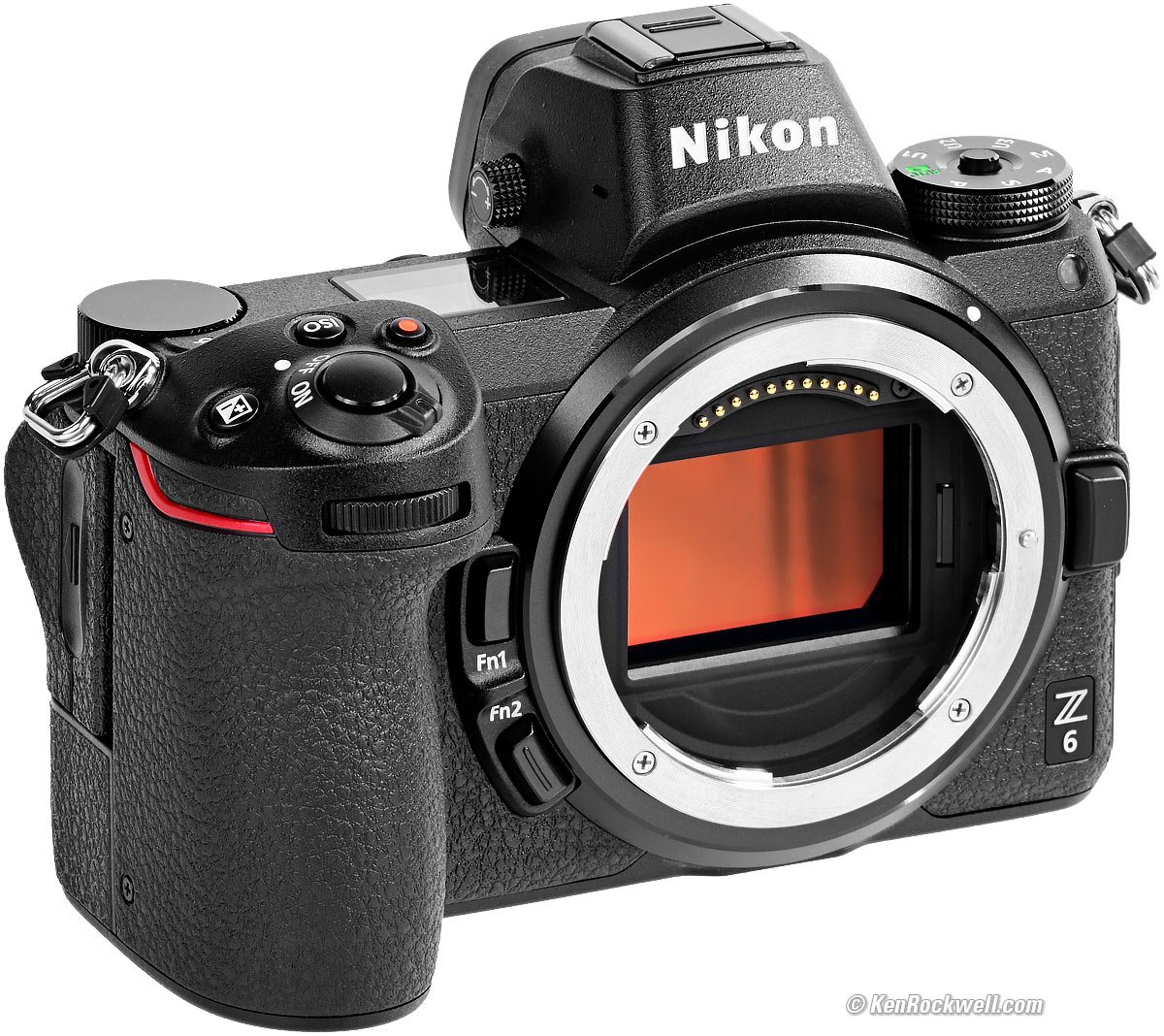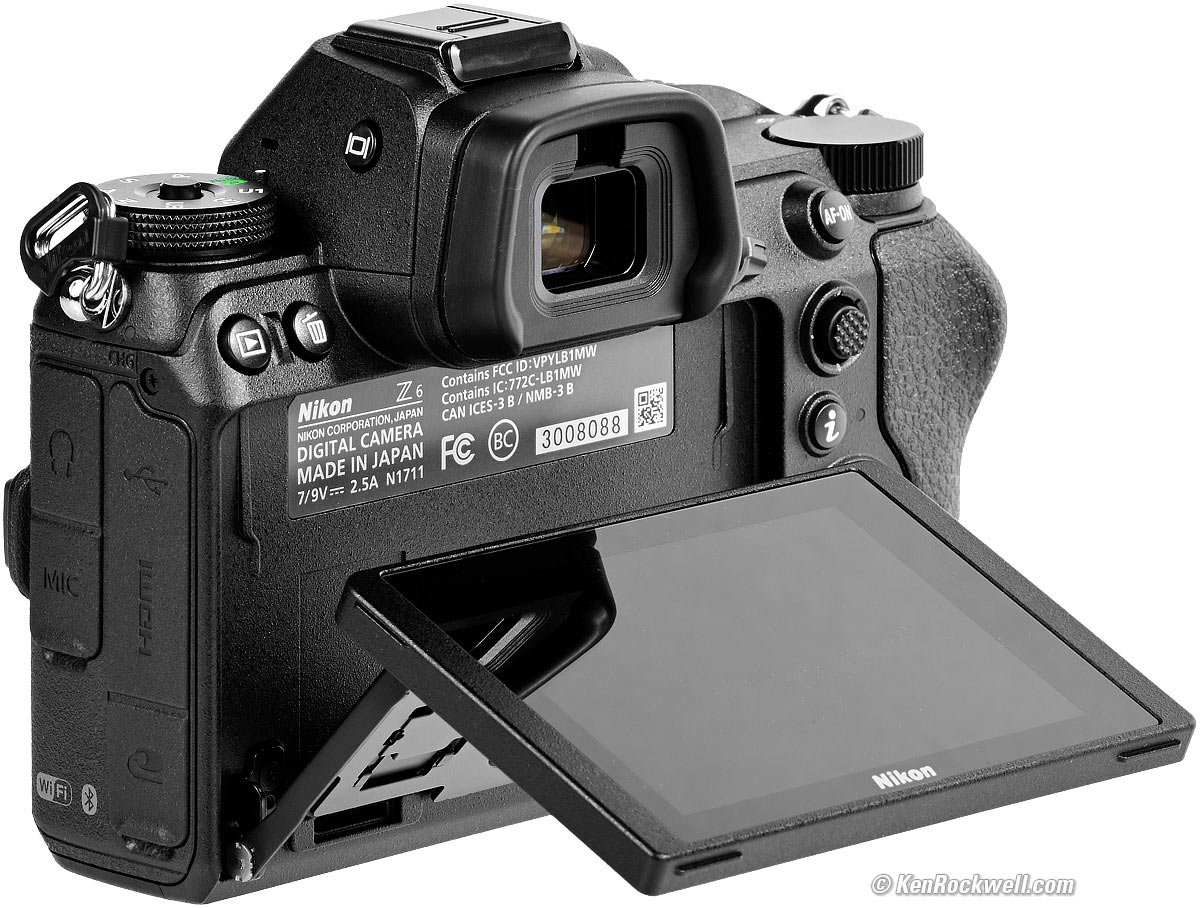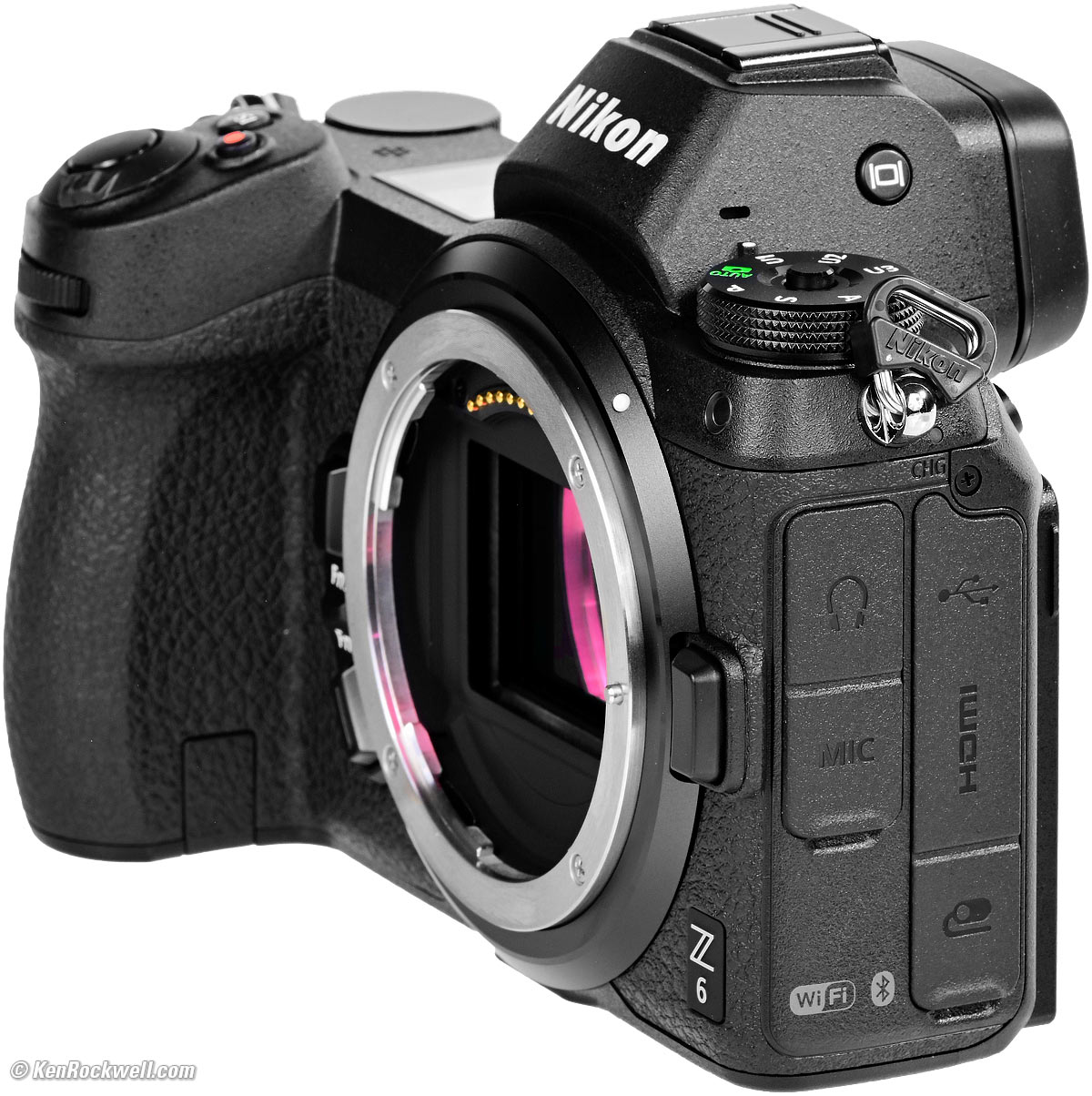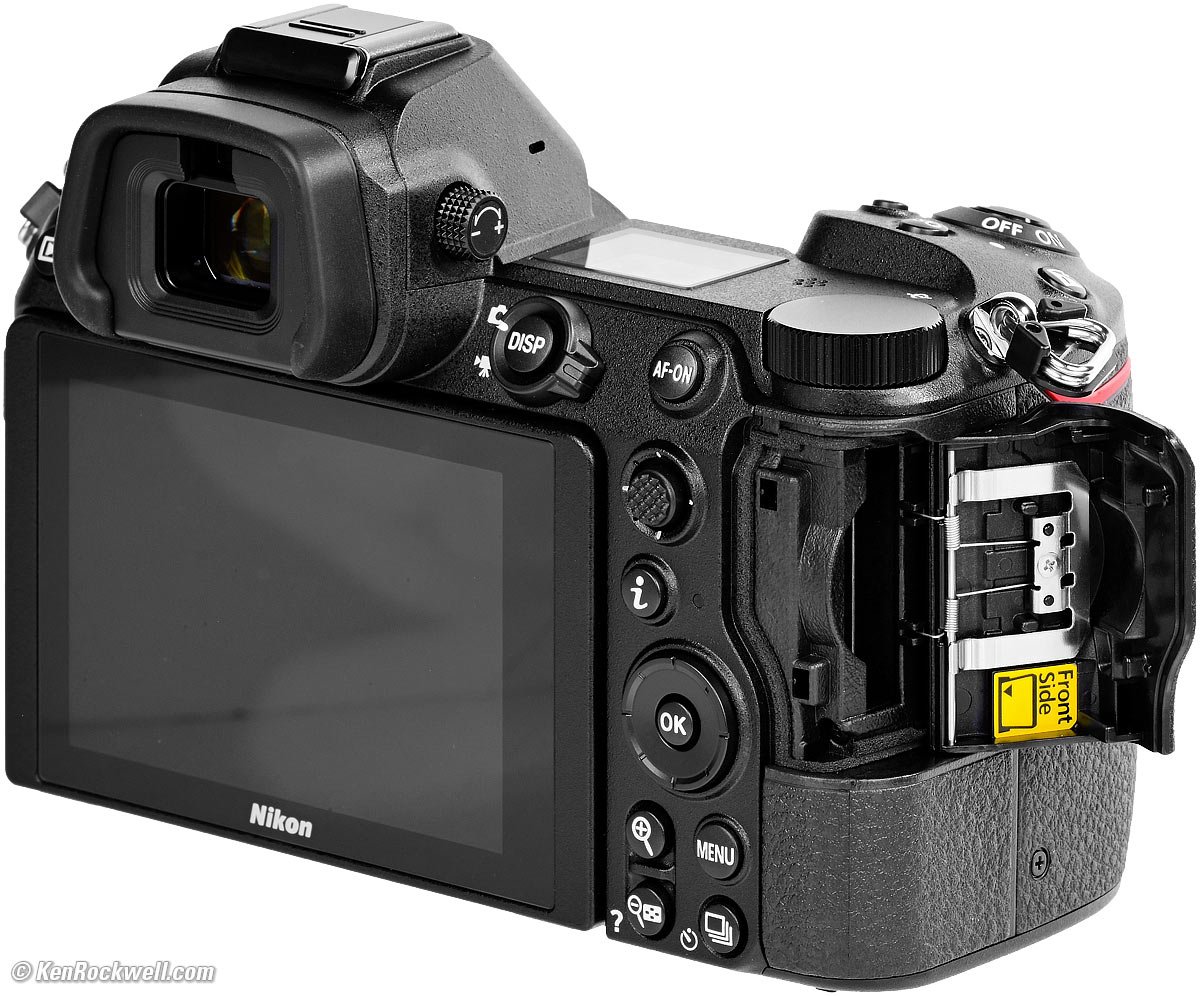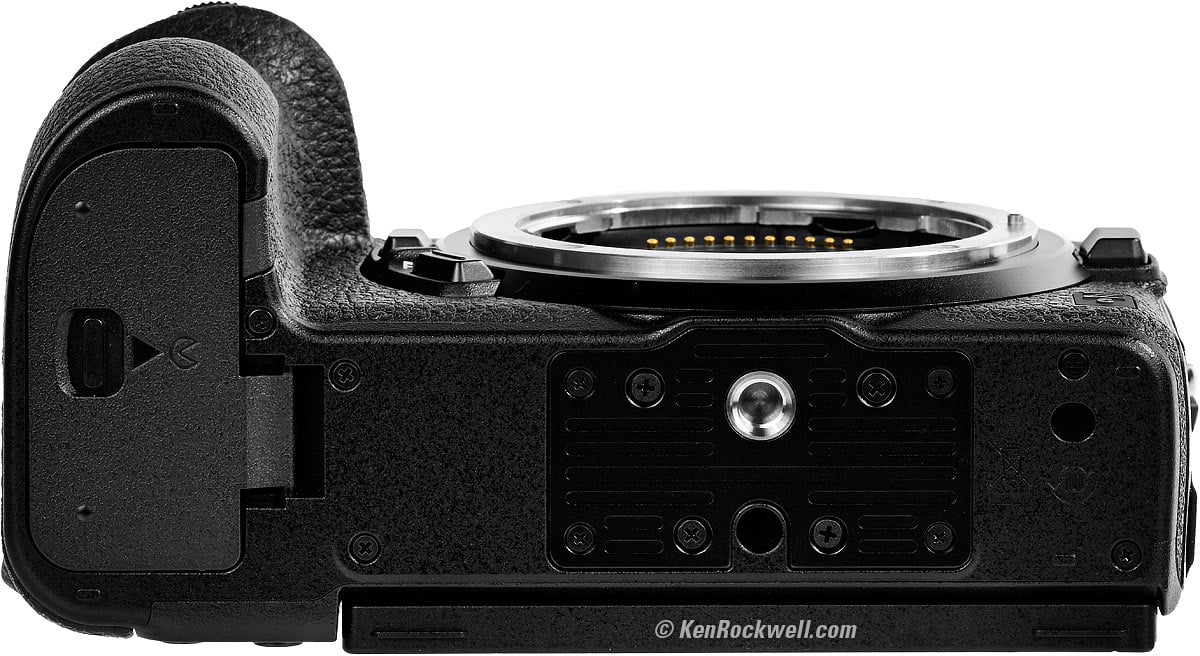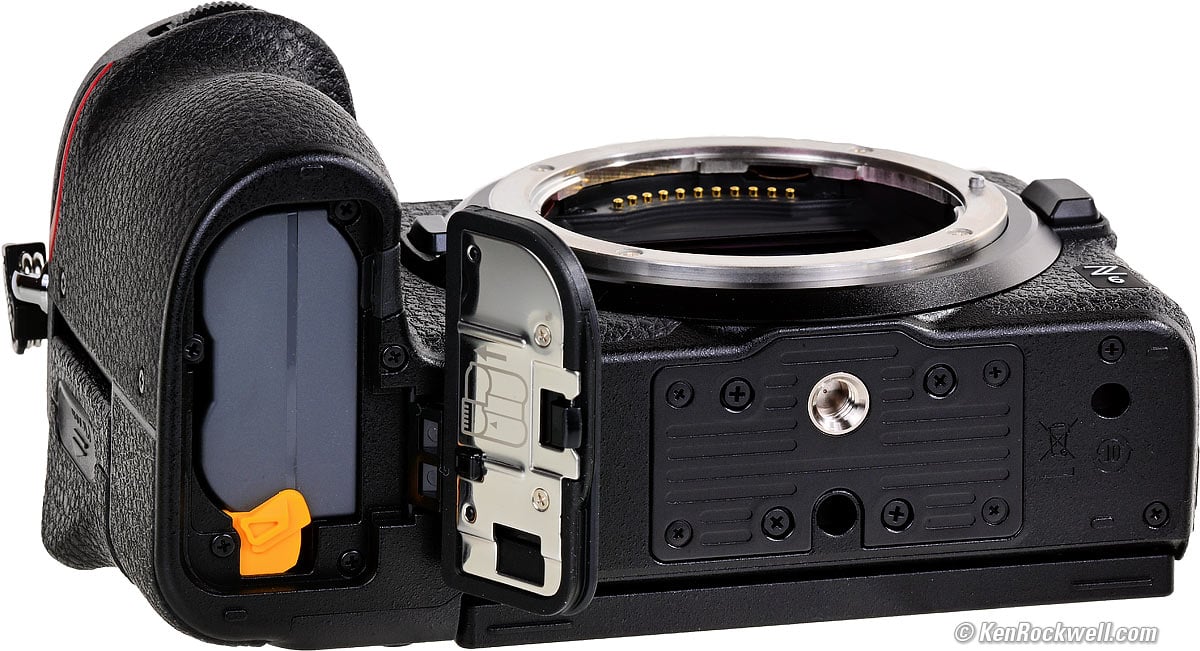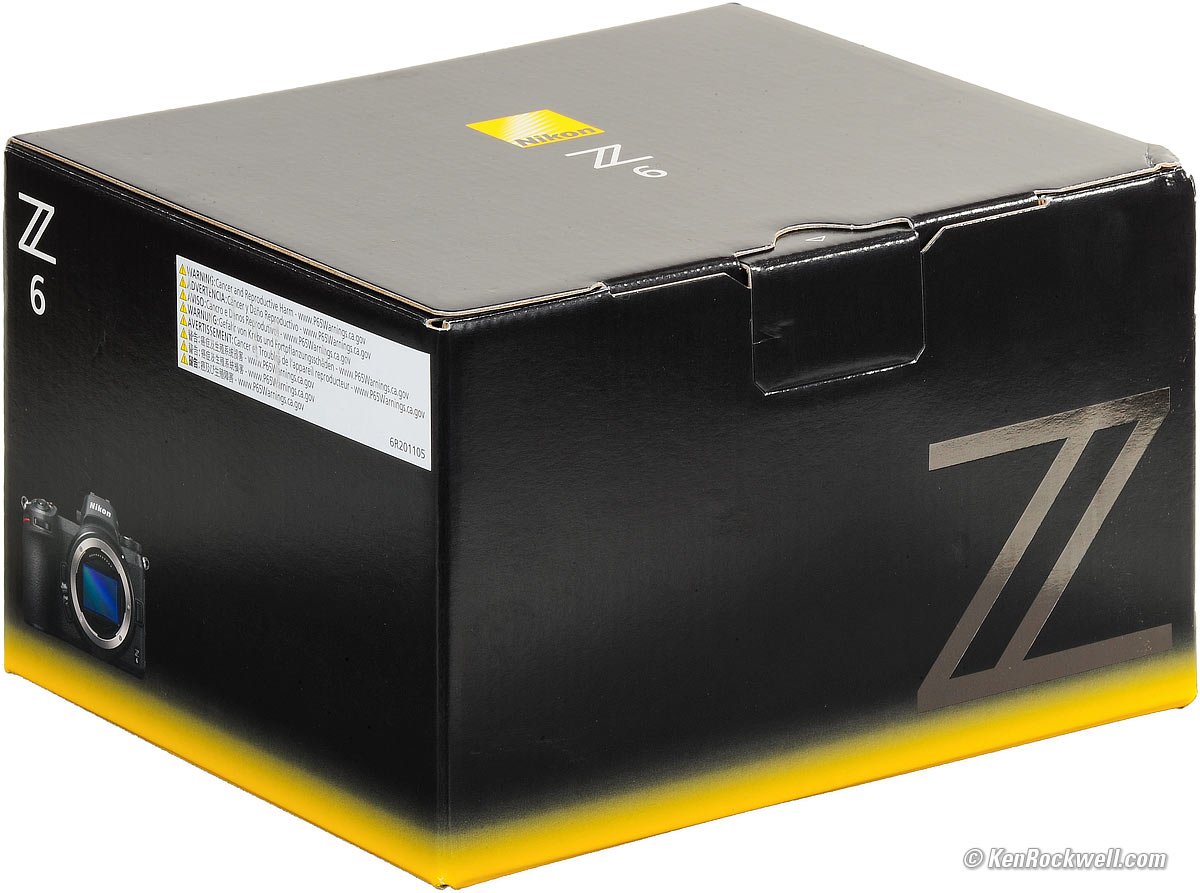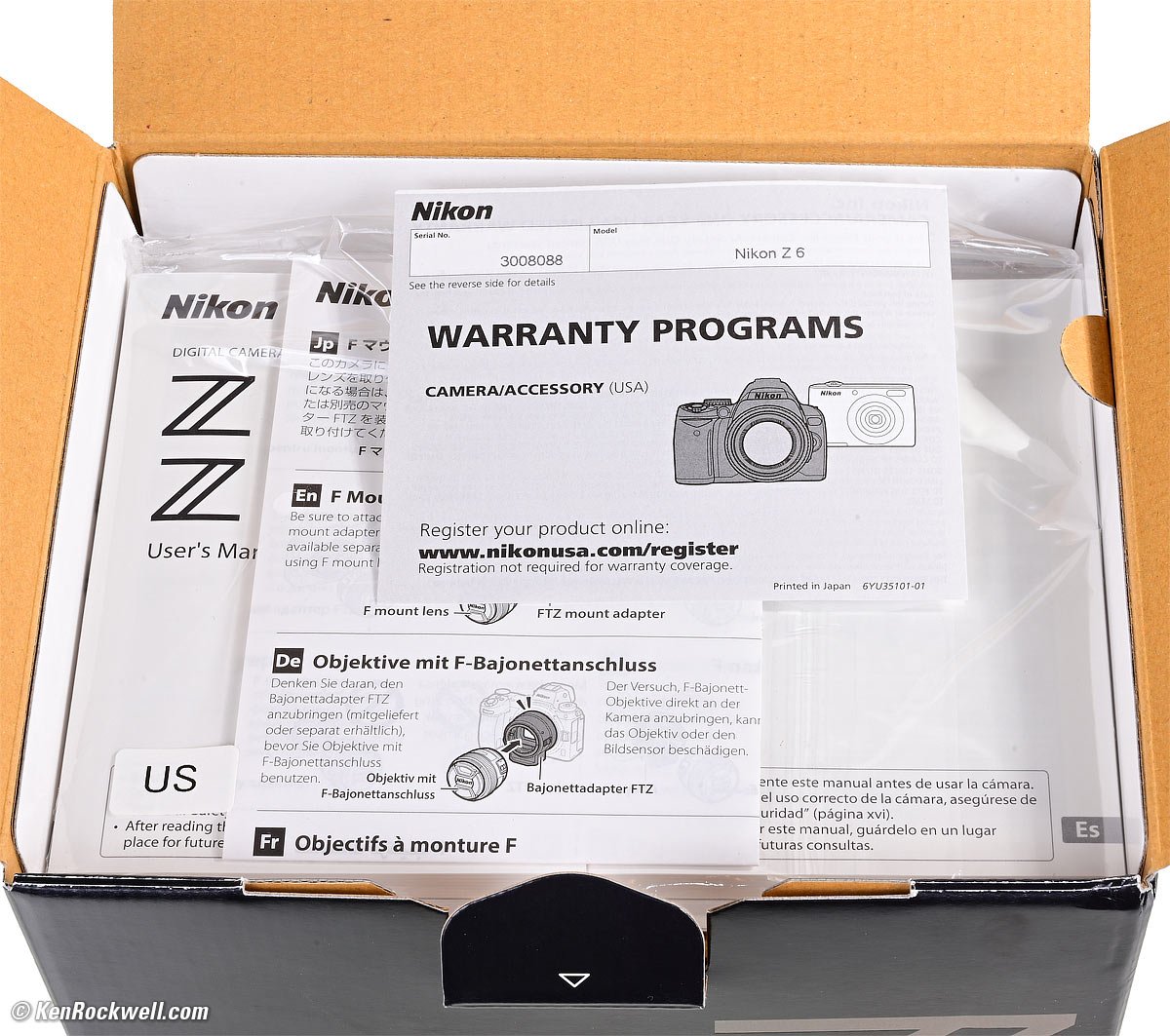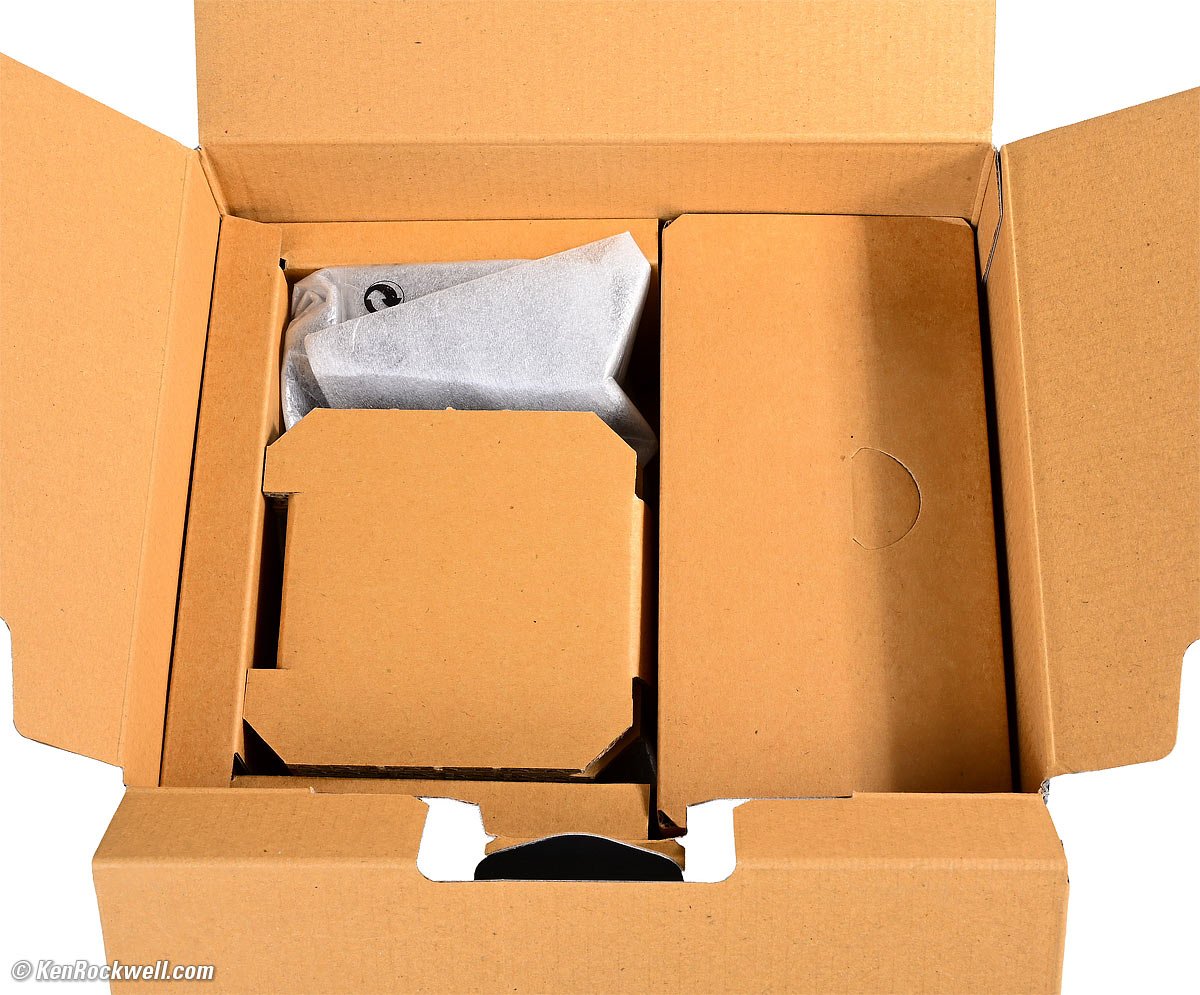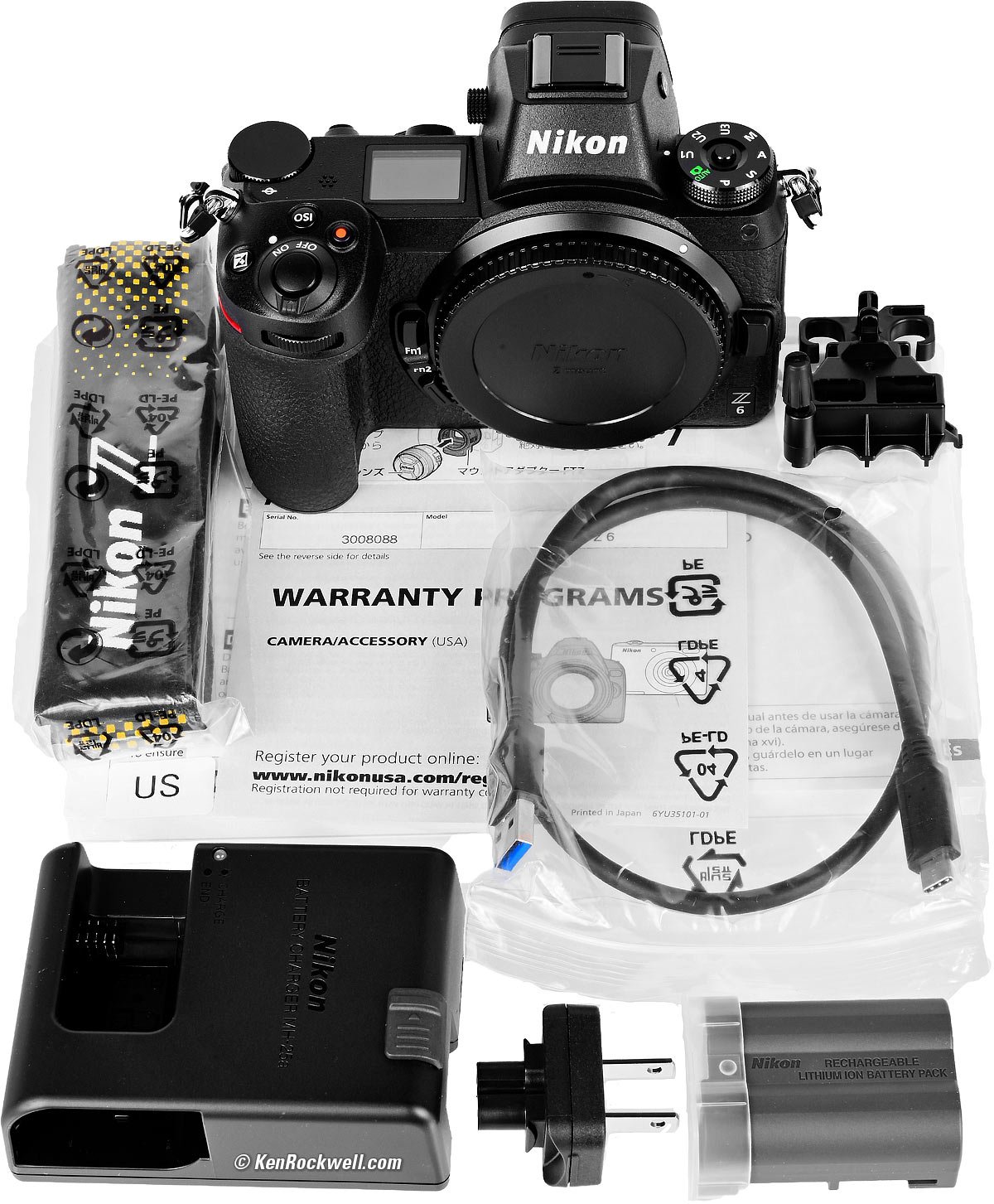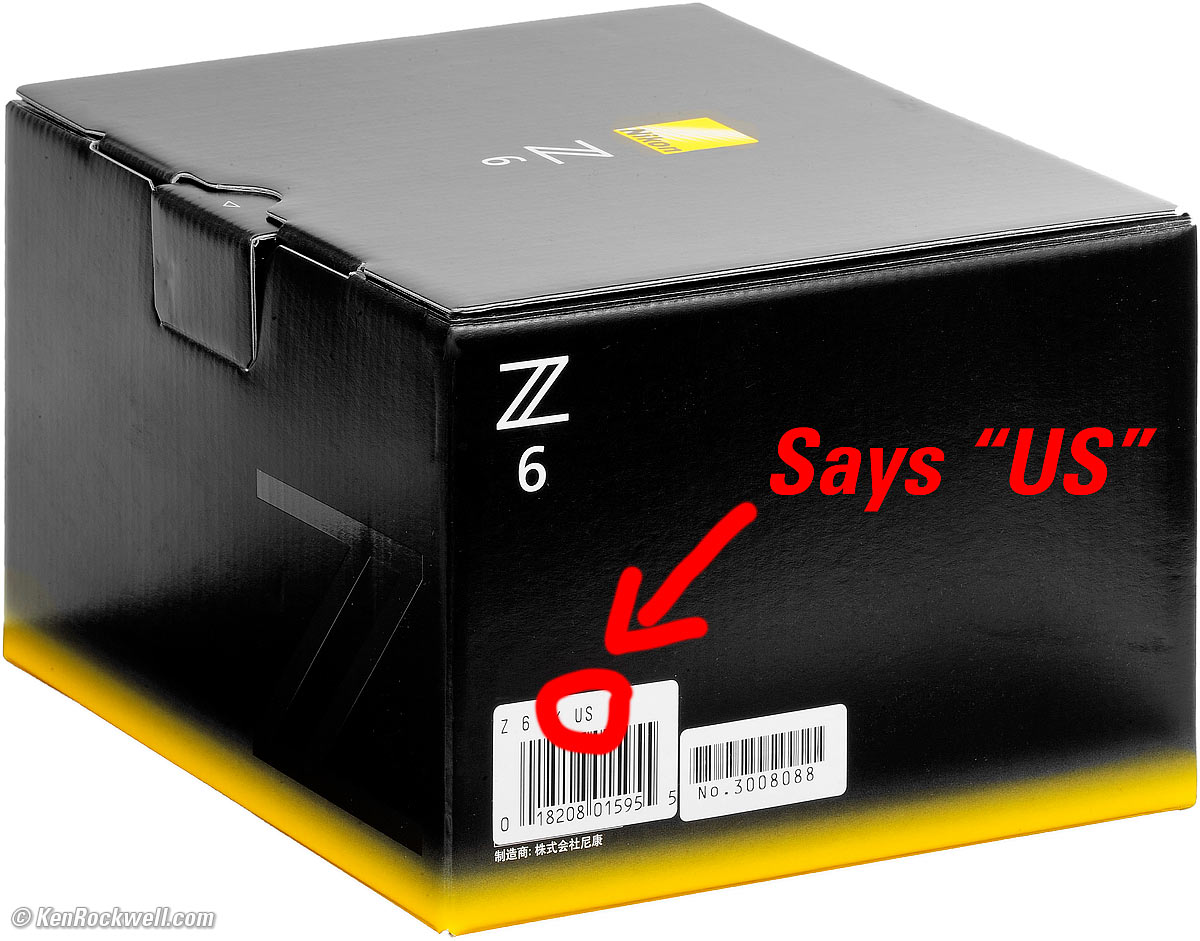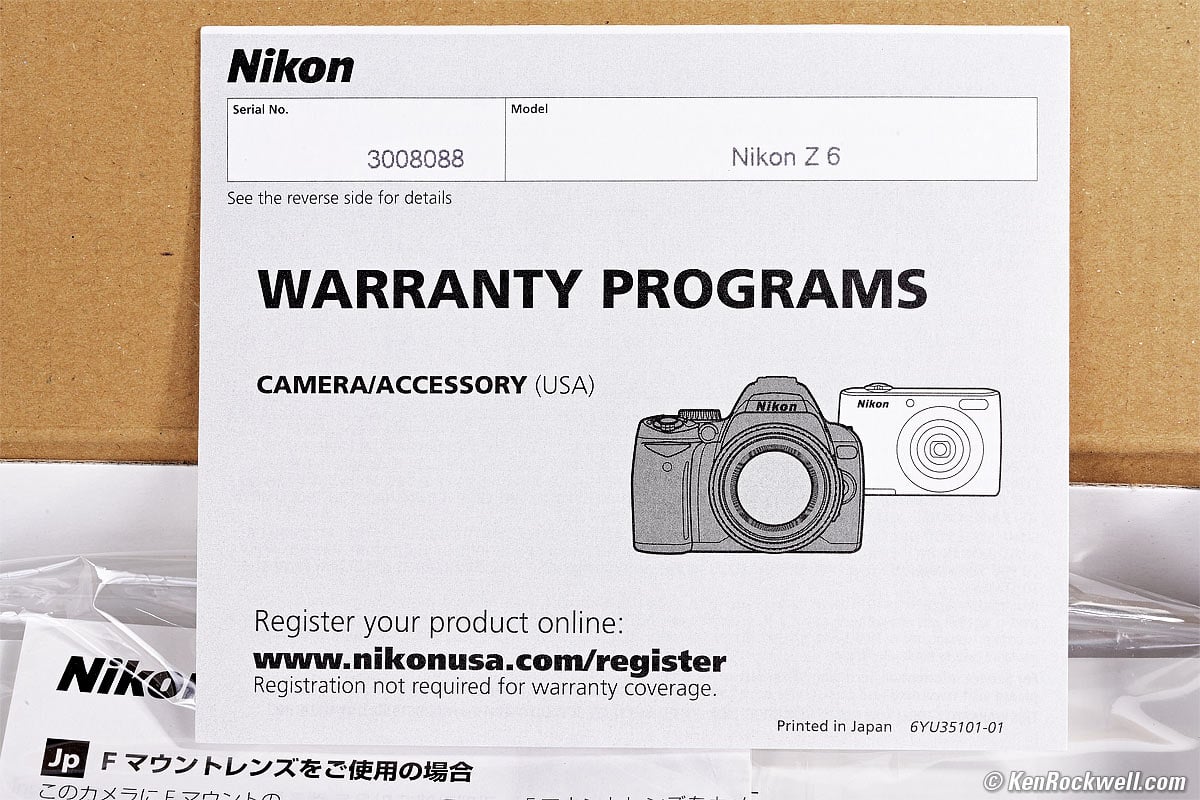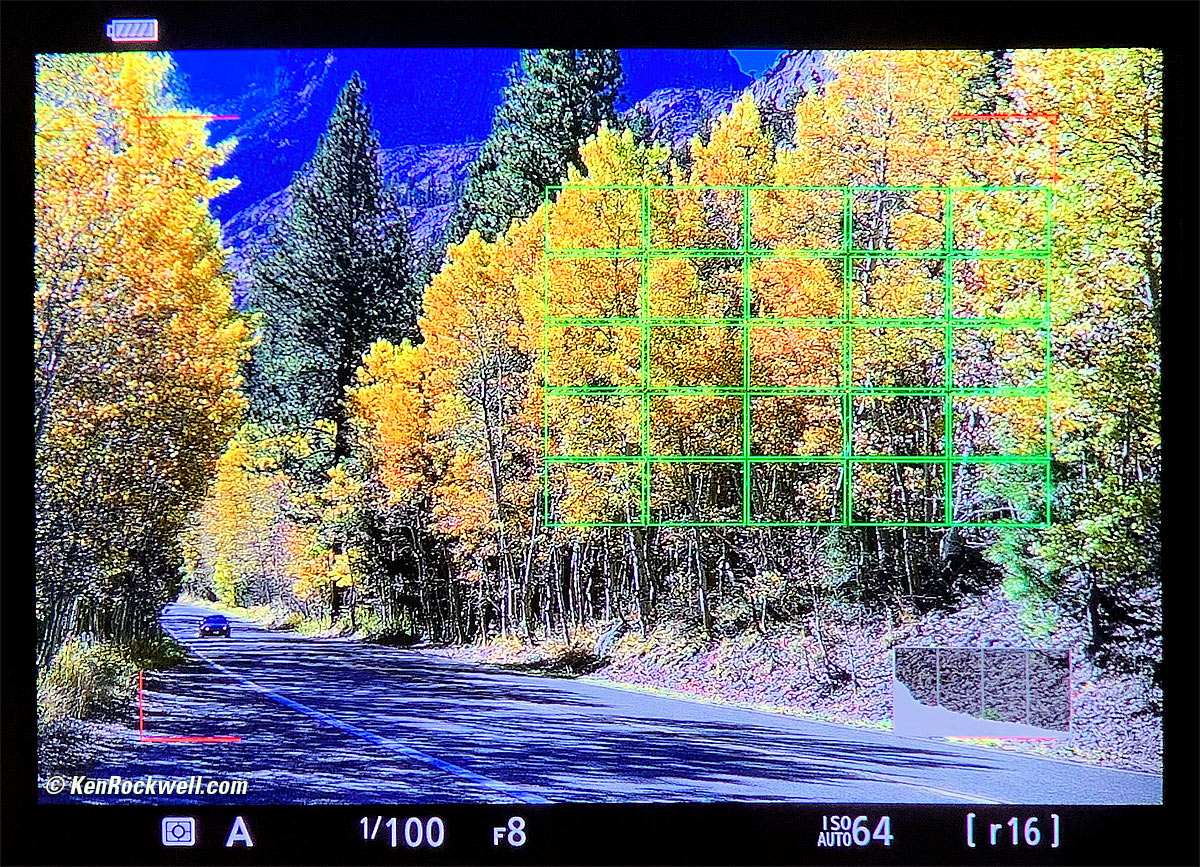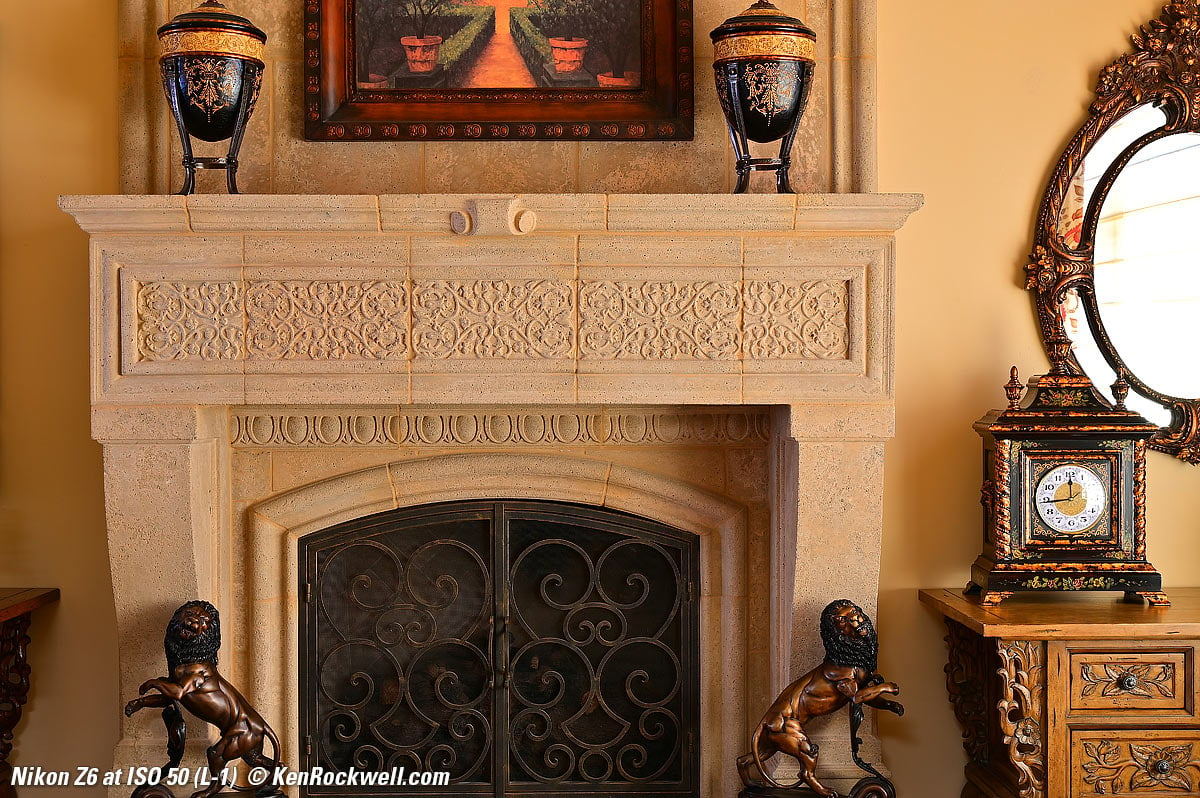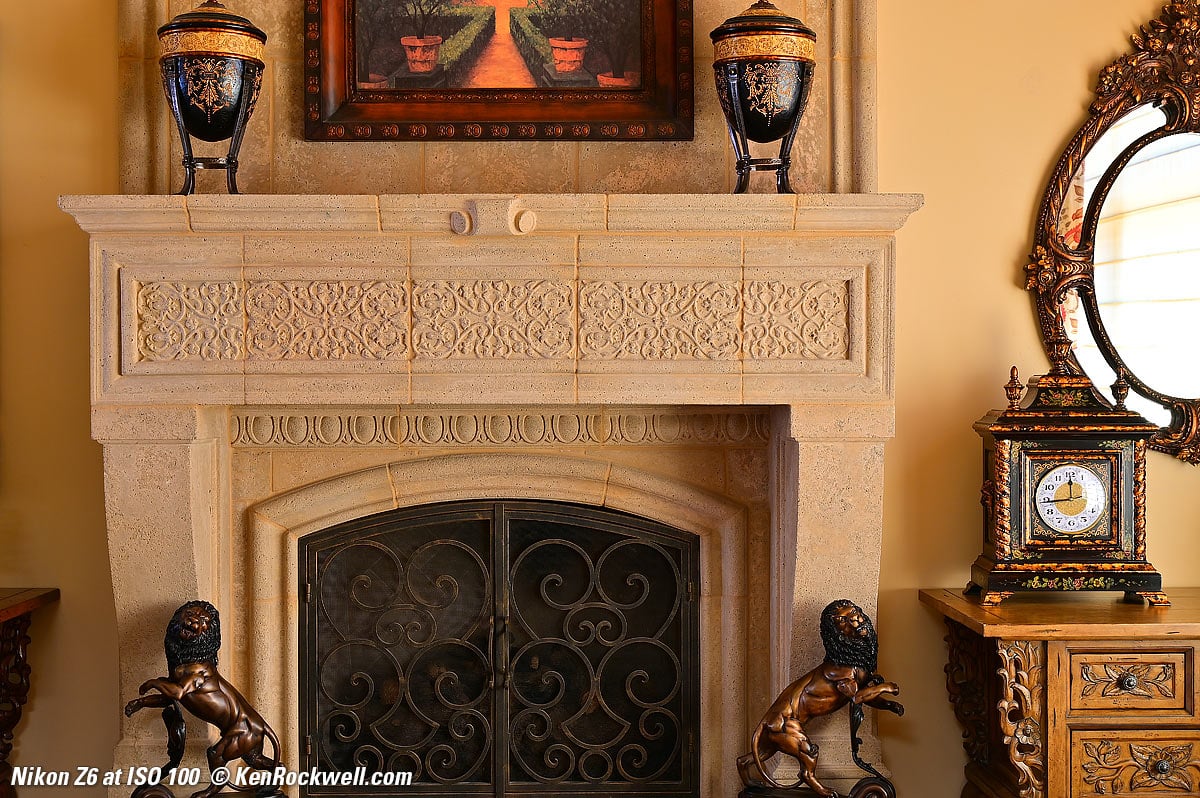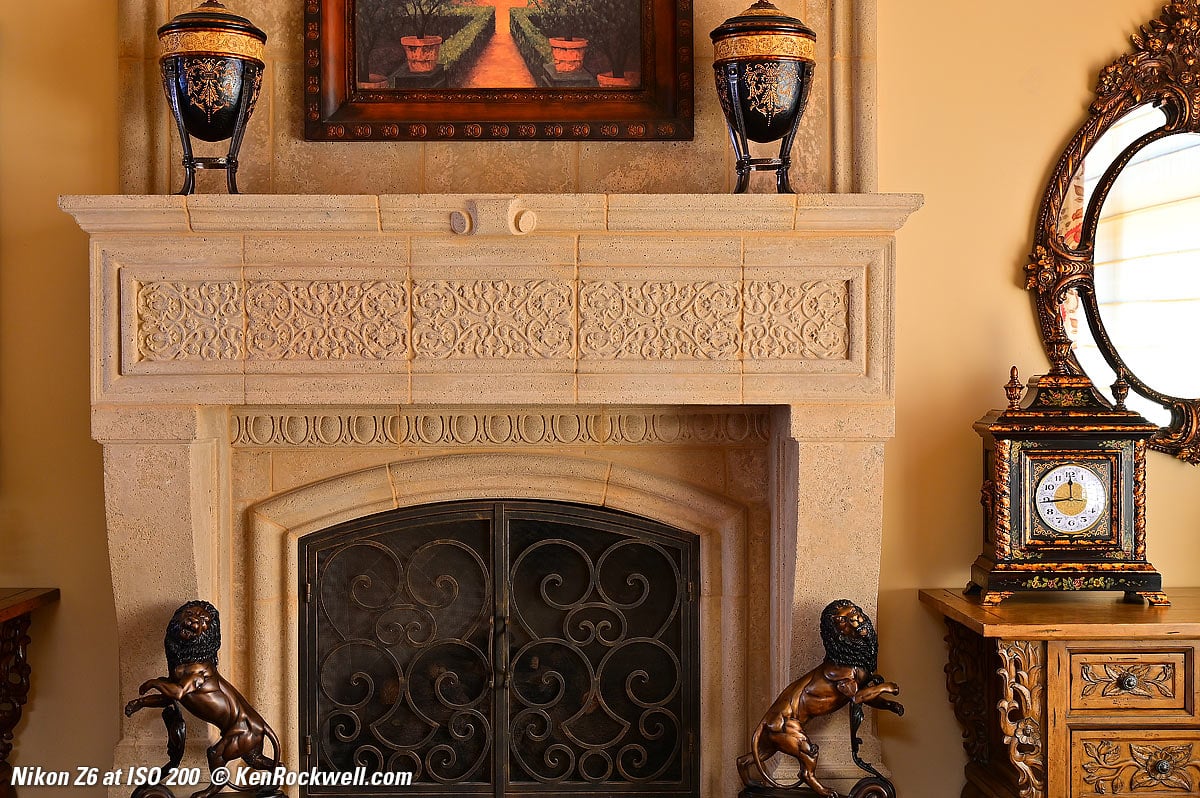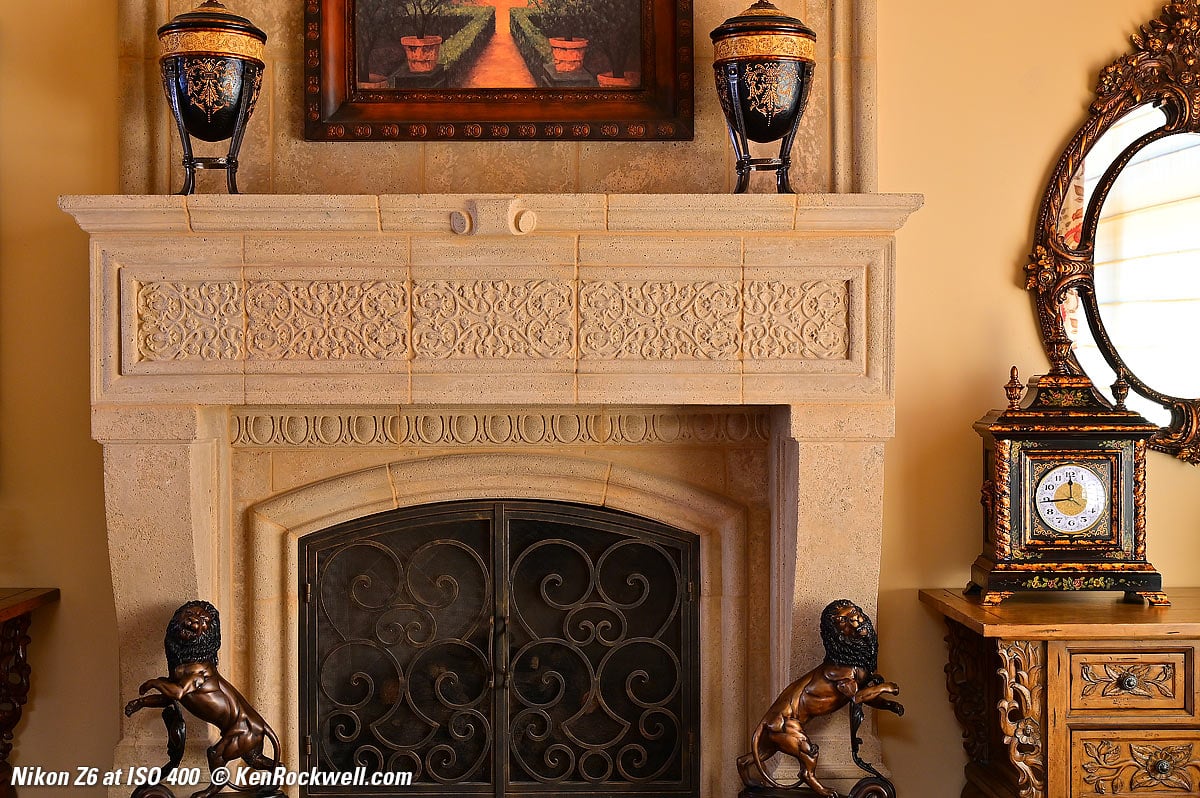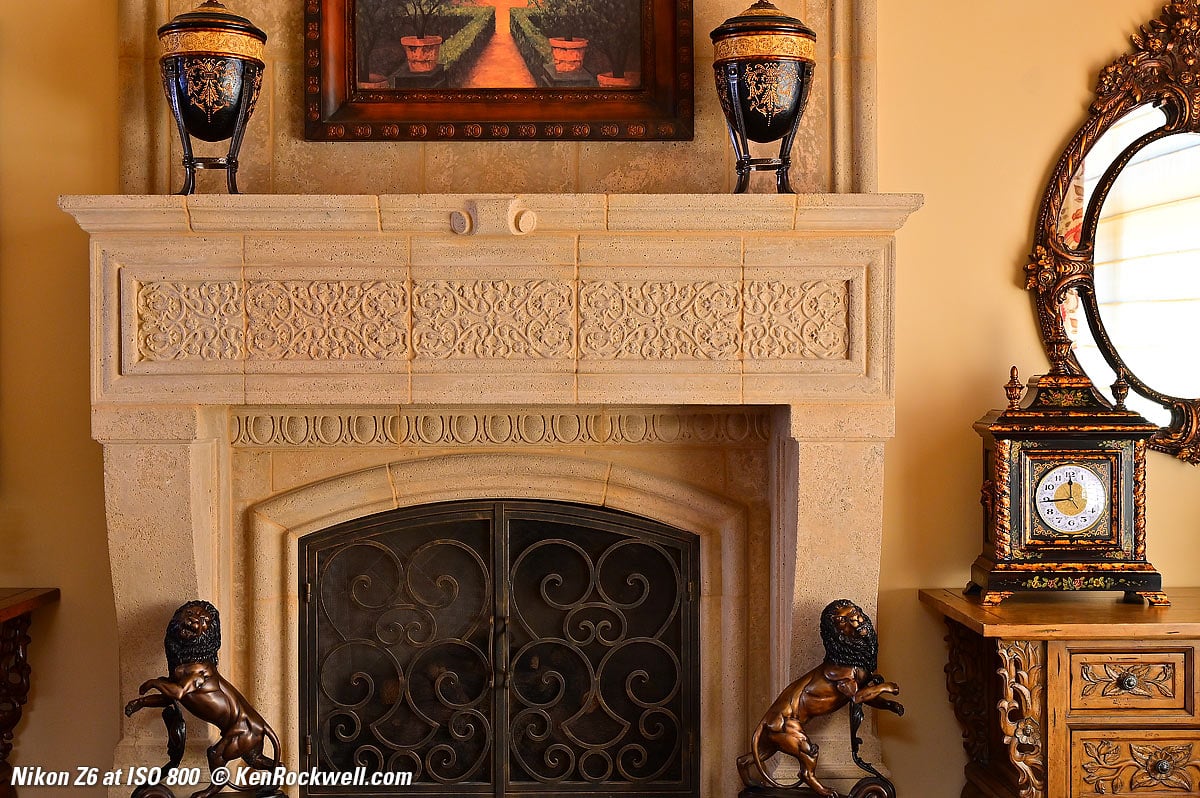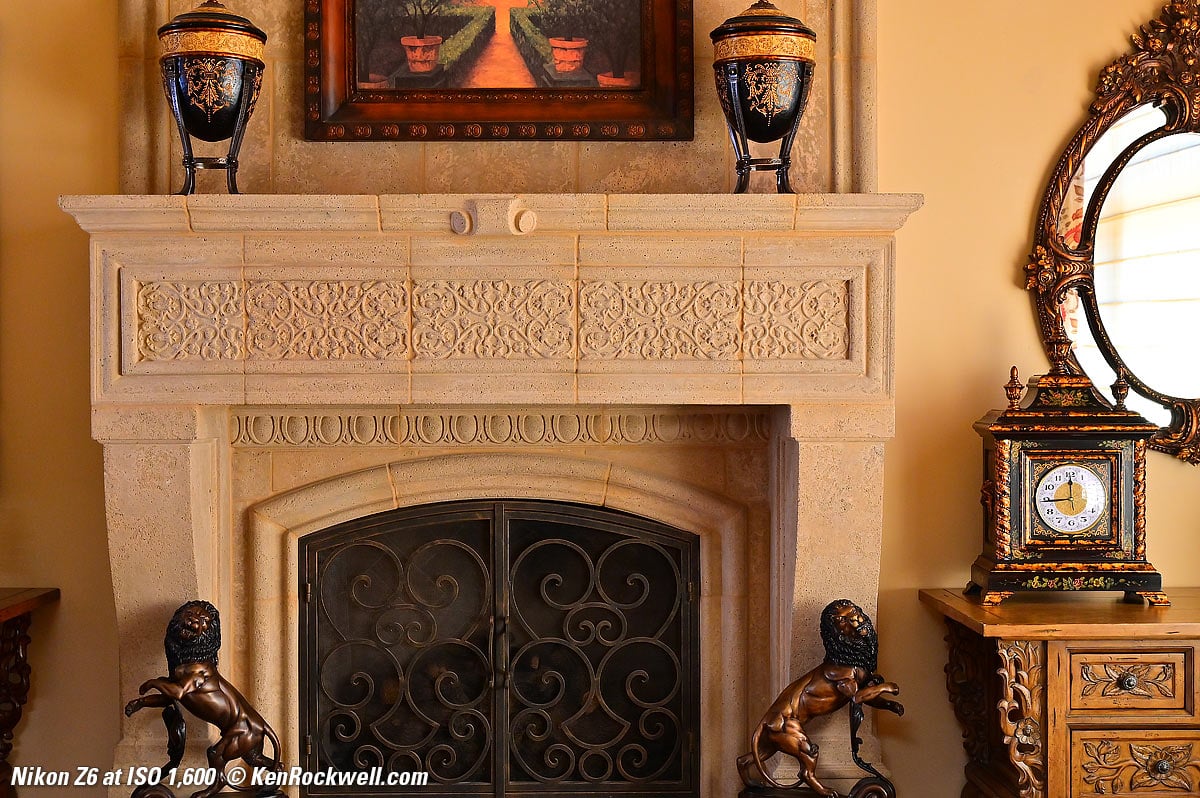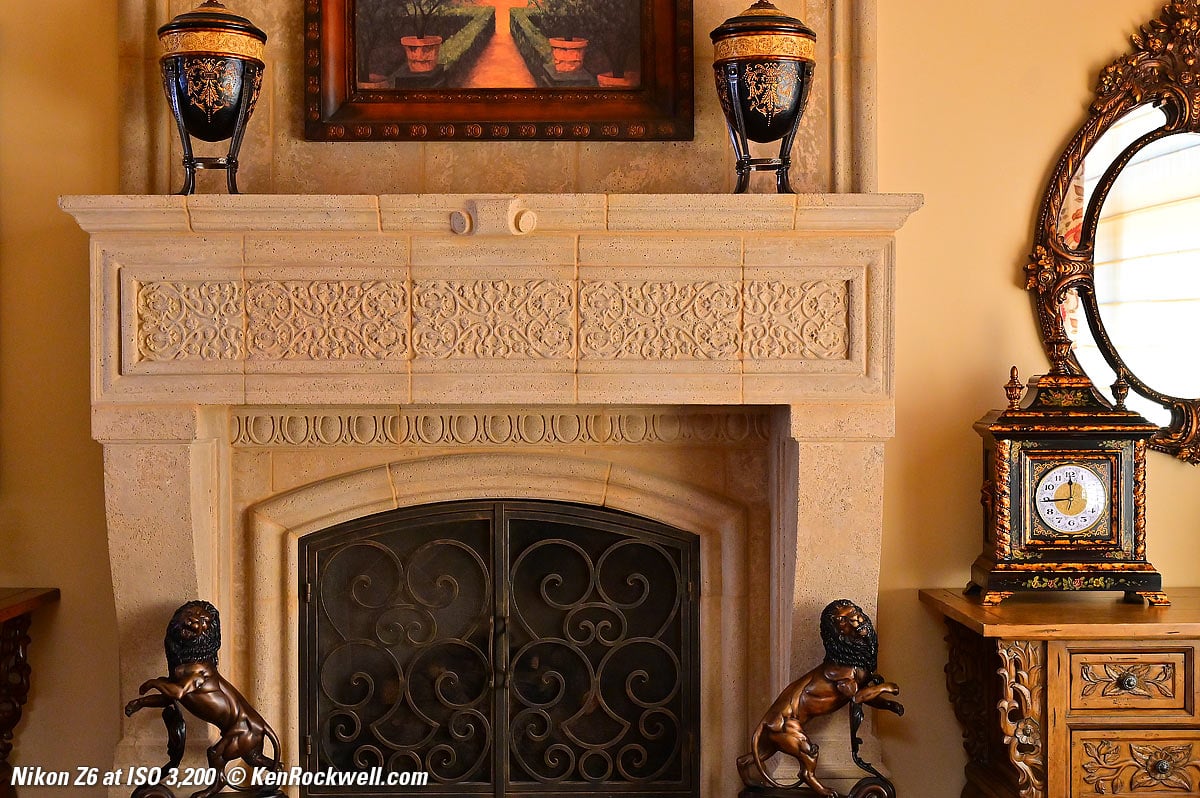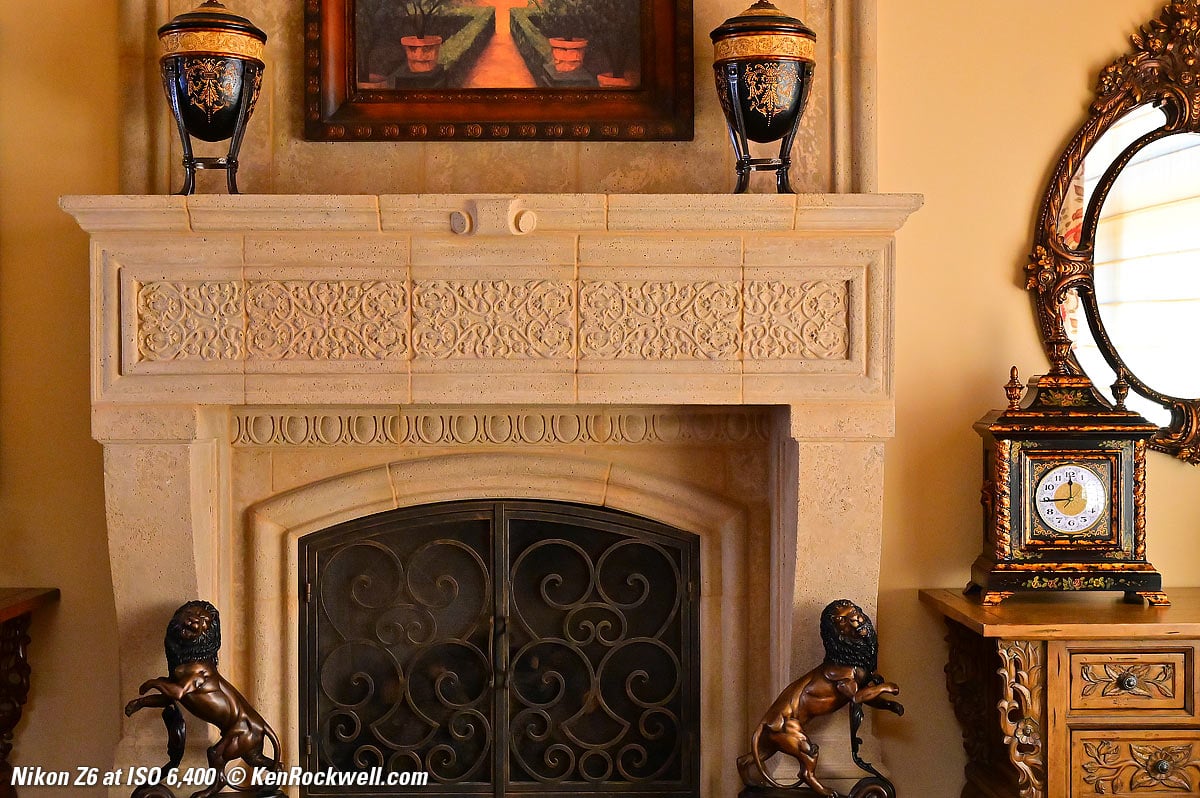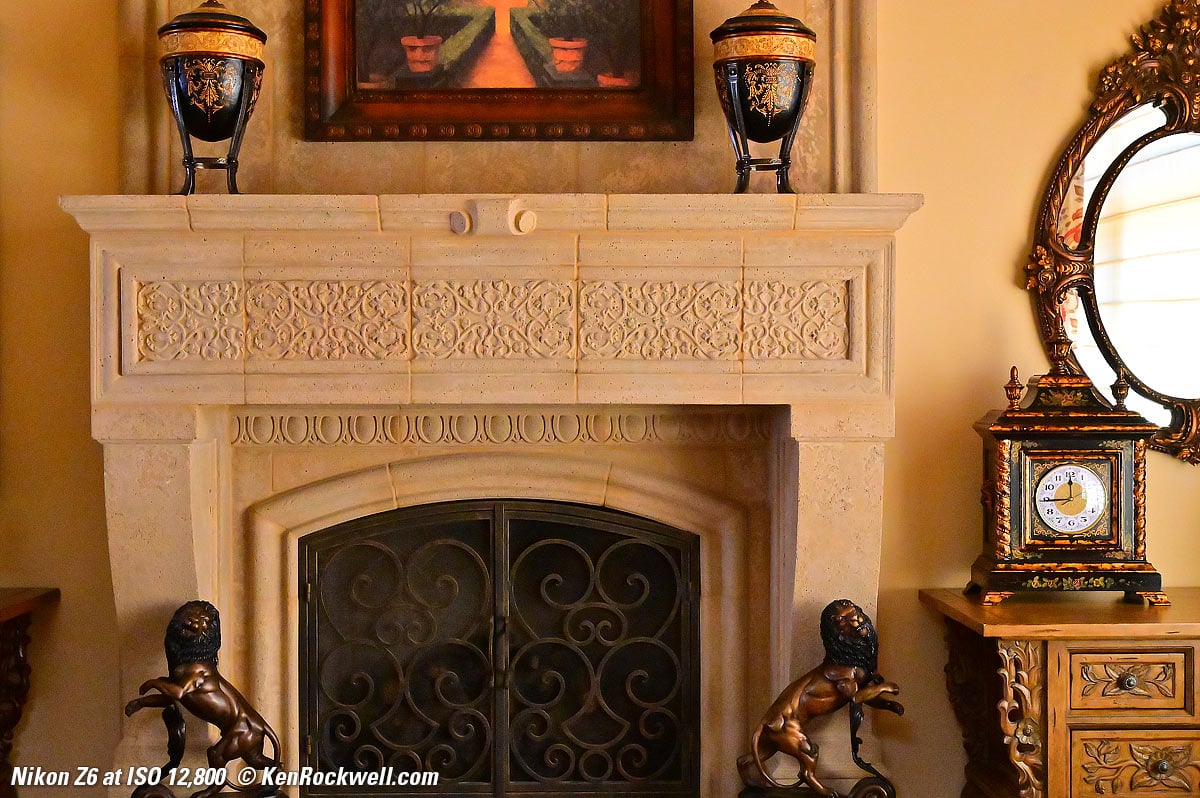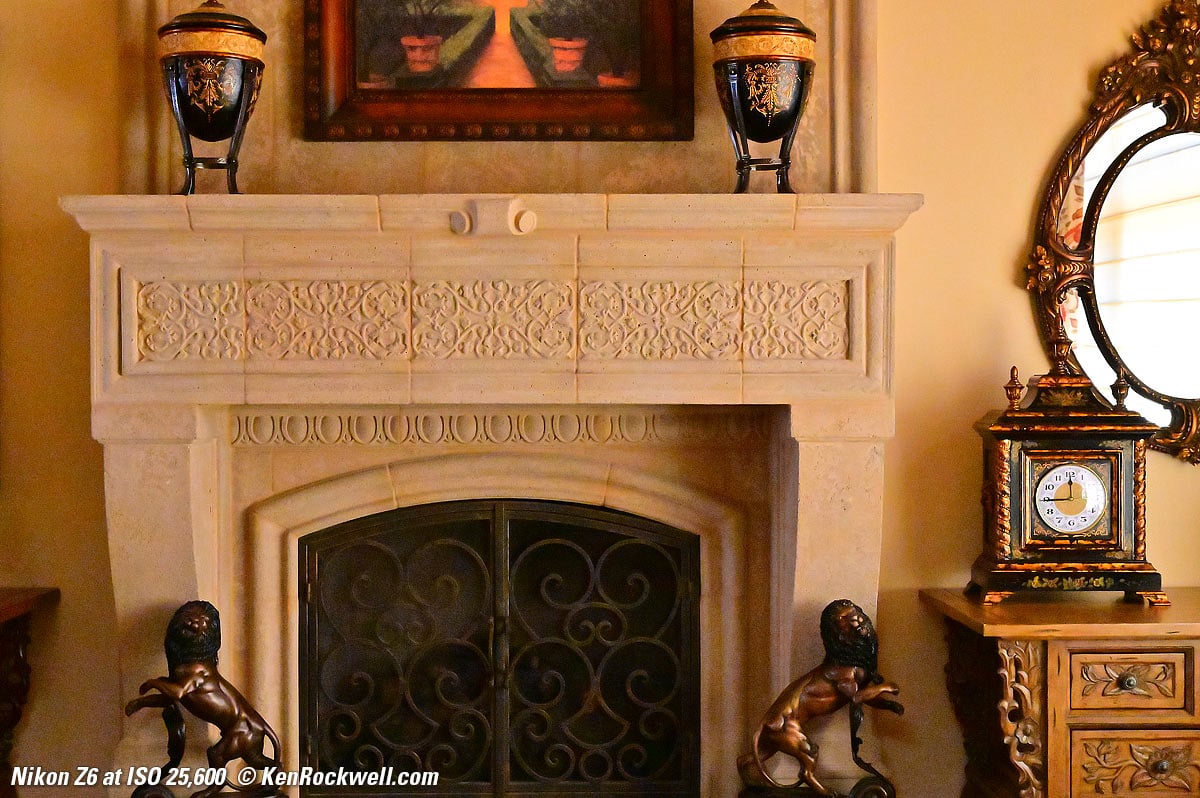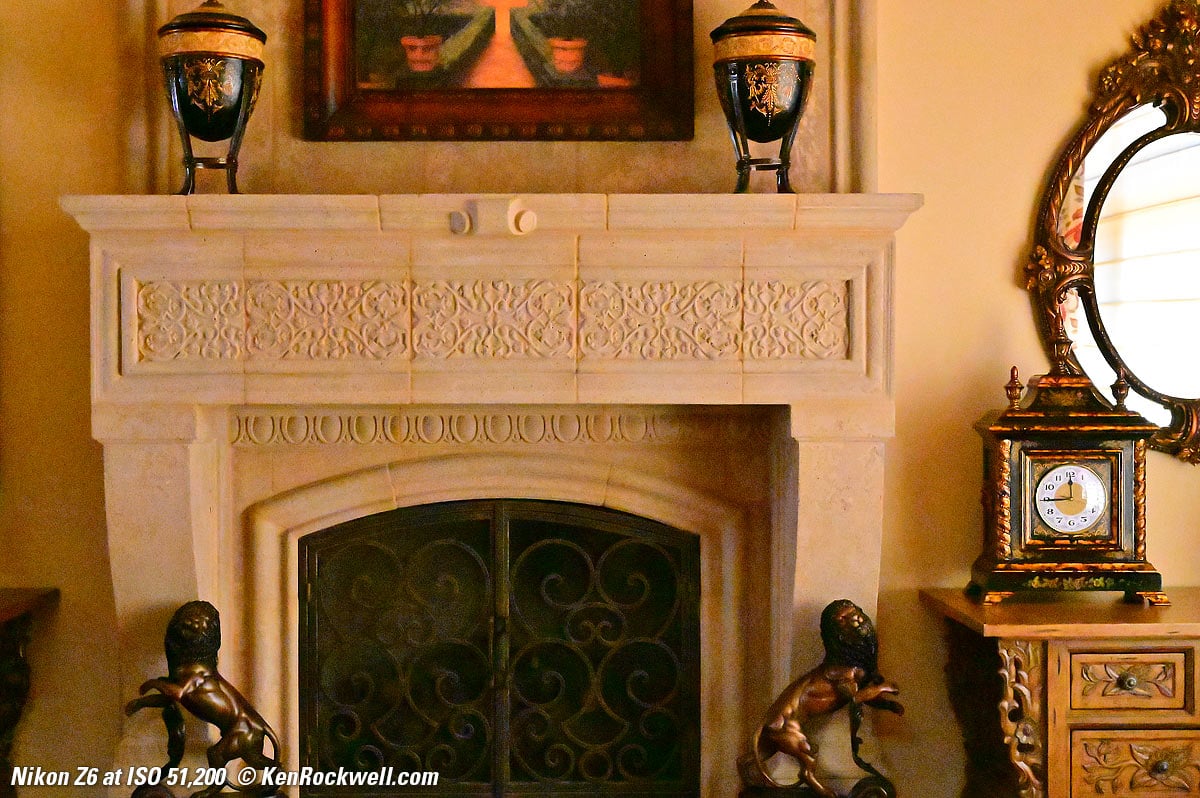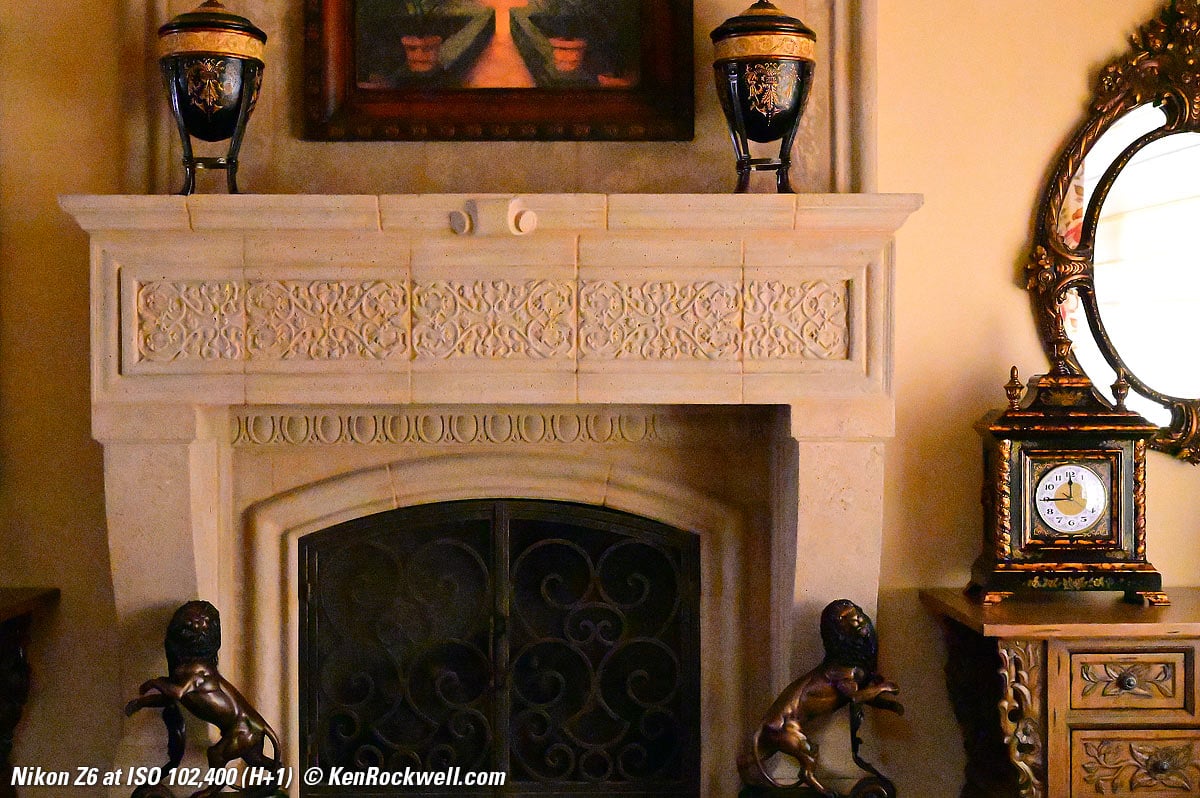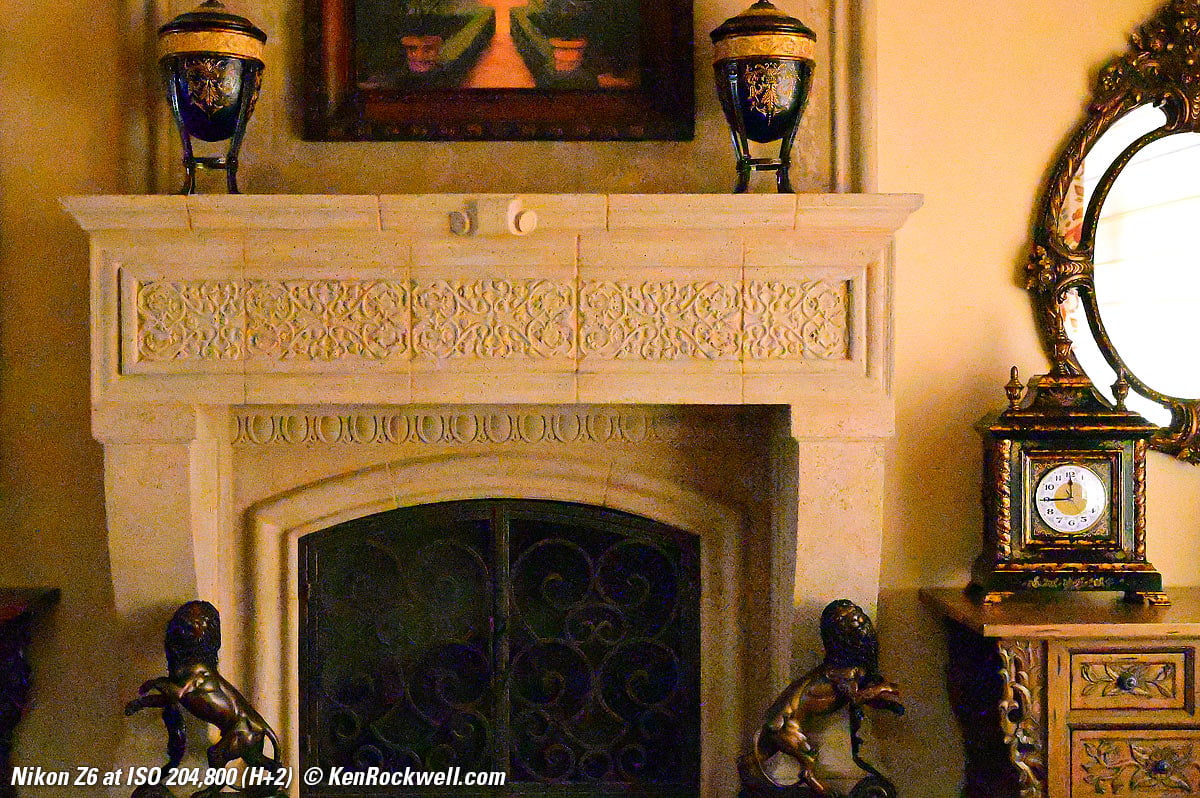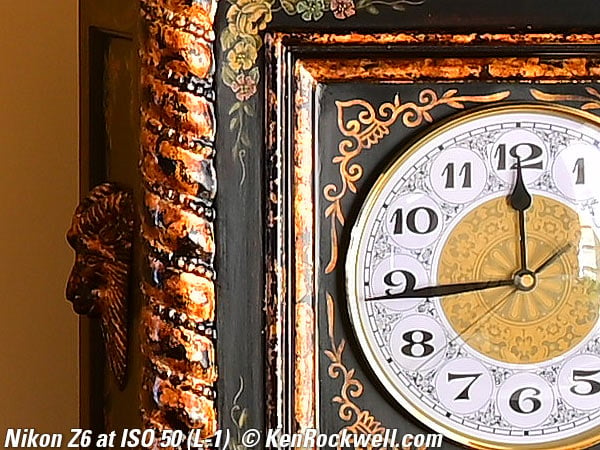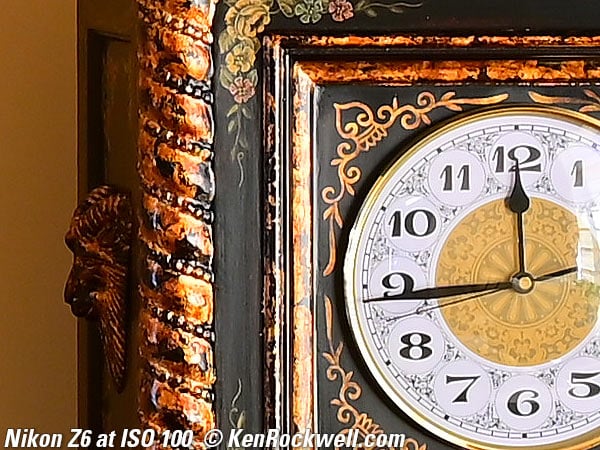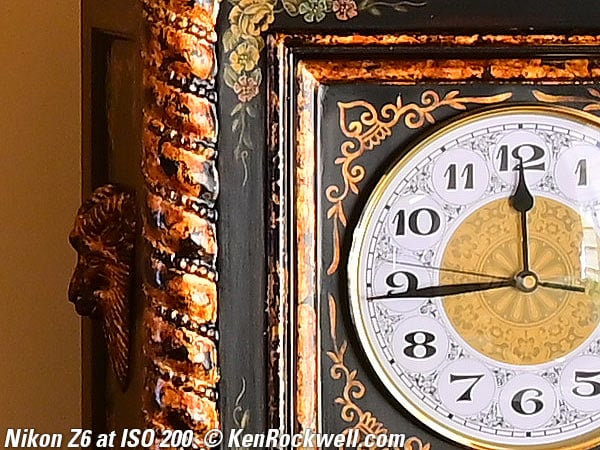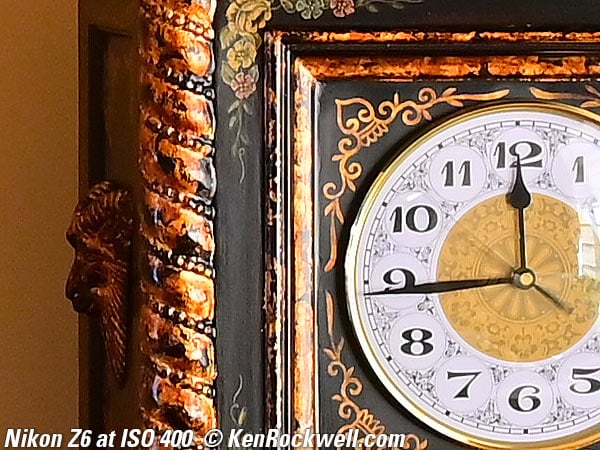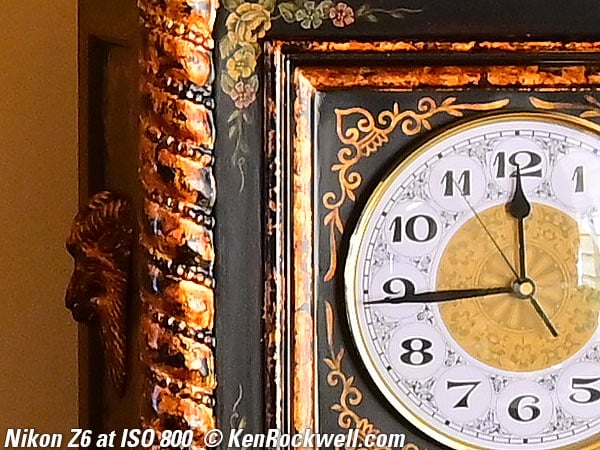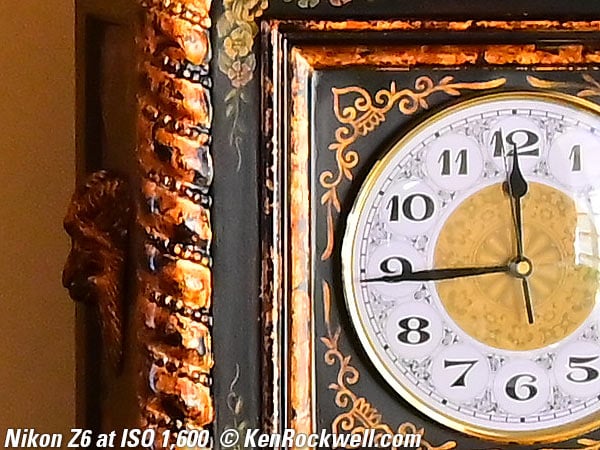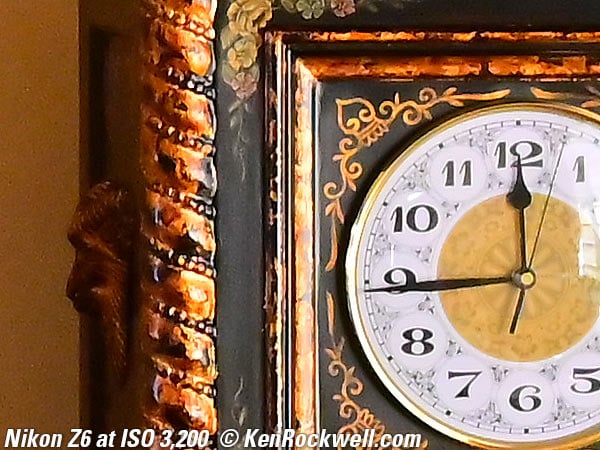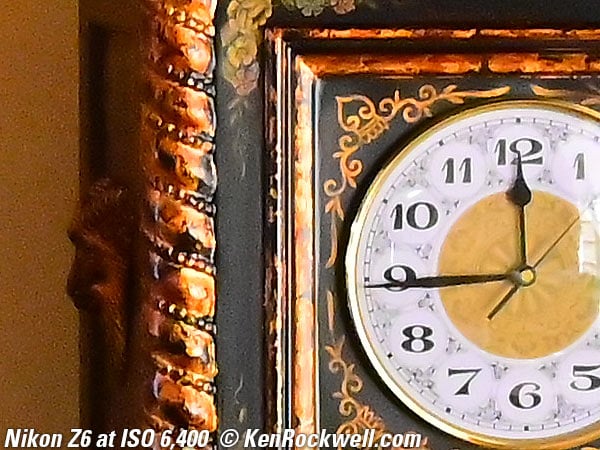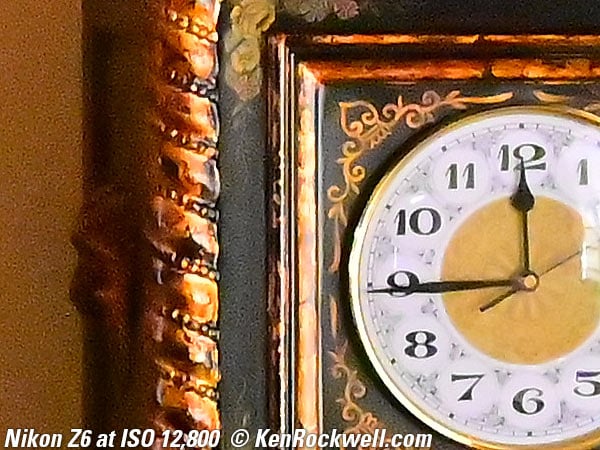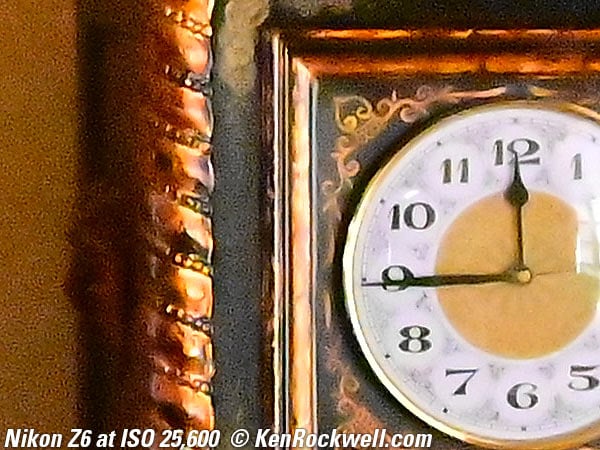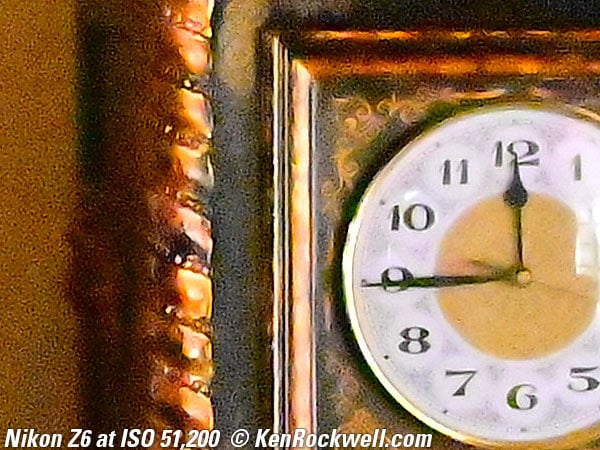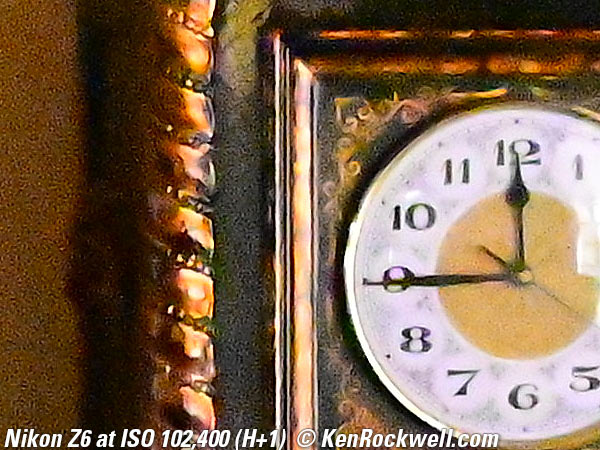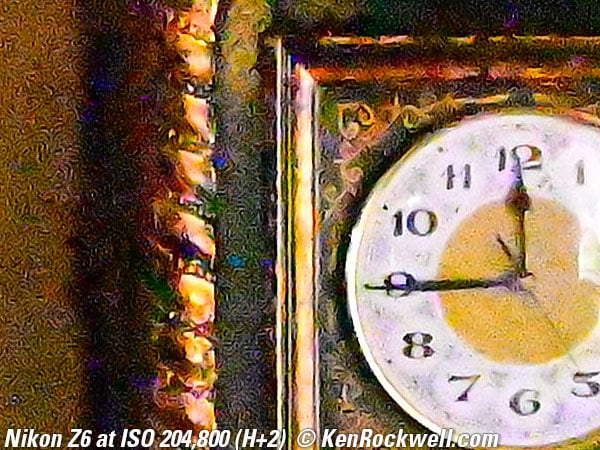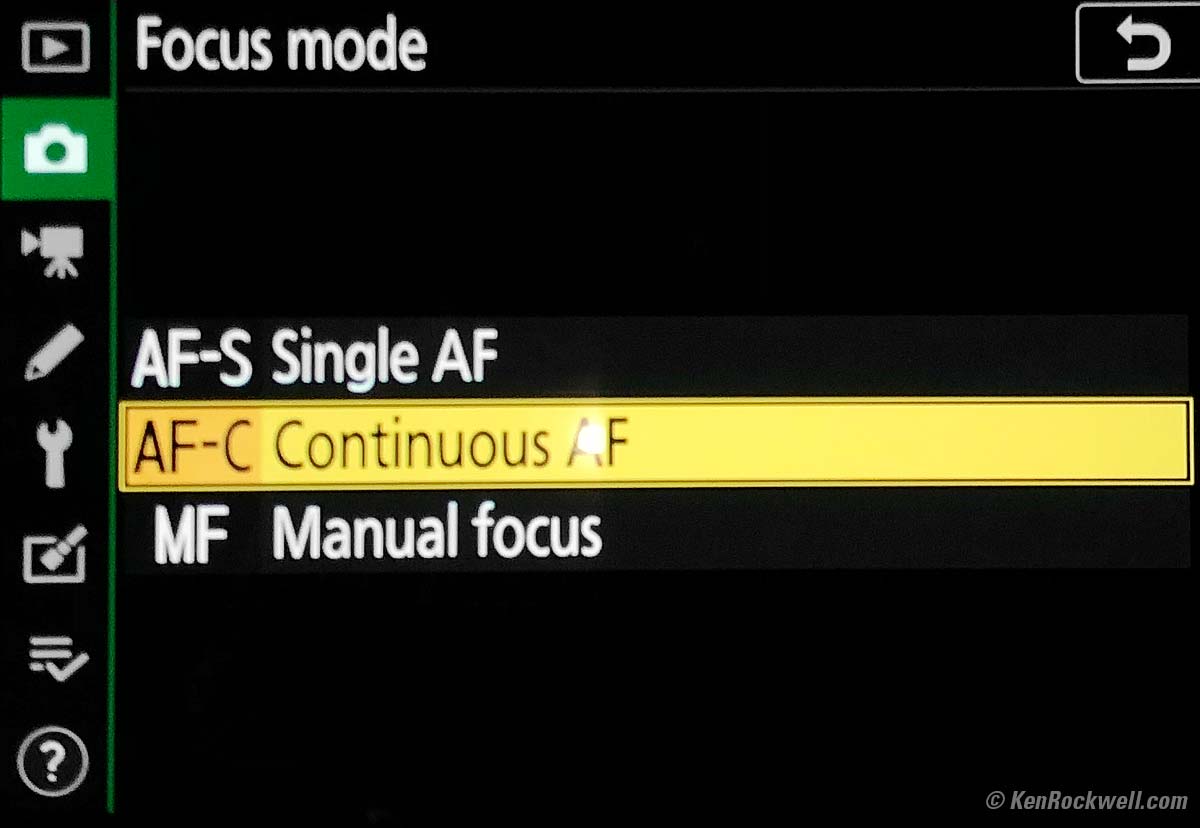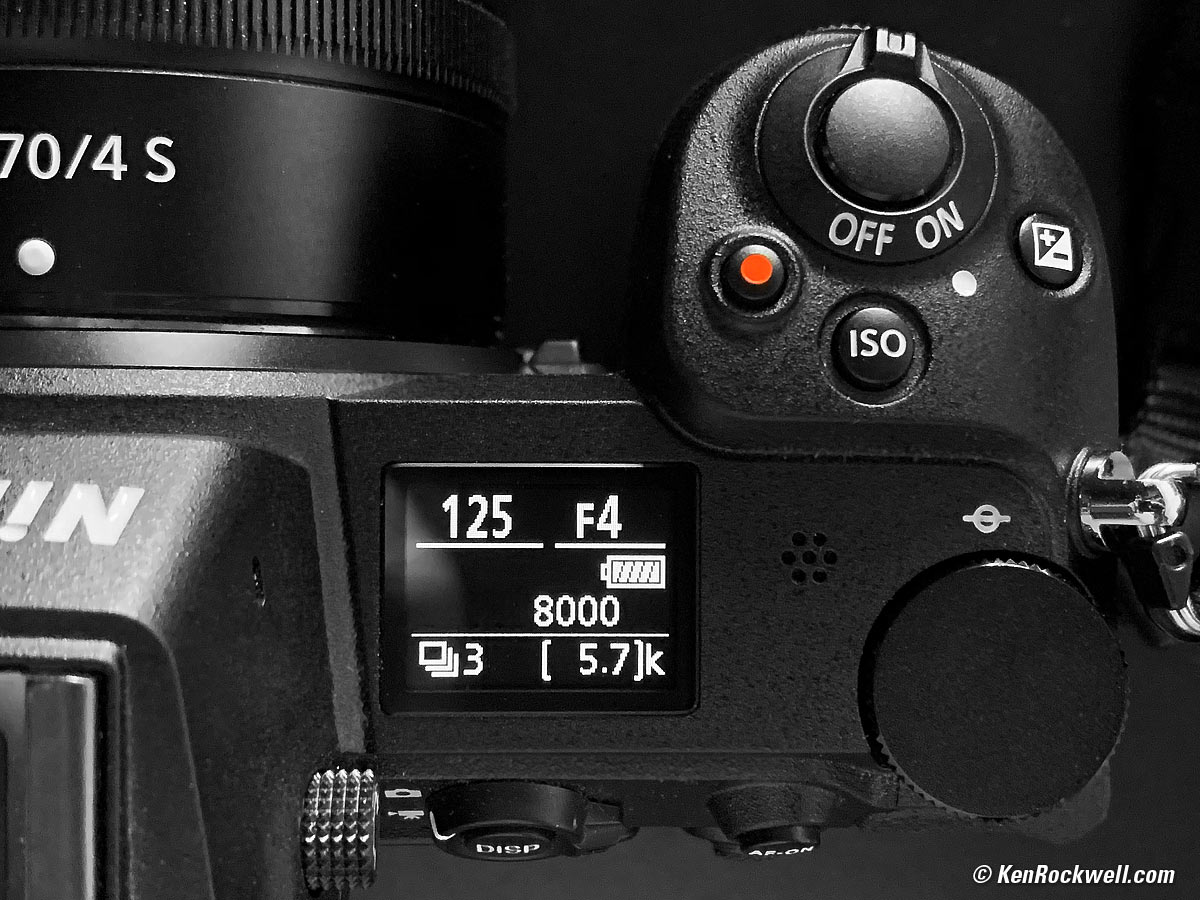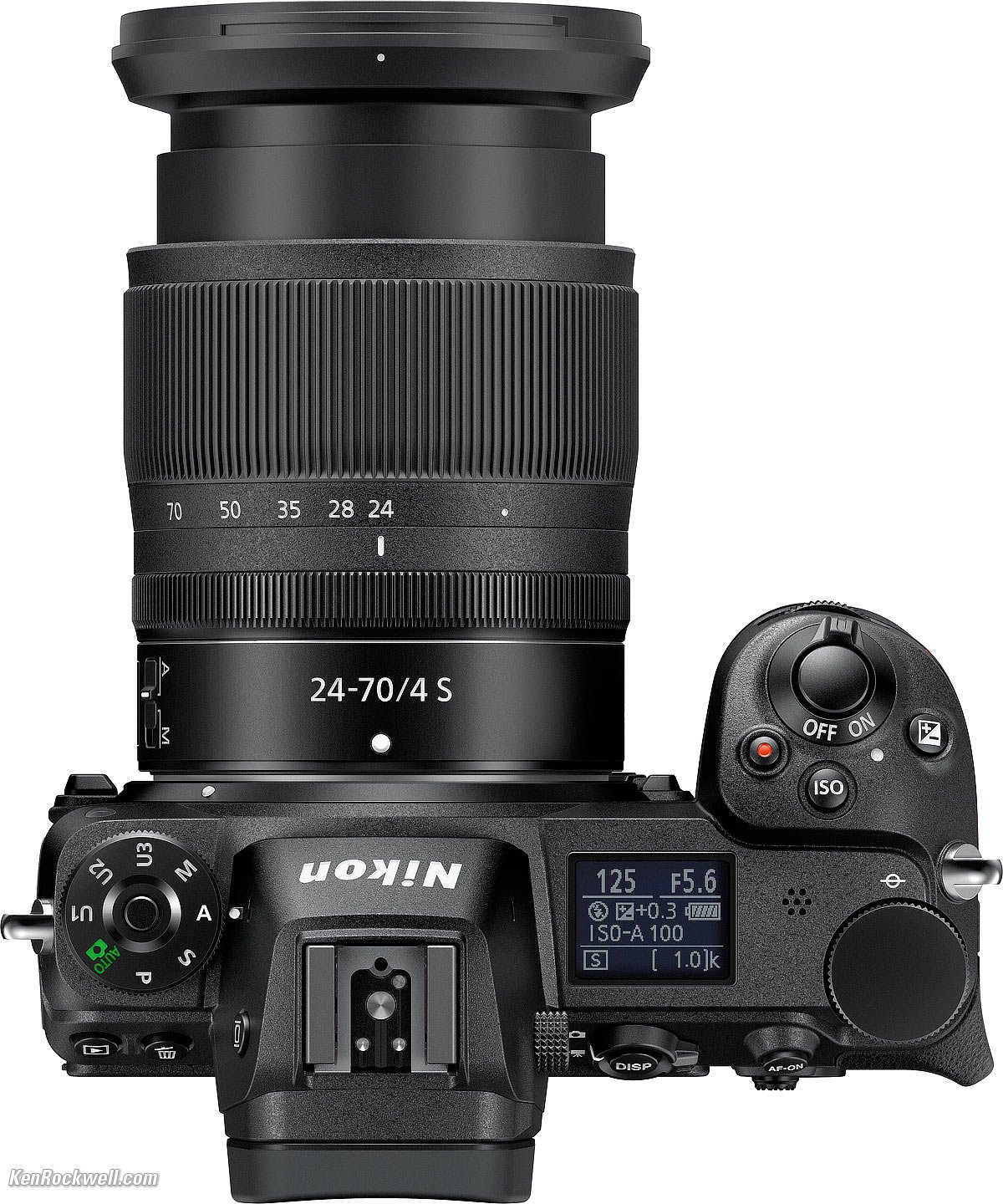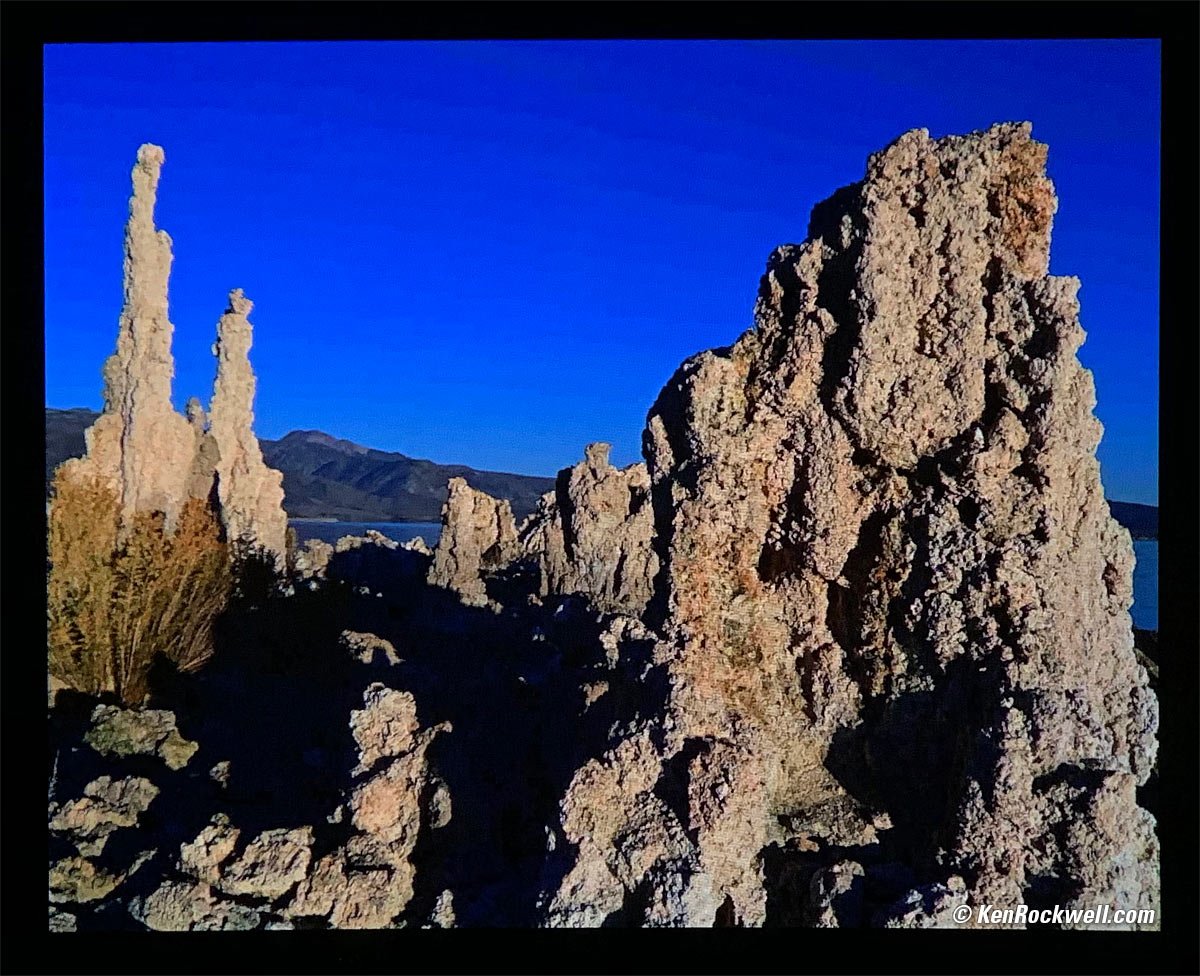Nikon Z6
Mirrorless 24MP FX, IBIS, ISO 50~204,800, Silent 12 FPS
NEW: Nikon Z6 II
Sample Images Intro Lens Compatibility
Adapted Rangefinder Lenses Specifications
Unboxing USA Version Performance
Z9 Z8 Z7 II Z6 II Zf Z7 Z6 Z5 Z fc Z50 Z30
Z System Z Lenses All Nikon Lenses Flash
Nikon Z6 (23.5 oz./667g with battery and XQD card, about $1,000 used if you know How to Win at eBay.) and 24-70mm f/4 S. bigger.
Z6 body-only: $1,697 new at Amazon or about $1,000 used if you know How to Win at eBay.
Z6 with 24-70mm f/4: $2,075 at Amazon and $2,596 at B&H.
This all-content, junk-free website's biggest source of support is when you use those or any of these links to approved sources when you get anything, regardless of the country in which you live. Thanks for helping me help you! Ken.
April 2023, December 2019 Nikon Mirrorless Mirrorless Lenses All Nikon Lenses Nikon Flash All Reviews
Nikon Z6 Plain-English User's Guide
Nikon vs Canon vs Sony Full Frame Mirrorless Compared
Nikon Z6. bigger.
Nikon Z6. bigger.
Sample Images
Top Sample Images Intro Lens Compatibility
Adapted Rangefinder Lenses Specifications
Unboxing USA Version Performance
(more at High ISOs)
These are all shot hand-held as BASIC ★ JPGs; no RAW files, NORMAL or FINE JPGs and especially no tripods were used or needed.
Blue and Green Pool Float, 09 April 2019, 5:27 PM. Nikon Z6, 1946 5cm (50mm) f/2 NIKKOR-H•C on adapters, f/8 at 1/320 at Auto ISO 100, Perfectly Clear. bigger, full-resolution or camera-original © file.
Not bad for an old weathered pool float shot with an over-70-year-old lens. This lens was Nikon's first lens for its first camera made in occupied Japan a year after World War Two. The Z6 lets us adapt this and just about any lens to it for great results, complete with Image Stabilization!
Nikon Z6 and 1946 5cm (50mm) f/2 NIKKOR-H•C used to shoot the photo above. The lens is on a Nikon S rangefinder to LEICA M adapter which is on a second LEICA M to Nikon Z adapter. These adapters all come from eBay. bigger.
With a small zoom like the Nikon Z 24-70mm f/4 I can carry my Z6 everywhere to catch what I see as I run errands. Here are six shots made in three hours as I ran around town with my family, hardly a dedicated photo shoot:
Blue Water, 19 March 2019, 2:31 PM. Nikon Z6, Nikon Z 24-70mm f/4 at 70mm, f/11 at 1/80 at Auto ISO 100, Perfectly Clear. bigger or camera-original © file.
Glass in Dentist's Office, 19 March 2019, 3:49 PM. Nikon Z6, Nikon Z 24-70mm f/4 at 52mm, f/4 at 1/60 at Auto ISO 900, Perfectly Clear. bigger, full-resolution or camera-original © file.
Liquor, 19 March 2019, 4:49 PM. Nikon Z6, Nikon Z 24-70mm f/4 at 45mm, f/8 at hand-held at 1/13 at ISO 800, Perfectly Clear. bigger or full-resolution.
Benihana, 19 March 2019, 4:54 PM. Nikon Z6, Nikon Z 24-70mm f/4 at 24mm, f/4 at 1/25 at Auto ISO 100, Perfectly Clear. bigger or full-resolution.
Las Vegas Roll, 19 March 2019, 5:00 PM. Nikon Z6, Nikon Z 24-70mm f/4 at 70mm, f/16 at 1/40 at Auto ISO 12,800, Perfectly Clear. bigger, full-resolution or camera-original © file.
Exploding Teppan Grill Volcano Flame, Benihana, 19 March 2019, 5:45 PM. Nikon Z6, Nikon Z 24-70mm f/4 at 70mm, f/4 at 1/40 at Auto ISO 1,250, Perfectly Clear. bigger or camera-original © file.
Helvetica, 06 April 2019. Nikon Z6, Nikon Z 24-70mm f/4 at 48mm, f/6.3 at 1/160 at Auto ISO 100, Perfectly Clear. bigger or full-resolution or camera-original © file.
Orange Granite on Green Grass, 06 April 2019. Nikon Z6, Nikon Z 24-70mm f/4 at 42mm, f/11 at 1/30 at Auto ISO 100, Perfectly Clear. bigger or full-resolution.
A Visit with the LEICAMAN on Lake Constance (Ein Besuch im der LEICAMAN am Bodensee), Lindau, Bavaria, 06 April 2019. Nikon Z6, Nikon Z 24-70mm f/4 at 70mm, f/11 at 1/30 at Auto ISO 100, Perfectly Clear. bigger or full-resolution.
Introduction
Top Sample Images Intro Lens Compatibility
Adapted Rangefinder Lenses Specifications
Unboxing USA Version Performance
|
I buy only from these approved sources. I can't vouch for ads below. |
The Nikon Z6, along with its higher-resolution sister the Nikon Z7, has the same great Nikon feel, handling and image quality we've all come to love — except now in mirrorless form! The Z6 has all the usual Nikon controls in the usual places.
The Z6 has a full-frame sensor in a camera that weighs less than a DX D7500, and is built to the same standards as the D850.
It has hybrid phase & contrast autofocus over the entire frame, or over at least 90% of the frame, which is the same as the entire frame since you never put a point of interest on a frame line.
There is a new series of lenses for it, and of course there is an FTZ lens mount adapter so we can use our F-mount lenses. The short flange focal distance means you old-timers from the 1940s and 1950s will be able to mount your original S-mount Nikon rangefinder lenses (as well as LEICA M lenses). We can't do this with DSLRs because their mounts are too deep, but with the short mount of cameras without mirrors it's just a matter of time until someone makes these adapters.
The Z6 has sensor-shift image stabilization, and it works great, even with ancient 1940s rangefinder lenses!
This is huge milestone for Nikon that happens only once every couple of decades. Nikon's first 35mm camera was its Nikon S rangefinder system of 1946, its first SLR was the Nikon F of 1959 that was the world's first hugely popular SLR system on whose coattails Nikon still rides today, and the world's first real DSLR was the Nikon D1 of 1999. This is the biggest thing Nikon's done in this millennium.
Now with Nikon making pro mirrorless cameras that handle like real cameras, feel good in our hands, work like they're supposed to and offer Nikon's superior color rendition, Fuji can return to focusing on their core film and photo paper businesses and Sony can get back to innovating again in TVs and stereos. It might be time to sell your Sonys on eBay while they still get top dollar.
I got my Z6 at Adorama. I'd also get it at Amazon, at B&H or at Crutchfield.
New
 Nikon's first full-frame mirrorless, along with the Nikon Z7.
Nikon's first full-frame mirrorless, along with the Nikon Z7.
 Full Frame Autofocus. You have sensors all over the entire frame!
Full Frame Autofocus. You have sensors all over the entire frame!
 Electronic finder shows what you're shooting, and it also can show all the menus and playback and magnified images!
Electronic finder shows what you're shooting, and it also can show all the menus and playback and magnified images!
 Perfect focus accuracy every time, especially at f/1.4! Focus is read directly from the sensor, so there is never any potential error (other than your own ineptitude) and never any need for AF fine tuning. DSLR and SLR systems always have some small error because the focus is read from AF sensors coupled with mirrors, which always have some mechanical error needing adjustment. For the first time we can shoot our f/1.4 and f/0.95 lenses with perfect accuracy.
Perfect focus accuracy every time, especially at f/1.4! Focus is read directly from the sensor, so there is never any potential error (other than your own ineptitude) and never any need for AF fine tuning. DSLR and SLR systems always have some small error because the focus is read from AF sensors coupled with mirrors, which always have some mechanical error needing adjustment. For the first time we can shoot our f/1.4 and f/0.95 lenses with perfect accuracy.
 Completely silent operation.
Completely silent operation.
 In-camera five-axis image stabilization adds 5-stop VR to Nikkor Z lenses and adds 3 stops of VR to everything else.
In-camera five-axis image stabilization adds 5-stop VR to Nikkor Z lenses and adds 3 stops of VR to everything else.
 3,686,400 dot OLED finder: 100% coverage, 0.80× magnification, 37º apparent angle of view.
3,686,400 dot OLED finder: 100% coverage, 0.80× magnification, 37º apparent angle of view.
 No need for the rear LCD or top OLED; you can see everything through the finder.
No need for the rear LCD or top OLED; you can see everything through the finder.
 Crud-resistant fluorine-coated finder eyepiece.
Crud-resistant fluorine-coated finder eyepiece.
 New "Z" lens mount with ultra-short 16.00mm flange-sensor distance which uses a new BF-N1 body cap.
New "Z" lens mount with ultra-short 16.00mm flange-sensor distance which uses a new BF-N1 body cap.
 Larger 55mm diameter lens mount allows crazy-fast lenses, like a new f/0.95, to be designed and used.
Larger 55mm diameter lens mount allows crazy-fast lenses, like a new f/0.95, to be designed and used.
 New FTZ lens mount adapter for traditional F mount SLR and DSLR lenses.
New FTZ lens mount adapter for traditional F mount SLR and DSLR lenses.
 20 new gimmick Picture Controls, each with a 0~100% strength option.
20 new gimmick Picture Controls, each with a 0~100% strength option.
 "Mid-range" sharpening option.
"Mid-range" sharpening option.
 4K UHD (3,840 × 2,160/29.97p) 10-bit N-log video with timecode.
4K UHD (3,840 × 2,160/29.97p) 10-bit N-log video with timecode.
 1,920 × 1,080 at 120 FPS.
1,920 × 1,080 at 120 FPS.
 Takes an XQD card, not SD and not CF.
Takes an XQD card, not SD and not CF.
 MB-N10 multi-battery grip for two EN-EL15b is under development.
MB-N10 multi-battery grip for two EN-EL15b is under development.
Good
 Full Frame Autofocus. You have sensors all over the entire frame!
Full Frame Autofocus. You have sensors all over the entire frame!
 Excellent in-camera sensor-shift image-stabilization works great with any lens of any brand.
Excellent in-camera sensor-shift image-stabilization works great with any lens of any brand.
 Optional setting for completely silent operation.
Optional setting for completely silent operation.
 Three user presets on the top dial: U1, U2 and U3. Hallelujah!
Three user presets on the top dial: U1, U2 and U3. Hallelujah!
 Optional square 1:1 and 16:9 crops as-shot. I usually shoot in 1:1 since the native 3:2 is usually to long and skinny for me, and with square images I never have to turn the camera to shoot verticals.
Optional square 1:1 and 16:9 crops as-shot. I usually shoot in 1:1 since the native 3:2 is usually to long and skinny for me, and with square images I never have to turn the camera to shoot verticals.
 Ultra-short 16mm Flange Focal Distance (FFD) allows all other brands of DSLR, SLR and rangefinder lenses to be adapted to it.
Ultra-short 16mm Flange Focal Distance (FFD) allows all other brands of DSLR, SLR and rangefinder lenses to be adapted to it.
 HDR.
HDR.
 Flicker shoot-through, possibly the first mirrorless camera to be able to do this.
Flicker shoot-through, possibly the first mirrorless camera to be able to do this.
 Superior Nikon image quality for colors and dynamic range. No longer do we have to settle for inferior Sony or Fuji color rendition just to get mirrorless!
Superior Nikon image quality for colors and dynamic range. No longer do we have to settle for inferior Sony or Fuji color rendition just to get mirrorless!
 We can use our entire bank of over 70 years of Nikon rangefinder, SLR and DSLR lenses, with the FTZ lens mount adapter for Nikon F lenses and third-party adapters for everything else — and the camera adds VR to non-VR lenses!
We can use our entire bank of over 70 years of Nikon rangefinder, SLR and DSLR lenses, with the FTZ lens mount adapter for Nikon F lenses and third-party adapters for everything else — and the camera adds VR to non-VR lenses!
 Crud-resistant fluorine-coated finder eyepiece.
Crud-resistant fluorine-coated finder eyepiece.
 Aspherical eyepiece elements.
Aspherical eyepiece elements.
 Wi-Fi and Bluetooth.
Wi-Fi and Bluetooth.
 Multiple exposures.
Multiple exposures.
 Uses standard EN-EL15 and EN-EL15a batteries from Nikon's DSLRs, as well as its included newer EN-EL15b.
Uses standard EN-EL15 and EN-EL15a batteries from Nikon's DSLRs, as well as its included newer EN-EL15b.
 Uses standard WT-7/A/B/C wireless transmitters.
Uses standard WT-7/A/B/C wireless transmitters.
 Flash system fully compatible with Nikon's existing DSLR flashes, with both optical and radio remote control.
Flash system fully compatible with Nikon's existing DSLR flashes, with both optical and radio remote control.
Bad
 The new FTZ adapter autofocuses only with Nikon's newest lenses with a built-in AF motor (AF-S and AF-P). It does not autofocus with any other lenses. The FTZ is a dud for those of us with a large collection of Nikon lenses because it only works (autofocuses or indexes properly) with about half of them. Nikon likes to forget to mention that all traditional AF and AF-D (screw-type) lenses will not autofocus. The FTZ works very poorly with manual-focus F, AI , AI'd and AI-s lenses, having no diaphragm control meaning you have to open and close the diaphragm manually for precise focus before and after each shot, has no exposure or EXIF data so you have no in-finder indication of aperture and have no EXIF aperture data, and there is no Matrix metering, Program or Shutter-priority automation with manual-focus lenses — which offer all these functions and more if used on 1984's Nikon FA! Worse, the Z6's automatic viewfinder brightness varies all over the place as you change the aperture on a manual lens. F, AI , AI'd, AI-s, AF and AF-D lenses, many of which Nikon still sells new today, work much better on any FX DSLR like a D750. Poo!
The new FTZ adapter autofocuses only with Nikon's newest lenses with a built-in AF motor (AF-S and AF-P). It does not autofocus with any other lenses. The FTZ is a dud for those of us with a large collection of Nikon lenses because it only works (autofocuses or indexes properly) with about half of them. Nikon likes to forget to mention that all traditional AF and AF-D (screw-type) lenses will not autofocus. The FTZ works very poorly with manual-focus F, AI , AI'd and AI-s lenses, having no diaphragm control meaning you have to open and close the diaphragm manually for precise focus before and after each shot, has no exposure or EXIF data so you have no in-finder indication of aperture and have no EXIF aperture data, and there is no Matrix metering, Program or Shutter-priority automation with manual-focus lenses — which offer all these functions and more if used on 1984's Nikon FA! Worse, the Z6's automatic viewfinder brightness varies all over the place as you change the aperture on a manual lens. F, AI , AI'd, AI-s, AF and AF-D lenses, many of which Nikon still sells new today, work much better on any FX DSLR like a D750. Poo!
 Face-recognition works poorly, making this a bad camera for photographing groups of people. While it recognizes faces well, what it can't do is identify which of many faces is the correct face on which to focus. Therefore it usually picks a random face in the background, giving an out-of-focus picture. Yes, you can click the rear controller left and right to select among the faces manually, but as anyone who shoots for a living can tell you, we don't have to time to select among ten faces when other cameras like Sony and Canon and Fuji and especially my iPhone all just find the correct face automatically. I usually get better shots of groups of fast-moving kids at school on my iPhone Xs Max.
Face-recognition works poorly, making this a bad camera for photographing groups of people. While it recognizes faces well, what it can't do is identify which of many faces is the correct face on which to focus. Therefore it usually picks a random face in the background, giving an out-of-focus picture. Yes, you can click the rear controller left and right to select among the faces manually, but as anyone who shoots for a living can tell you, we don't have to time to select among ten faces when other cameras like Sony and Canon and Fuji and especially my iPhone all just find the correct face automatically. I usually get better shots of groups of fast-moving kids at school on my iPhone Xs Max.
 Auto AF-Area Select works poorly; this and the Z7 are the only cameras I've used with AF intelligence so bad that they will ignore a big, closer, subject in the middle of the frame and deliberately and consistently prefer to focus on random background items in the corners unless I grab the manual focus ring and bring the subject into focus myself first. Other cameras or an iPhone is much better at this important item.
Auto AF-Area Select works poorly; this and the Z7 are the only cameras I've used with AF intelligence so bad that they will ignore a big, closer, subject in the middle of the frame and deliberately and consistently prefer to focus on random background items in the corners unless I grab the manual focus ring and bring the subject into focus myself first. Other cameras or an iPhone is much better at this important item.
 No AF MODE (M, AFC, AFS) switch; you have to assign a button and use dials to set this.
No AF MODE (M, AFC, AFS) switch; you have to assign a button and use dials to set this.
 AF zones turn RED when in-focus and ready to shoot in continuous AF (AF-C) mode, not Green as they should and as they do in single (AF-S) mode.
AF zones turn RED when in-focus and ready to shoot in continuous AF (AF-C) mode, not Green as they should and as they do in single (AF-S) mode.
 Very low-light autofocus isn't very good, sort of like the D610, and the viewfinder gets much noisier than Canon or Sony in very low light (very low light means light so dark you can't read a printed page easily).
Very low-light autofocus isn't very good, sort of like the D610, and the viewfinder gets much noisier than Canon or Sony in very low light (very low light means light so dark you can't read a printed page easily).
 U1, U2 & U3 user preset modes only store and recall 2/3 of what you need; most of the SETUP menu options like display brightness, advance mode and image crop are not saved or recalled.
U1, U2 & U3 user preset modes only store and recall 2/3 of what you need; most of the SETUP menu options like display brightness, advance mode and image crop are not saved or recalled.
 The complete camera settings backup and restore to the card function is defective. While you can save and recall the entire camera setup (custom settings, image settings, copyright data & etc.), paradoxically U1, U2 & U3 user preset modes and the contents of the My Menu menu are not saved or recalled! In other words, the complete camera-state backup to card function is defective in that it does not restore all the camera's settings as every other Nikon with this feature does, except also the sister Z7. This makes this feature mostly worthless if you use it as I do to provision my fleet of Nikon Z6. This is inexcusable and could be fixed in firmware — but only if Nikon bothers.
The complete camera settings backup and restore to the card function is defective. While you can save and recall the entire camera setup (custom settings, image settings, copyright data & etc.), paradoxically U1, U2 & U3 user preset modes and the contents of the My Menu menu are not saved or recalled! In other words, the complete camera-state backup to card function is defective in that it does not restore all the camera's settings as every other Nikon with this feature does, except also the sister Z7. This makes this feature mostly worthless if you use it as I do to provision my fleet of Nikon Z6. This is inexcusable and could be fixed in firmware — but only if Nikon bothers.
 Like most or all regular cameras, does a crummy job of capturing stills while rolling video. Again my iPhone Xs Max does a much better job here.
Like most or all regular cameras, does a crummy job of capturing stills while rolling video. Again my iPhone Xs Max does a much better job here.
 Adds a junk file named "NC_FLLST.DAT" to each image folder.
Adds a junk file named "NC_FLLST.DAT" to each image folder.
Missing
 No second card slot.
No second card slot.
 No SD card slot; takes only XQD cards.
No SD card slot; takes only XQD cards.
 No built-in flash.
No built-in flash.
 Finder data doesn't rotate when held vertically.
Finder data doesn't rotate when held vertically.
 The Z6 can't track exposure at the advertised 12 FPS "extended" frame rate; at that rate it shoots the sequence with locked exposure, although focus attempts to track. The real still frame rate is 5.5 FPS with exposure tracking for each frame.
The Z6 can't track exposure at the advertised 12 FPS "extended" frame rate; at that rate it shoots the sequence with locked exposure, although focus attempts to track. The real still frame rate is 5.5 FPS with exposure tracking for each frame.
 The new FTZ adapter autofocuses with F-mount lenses with a built-in AF motor (AF-S and AF-P), but does not autofocus with traditional AF and AF-D (screw-type) lenses.
The new FTZ adapter autofocuses with F-mount lenses with a built-in AF motor (AF-S and AF-P), but does not autofocus with traditional AF and AF-D (screw-type) lenses.
 Nikon specifies no battery life figure.
Nikon specifies no battery life figure.
 No auto brightness control for the rear LCD; heck, even my iPhone does this. (the finder does have auto brightness control).
No auto brightness control for the rear LCD; heck, even my iPhone does this. (the finder does have auto brightness control).
 No AF-A mode (automatic selection between single AF-S and continuous AF-C modes).
No AF-A mode (automatic selection between single AF-S and continuous AF-C modes).
 No GPS, but you might be able to tag images using your phone over an app.
No GPS, but you might be able to tag images using your phone over an app.
 No 4:3 or 4:5 crops, but does have square 1:1 and 16:9 crops. (Oddly the Z7 has the 4:5 crop).
No 4:3 or 4:5 crops, but does have square 1:1 and 16:9 crops. (Oddly the Z7 has the 4:5 crop).
 No voice notes like the D5; wait for the Z9 next year.
No voice notes like the D5; wait for the Z9 next year.
 MB-N10 multi-battery grip for two EN-EL15b is still under development.
MB-N10 multi-battery grip for two EN-EL15b is still under development.
 Unlike the Z7, the Z6 does not include a EH-7P Charging AC Adapter. The Z6 does include the MH-25A external battery charger, but I always charge via USB and ignore these.
Unlike the Z7, the Z6 does not include a EH-7P Charging AC Adapter. The Z6 does include the MH-25A external battery charger, but I always charge via USB and ignore these.
Lens Compatibility
Top Sample Images Intro Lens Compatibility
Adapted Rangefinder Lenses Specifications
Unboxing USA Version Performance
I got my Z6 at Adorama. I'd also get it at Amazon, at B&H or at Crutchfield.
Nikon Z6. bigger.
The Z6 uses a brand-new Nikon Z mount optimized for Nikon's new Z-mount mirrorless S lenses. It has a 55mm inner diameter, larger than the old F mount, and has a flange focal distance of only 16.00mm.
This is the shortest distance between flange and sensor of any pro camera: Sony E is 18.00mm, Fuji X is 17.70mm. Canon RF is 20.00mm, LEICA M is 27.80mm, Contax G is 29.00mm, Nikon's 1950s rangefinder S-mount is 34.85mm. Canon EF is 44.00mm and Nikon F is 46.5mm, so there is always enough room for someone to machine an adapter ring to go between anything and this new Nikon Z mount.
DX Z Lenses
Ideally only use FX lenses on this FX camera.
The DX 16-50 and DX 50-250mm are superb lenses, and the Z6 automatically crops its sensor to DX, but by doing this you're throwing away more than half your sensor area and getting less resolution than by shooting these lenses on a Z50.
Be sure to update your Z6 firmware to get optical VR with these lenses.
FTZ Adapter
I have an entire page on what works and doesn't work with Nikon's FTZ adapter, which lets Nikon's F-Mount lenses mount on a Z camera.
In short, all the newest AF-I, AF-S and AF-P lenses work fine with Nikon's FTZ adapter, while there is no autofocus with any other lenses, and especially no autofocus with older AF and AF‑D lenses, many of which Nikon still sells new today.
Manual-Focus F, AI converted, AI and AI‑s don't work very well, with no communication or control of aperture. Manual-focus lenses work much better on any FX DSLR than on the FTZ.
See all the details at Nikon FTZ Compatibility & Review.
Fringer Canon EF-to-Nikon Z Adapter
Adapts Canon EF lenses with often better results on my Nikon Z cameras than Nikon's own lenses give on this crappy FTZ adapter! It also works with other brands of lenses in Canon EF mount, adapting them to Nikon Z.
Adapted Rangefinder Lenses
Nikon Z7 with W-NIKKOR•C 3.5cm f/1.8 (1956~1964). bigger.
You don't need and can't use the FTZ Adapter with rangefinder lenses. These lenses have to get closer to the sensor, and are the original mirrorless lenses. This is good, because we can get basic adapters cheap direct from China over eBay for just about any kind of lens.
In fact, we now can use even Nikon's original 1940s-1960s rangefinder lenses on the Z6!
LEICA's lenses for the LEICA M3 with goggles work great, too!
See Use with Adapted Rangefinder Lenses for more.
Palms and Storm, 6:21 PM, 29 November 2018. 2018 Nikon Z7 with 1956 W-NIKKOR•C 3.5cm f/1.8 (see Adapting Rangefinder Lenses to Nikon Mirrorless), f/4 at 10 seconds at ISO 64, shown exactly as shot. bigger or camera-original © file. The palm tree is blowing all over in the wind; don't expect it to be museum-sharp.
Specifications
Top Sample Images Intro Lens Compatibility
Adapted Rangefinder Lenses Specifications
Unboxing USA Version Performance
I got my Z6 at Adorama. I'd also get it at Amazon, at B&H or at Crutchfield.
Autofocus
273 AF points.
Phase and contrast detection.
90% linear frame coverage.
Range: LV -1 ~ +19 (no lens specified); LV -4 ~ +19 with "low light AF" (again no lens specified).
Distance-Axis AF Modes
AF-S (single and lock), AF-S (continuous tracking) with predictive tracking.
"Full-time" AF-F in movie mode only.
Manual focus.
Electronic rangefinder.
AF-Area Selection Modes (X & Y axes)
Auto area selection.
Pinpoint (still photo mode only).
Single-point.
Dynamic area AF (still photo mode only).
Wide-area AF (S or L).
Image Sensor
Nikon Z6. bigger.
23.9 × 35.9 mm backside-illuminated CMOS with phase-detection AF pixels.
24 MP.
Ultrasonic cleaner.
Image Dust Off reference data (requires Capture NX-D).
ISO
ISO 100 ~ 51,200.
Pullable to ISO 50 and pushable to ISO 204,800.
Image Stabilization
5-axis in-camera sensor-shift.
Works great with VR lenses, too.
Additional electronic stabilization for video.
Rated 5 stops with Nikon Z mount lenses, 3-stops with non-VR F-mount lenses.
With F-mount VR lenses the camera corrects roll while the lens corrects pitch and yaw.
With F-mount non-VR lenses the camera corrects roll, pitch and yaw.
Auto ISO
Programmable for high and low limits from ISO 100 to ISO 204,800.
Still Image Sizes
Full-Frame
6,048 × 4,024 pixels native (Large, 24.34 MP)
4,528 × 3,016 (Medium, 13.7 MP)
3,024 × 2,016 (Small, 6.1 MP)
Cropped
4:5 (24 × 30mm)
NO 4:5 crop; you need the Z7 for that.
Square 1:1 (24 × 24mm)
4,016 × 4,016 (Large, 16.1 MP)
3,008 × 3,008 (Medium, 9.0 MP)
2,000 × 2,000 (Small, 4.0 MP)
16:9 (20 × 36mm)
6,048 × 3,400 (Large, 20.6 MP)
4,528 × 2,544 (Medium, 11.5 MP)
3,024 × 1,696 (Small, 5.1 MP)
DX (16 × 24mm)
3,936 × 2,624 (Large, 10.3 MP)
2,944 × 1,968 (Medium, 5.8 MP)
1,968 × 1312 (Small, 2.6 MP)
Stills grabbed while rolling in 4K
3,840 × 2,160
Stills grabbed while rolling video in any other size
1,920 × 1,080
Frame Rates (Still images)
12 FPS, continuous high "extended." (only 9 FPS in 14-bit raw.) In this "extended" mode it can't track exposure between frames and instead shoots every frame in the sequence at the same locked exposure. I'm unsure if autofocus tracks at this highest rate.
5.5 FPS, Continuous High, with tracking exposure for each frame.
1~5 FPS (adjustable) Continuous Low.
Still Formats
TIFF, JPG and/or raw.
JPG saved as LARGE, MEDIUM or SMALL resolution in FINE, NORMAL or BASIC compression.
Raw saved as 12- or 14-bit uncompressed, lossy or losslessly compressed at full LARGE resolution.
Raw also may be saved at MEDIUM or SMALL resolutions, but at only 12-bit lossless compressed.
sRGB and Adobe RGB.
Picture Controls
Auto, Standard, Neutral, Vivid, Monochrome, Portrait, Landscape and Flat.
Gimmick Picture Controls: Dream, Morning, Pop, Sunday, Somber, Dramatic, Silence, Bleached, Melancholic, Pure, Denim, Toy, Sepia, Blue, Red, Pink, Charcoal, Graphite, Binary and Carbon.
Of course these each can be adjusted and saved, and apply to both still images and video.
Video
Video Frame Sizes and Rates
3,840 × 2,160 (4K UHD 10-bit); 29.97p (progressive), 25p, 23.976p.
1,920 × 1,080; 119.88p, 100p, 59.94p, 50p, 29.97p, 25p, 23.976p.
1,920 × 1,080 (slow-mo); 29.97p ×4, 25p ×4, 23.976p ×5.
Different compression ratios (quality settings) selectable at all sizes except 3,840 × 2,160, 1,920 × 1,080 119.88p/100p, and 1,920 × 1,080 slow-mo, where quality is fixed at high.
Video File Formats & Coding
MOV and MP4.
H.264/MPEG-4 Advanced Video Coding.
AAC and LPCM audio coding.
Video Features
Uses the same Picture Controls as still images.
Active D-Lighting, electronic vibration reduction, and focus peaking can be used with 4K UHD and 1,080 movie recording.
The N-Log color profile can also be used with 10-bit HDMI output. The N-Log setting utilizes extensive color depth and twelve-stop, 1,300% dynamic range to record a wealth of tone information from highlights and shadows for more effective color grading.
Timecode.
Time-lapse.
Electronic vibration reduction.
29:59 (a half hour) maximum take length.
Audio
Recorded only along with video.
Stereo microphones built in.
Mic-in jack with plug-in power overrides built-in mic.
Headphone jack.
Linear PCM or AAC coding.
Metering Modes
Matrix.
75% center-weighted in center 12mm.
Full-frame unweighted average.
4mm spot on selected AF point.
Highlight-weighed.
Metering Range
LV -3 ~ +17 with an f/1.4 lens at 20º C.
Finder
Crud-resistant fluorine-coated finder eyepiece.
Aspherical eyepiece elements.
0.5" (12.7mm) 1,280 × 960 pixel OLED.
3,686,400 dots.
4:3 aspect ratio.
Auto (or manual) brightness control.
0.80× magnification with 50mm lens.
-4 to +2 diopters.
21 mm eyepoint.
Auto eye sensor selects read LCD or finder.
Shutter
Vertical Metal Focal Plane and silent electronic shutters.
Also a third option for Electronic First Curtain. More at my Nikon Z6 User's Guide.
1/8,000 ~ 32 seconds, Bulb.
1/200 flash sync speed.
Self Timer.
Multiple Exposures (standard, average, lighten or darken modes).
Tested to 200,000 cycles.
Remote Releases
Nikon MC-DC 2 and similar.
Flash
1/200 flash sync speed.
Auto FP High Speed Sync.
Standard i-TTL system.
Balanced fill-flash in matrix, center-weighted, and highlight-weighted metering modes. The flash level balances with ambient light.
Standard i-TTL fill-flash in spot metering. The flash exposure takes precedence over ambient light.
Front-curtain sync, slow sync, rear-curtain sync, red-eye reduction, red-eye reduction with slow sync and slow rear-curtain sync modes.
i-TTL flash control, radio-controlled Advanced Wireless Lighting, optical Advanced Wireless Lighting, modeling illumination, FV lock, Color Information Communication, Auto FP High-Speed Sync and unified flash control.
Built-in Flash
NONE.
External Flash
Dedicated ISO-518 hot shoe.
LCD Monitor
Nikon Z6 3.2" flipping LCD. bigger.
3.2" (8 cm) diagonal.
Touch screen.
2,100,000 dots.
170º viewing.
Manual brightness control only.
It flips up and down, but doesn't flip 180º so you can't use it for self-portraits.
Top OLED Display
Yes, monochrome.
Connectors
Nikon Z6 Connectors. bigger.
All these connectors are covered by crappy plastic covers that flop around while you're using the connectors, and have to be snapped-in carefully when you're done so they stay down.
Left Side, from top
3.5mm stereo headphone jack.
3.5mm stereo mic-in jack.
Right Side, from top
USB C.
HDMI C.
Special rectangular remote-control connector.
Wi-Fi
IEEE 802.11b/g/n/a/ac
2.412 ~ 2.462 GHz (channel 11) at up to 7 dBm EIRP (effective isotropic radiated power).
5.180 to 5.320 GHz at up to 12.1 dBm EIRP (effective isotropic radiated power).
Open system, WPA2-PSK authentication.
10m (30 foot) range on a good day.
Bluetooth
Version 4.2.
Low energy.
2.402 to 2.480 GHz.
GPS
NONE.
Storage
Nikon Z6 Card Door. bigger.
One XQD card, only.
No SD and no CF slot.
No second card slot.
I'll bet you that Nikon gets the Z7 and Z6 sensors from Sony, and Sony mandated that Nikon use only XQD on the new cameras if Nikon wanted to buy sensors from Sony. As I understand it, Sony invented XQD and makes most of the cards sold, and gets royalties on every other brand that sells, too.
Body
Bottom, Nikon Z6. bigger.
Built as tough as the D850.
Weather sealed magnesium alloy.
Battery Door, Nikon Z6. bigger.
Power & Battery
Battery
Uses standard EN-EL15 and EN-EL15a batteries from Nikon's DSLRs, as well as its included newest EN-EL15b.
This newest, included EN-EL15b has a little more capacity than the older EN-EL15 and EN-EL15a batteries.
Charging
The Z6 charges via USB with any generic USB-C cord and any 5V USB source.
The Z6 also includes an MH-25A external battery charger, but I always charge via USB.
ore at my Nikon Z6 User's Guide.
Size
4 × 5.3 × 2.7 inches HWD.
100.5 × 134 × 67.5 millimeters HWD.
Weight
23.530 oz. (667.1 g) with battery and card, actual measured weight.
Rated 23.8 oz. (675 g) with battery and card.
Rated 20.7 oz. (585 g) stripped naked.
Environment
Operating
0 ~ 40º C (32 ~ 104º F).
0 to 85% RH, no condensation.
Menu Languages
Japanese, English, Arabic, Bengali, Bulgarian, Chinese (Simplified and Traditional), Czech, Danish, Dutch, English, Finnish, French, German, Greek, Hindi, Hungarian, Indonesian, Italian, Korean, Marathi, Norwegian, Persian, Polish, Portuguese (Portugal and Brazil), Romanian, Russian, Serbian, Spanish, Swedish, Tamil, Telugu, Thai, Turkish, Ukrainian and Vietnamese.
Included
See also Unboxing
Nikon Z6 Body
AN-DC19 Strap
BF-N1 Body Cap
DK-29 Rubber Eyecup
BS-1 Hot-Shoe Cover
EN-EL15b Rechargeable Lithium-Ion Battery with terminal cover
MH-25A external battery charger
UC-E24 USB Cable
HDMI/USB Cable Clip
1-Year USA Warranty paperwork
Announced
12:09 AM, Thursday, 23 August 2018, NYC time.
Promised for
Late November 2018.
This was deliberate market segmentation; this Z6 is the camera most people want since it's the same as the Z7, just faster, and costs much, much less — so Nikon delayed it for two months because they want people to have to buy the Z7 instead if they wanted it soon.
Shipping Since
16 November 2018.
Nikon's Model Number
N1711 (1595, Nikon USA).
Price, USA
April 2023
Z6 body-only: $1,697 new at Amazon or about $1,000 used if you know How to Win at eBay.
Z6 with 24-70mm f/4: $2,075 at Amazon and $2,596 at B&H.
16 ~ 28 November 2019 ($300 off and free FTZ adapters)
Z6 body-only: $1,697 at Adorama, at Amazon, at B&H or at Crutchfield.
Z6 with free FTZ adapter: $1,697 at Adorama, at Amazon or at B&H.
Z6 with discounted 24-70mm f/4: $2,297 at Adorama, at Amazon, at B&H or at Crutchfield.
Z6 with discounted 24-70mm f/4 and free FTZ adapter: $2,297 at Adorama, at Amazon or at B&H.
28 April 2019 ~ 15 August 2019 ($200 off)
Z6 body-only: $1,797 at Adorama, at Amazon, at B&H or at Crutchfield.
Z6 with FTZ adapter: $2,044 at Adorama, at Amazon or at B&H.
Z6 with discounted 24-70mm f/4: $2,397 at Adorama, at Amazon, at B&H or at Crutchfield.
Z6 with discounted 24-70mm f/4 and FTZ adapter: $2,644 at Adorama, at Amazon or at B&H. (Hint: Adorama has it for only $2,546.95 which is probably a typo — grab it fast!)
07 ~ 27 April 2019
Free FTZ adapter promotion expired 27 April 2019:
Body-only: $1,997 at Adorama, at Amazon, at B&H or at Crutchfield.
Body with free FTZ adapter: $1,997 at Adorama, at Amazon, at B&H or at Crutchfield (you have to add the adapter to your cart at Crutchfield to get it free).
Body with discounted 24-70mm f/4: $2,597 at Adorama, at Amazon, at B&H or at Crutchfield.
Body with discounted 24-70mm f/4 and free FTZ adapter: $2,597 at Adorama, at Amazon, at B&H or at Crutchfield (you have to add the adapter to your cart at Crutchfield to get it free).
02 April 2019 (March's promotions expired)
$1,997, body-only.
$2,244, body with FTZ adapter.
$2,597, kit with 24-70mm f/4.
$2,844, kit with 24-70mm f/4 and FTZ adapter.
March 2019 (free FTZ adapter promotion)
$1,997, body-only.
$1,997, body with free FTZ adapter (promotion).
$2,597, kit with 24-70mm f/4.
$2,597, promotional kit with 24-70mm f/4 and free FTZ adapter.
August 2018 Introduction
$1,997, body-only.
$2,147, body with FTZ adapter (promotional introductory rate).
$2,597, kit with 24-70mm f/4.
$2,747, promotional kit with 24-70mm f/4 and FTZ adapter (promotional introductory rate).
Unboxing
Top Sample Images Intro Lens Compatibility
Adapted Rangefinder Lenses Specifications
Unboxing USA Version Performance
Z6 body-only: $1,697 new at Amazon or about $1,000 used if you know How to Win at eBay.
Z6 with 24-70mm f/4: $2,075 at Amazon and $2,596 at B&H.
The box and lens are completely unsealed. There is no way to know if anyone else has been fiddling with your camera and lens, swapping parts and accessories, or even if it's a used lens unless you buy from an approved online source, since they ship from automated warehouses where no shifty salesmen or customers ever get to touch your new camera before it ships. While new $5 CDs, DVDs, Blu-Rays and bottles of milk and drinking water are sealed and quite obvious if anyone's opened them, paradoxically Nikon doesn't bother sealing anything, so your only insurance is to buy only from a trusted online dealer.
Nikon Z6 Box. bigger.
Open the cover of the unsealed microcorrugated cardboard box, and you'll see a the USA Warranty card and two printed manuals, one in English and one in Spanish:
Nikon Z6 box open. bigger.
Lift the cardboard flap holding the paperwork and you'll see everything held inside folded cardboard dividers:
Nikon Z6 Box Insides. bigger.
Pull everything out, and this is what you get:
Nikon Z6 Box Contents. bigger.
Getting a Legal USA Version
Top Sample Images Intro Lens Compatibility
Adapted Rangefinder Lenses Specifications
Unboxing USA Version Performance
This section applies in the USA only.
Z6 body-only: $1,697 new at Amazon or about $1,000 used if you know How to Win at eBay.
Z6 with 24-70mm f/4: $2,075 at Amazon and $2,596 at B&H.
A legal version says "US" above the bar code on the box, after Z 6 BK (BK means black, US means legal USA version):
Nikon Z6 USA Version. bigger.
Most importantly, a legal USA version has a warranty card from Nikon USA. The serial number on the card must match the serial number on your camera (look at the sticker behind the flipping LCD screen), or you have no warranty.
This warranty card should be the first thing you see as you open your new camera box:
Nikon Z6 USA Warranty. bigger.
There will be a clear plastic bag below the warranty card with a "US" sticker holding a printed manual in English and a second manual in Spanish.
Nikon Z6 USA Warranty Card. bigger.
The warranty card must clearly say (USA) and NikonUSA.com/register as this one does. If it says "worldwide warranty" or some other website, you got ripped off with a gray market version from another country.
If you don't have this card at all or the serial number doesn't match perfectly, you also got ripped off with a gray market version from another country. This is why I never buy anyplace other than from my personally approved sources. You just can't take the chance of buying elsewhere, especially at any retail store, because non-USA versions have no warranty in the USA, and you won't even be able to get firmware or service for it — even if you're willing to pay out-of-pocket for it when you need it!
The serial number on the box should match the serial number on your camera, but isn't required. However if it doesn't match, it means you bought from a shady dealer who took cameras out of boxes and then resold them as new after swapping them around.
Nikon USA enforces its trademarks strictly. It's unlikely, but possible that US customs won't let your camera back in the country if you bought a gray-market version in the USA, carried it overseas, and try to bring it back in. (If you take the chance of buying one overseas, be sure you have a receipt to prove you bought it overseas and be prepared to pay duty on it.)
If a gray market version saves you $1,000 it may be worth it, but for $200 or less I wouldn't risk having no warranty or support.
Always be sure to check your serial numbers and paperwork while you can still return it, or just don't buy from unapproved sources (and never buy at retail) so you'll be able to have your camera serviced and get free updated firmware as needed.
Get yours from the same places I do and you won't have a problem, but if you take the risk of getting yours elsewhere, be sure to check everything while you still can return it.
Performance
Top Sample Images Intro Lens Compatibility
Adapted Rangefinder Lenses Specifications
Unboxing USA Version Performance
Overall Autofocus Manual Focus Color Rendition
Ergonomics Exposure Finder Flash Frame Rates
High ISOs Auto ISO Auto White Balance
Lens Corrections Mechanics Menu System
Sharpness Silent Mode Stabilization (VR)
Data Power & Battery Clock Accuracy
Z6 body-only: $1,697 new at Amazon or about $1,000 used if you know How to Win at eBay.
Z6 with 24-70mm f/4: $2,075 at Amazon and $2,596 at B&H.
Overall
The Z6 is 99% the same as the Z7, but runs 33% faster for 41% less money.
Its autofocus is extremely accurate, however face recognition is poor making the Z6 (or Z7) a bad choice choice for group photography. These cameras excel for nature, landscape, astronomical and portrait photography - but not for sports or action.
See also Nikon vs Canon vs Sony Full Frame Mirrorless Compared for more details.
Autofocus
Absolute Accuracy
Autofocus is supremely accurate because the AF sensors are directly on the image sensor, eliminating all the mechanical and optical errors we have taken for granted in large-format, rangefinder, 35mm SLR and DSLR cameras for the past 100 years. These old cameras had their focus sensors connected by mirrors or other 19th and 20th century techniques, and mechanical errors led to errors no longer in mirrorless cameras.
Low Light
The Z6 isn't very good in very low light, and the finder gets noisy and blurry as it tries to cope. Very low light means light so dim that it's hard to read a book or restaurant menu.
Sadly there has to be a "Low Light AF" option at MENU > Custom (pencil) > a11 Low-light AF. I leave it ON (the default is OFF), and that doesn't help.
The AF illuminator is an obnoxious vivid green. I avoid using it; people complain loudly when it shines in their face.
Face Recognition
Face Recognition is poor.
While it finds faces well, it's not as smart as other brands of camera like Sony, Fuji and iPhone and can't figure out which of the many faces it's found to use. Therefore it often focuses on a random face in the background, leading to out-of-focus pictures.
You can tell the Z6 which face to use by clicking the rear controller left and right, but when I'm photographing a group of people I don't have to time to tell the camera which face to use when my other cameras just figure it out by themselves. Maybe new firmware will fix this, maybe not.
I wouldn't use or buy this camera if groups of people were something I photographed often.
This is with v1 firmware. I haven't tried this with v2 yet. The problem isn't recognizing faces, which even v1 does well; the problem is not having the intelligence that even my iPhone Xs Max has to figure out which is the right face of many on which to focus.
Autofocus Tracking
Tracking is slow; don't expect great results with moving things close to you.
Overall Intelligence
Even with v2 firmware (2019) it's not very smart in knowing which AF sensors to use. If you select them manually it works great, but manual AF-area selection went out in the 1990s.
Almost all of today's cameras do a great job of automatically selecting which AF sensors to use so you can pay attention to your picture rather than to your camera settings, but the Z7 and Z6 don't.
Another problem specific to the Z7 and Z6, even with v2 firmware, is that if the lens is focused at about the distance of a background, the Z7 and Z6 will insist on focusing on that background and ignore the actual subject in the center of the frame! The way to work around this is to grab the excellent manual-focus ring and override it to focus at about the distance of the subject, after which the Z7 and Z6 will finally figure it out. This is bad; the Z7 and Z6 aren't smart enough to see a subject right in the middle of the frame in auto AF-area select mode.
Manual Focus
Manual focus works better than on other mirrorless brands because Nikon is the only mirrorless brand where instant manual-focus override works in all modes.
Of course you can magnify the live image in the finder or rear LCD, and add focus peaking at MENU > CUSTOM (pencil) > d Shooting/display > d10 peaking highlights > Peaking level.
Color Rendition
As you can see at my Sample Images, the Z6's color rendition is the same great look we've had since Nikon's second generation of 2007.
I've never shot a digital camera with better color rendition for all subjects.
Color rendition is more critical to picture quality than resolution or dynamic range or any of the other pedagogical but invisible measures of performance; color rendition is how the picture actually looks and the Z6 is first class.
Ergonomics
Ergonomics are generally like Nikon's DSLRs, with the usual goods and bads.
The PLAY and DELETE buttons are on the wrong (left) side. They takes a second hand to press.
Better than most Nikon DSLRs
It's good that there are U1, U2 and U3 programmable preset recall modes on the top dial, but bad is that they only save and recall about 2/3 of what you need. Many things, like advance mode, display brightness and crop modes still need to be reset manually as you change these modes. The U1, U2 and U3 presets ignore the SETUP menu options. U1, U2 and U3 do recall the Shooting menu settings and more: exposure mode, AF settings, image size and format, Picture Controls, ISO settings, and white balance.
The metal mode dial is on the wrong (left) side and has a center lock button, so it takes a second (left) hand and two fingers to change.
Of course we can see and magnify and playback and set menus in the finder, something no DSLR does.
Worse than most Nikon DSLRs
Front and rear dials are harder and less grippy. They feel more like — gasp — Sony's nasty cameras than Giorgetto Giugiaro-designed Nikons.
The Z6 takes a moment to wake when you bring it to your eye. We need to learn to tap the shutter before we raise the camera so that it's completely ready when we want to shoot.
Exposure
Like most mirrorless cameras, exposure is even better than it was with DSLRs. Unless you have a small subject against a black background which will often require negative exposure compensation, exposure is usually dead-on.
The only potential gotcha is that Matrix metering is different from SLRs and DSLRs in that it's no longer smart enough to keep white items white in direct sunlight. Large white areas like sand or snow will tend towards middle gray and need a stop or two of positive exposure compensation. SLRs and DSLR Matrix metering was smart enough to keep white white and sand light, but no more on mirrorless. Be careful outdoors or shooting high-key subjects or those against large white or black cycloramas.
The Z6 strongly weights metering to faces. Regardless of how much blinding backlight you have, faces will be exposed properly. Bravo!
Electronic Viewfinder
The finder has automatic brightness control, which is good, but the automatic brightness control doesn't work very well. It bases the finder brightness only on the light hitting the sensor, so it changes depending on the direction you're pointing the camera (even on playback), and varies wildly when using adapted manual focus lenses, even Nikon's own manual-focus lenses on the FTZ. You may prefer just to set it manually.
The EVF is the same as Sony's, except that Sony has much better automatic brightness control. Sony claims that they make this finder for Nikon, and Nikon isn't saying. The brightness control is of Nikon's design and is external to the finder.
It's sharp and color-accurate.
The flash ready bolt is ORANGE.
Actual electronic finder image as seen through the eyepiece (Z7 shown). bigger.
The electronic level display (not shown above) is huge, covering too much of the display. Therefore we can't use it all the time as we can't see the subject behind it.
Common in Nikon DSLRs and also in the Z6's LCD and finder is that there is banding in blue-skies during full frame or zoomed-out playback. It's fine zoomed-in or while shooting. This isn't a finder problem; it's an artifact of the thumbnail images used inside Nikon's file structures.
Flash
Sync speed is 1/200.
Flash uses the same system as Nikon's DSLRs, which is state of the art. Flash exposures are very good, and the biggest limitation is your skill at lighting.
Daylight fill flash works great so long as you have enough flash power, and indoor flash fill is usually limited by your ability to gel (color-balance) your flash to match the ambient light and set the best exposure ratio. No Nikon or Canon flash system works that well balancing flash with indoor light; the Fujifilm X100F is much better — but you still have to gel the flash to match the ambient light.
The flash ready bolt in the finder is ORANGE.
Frame Rates
H+
It really does run at 12 FPS in continuous high "extended" mode with tracking autofocus, in both regular and in Silent modes.
In this "extended" mode it locks exposure, but it does track autofocus — but autofocus doesn't track fast enough to track fast action.
Oddly it only runs at 12 FPS only for 4 seconds, after which it rolls back to 8 FPS, but hey, if you want to run for minutes at a time, shoot video which the Z6 also does brilliantly.
H
It will run at 5.5 FPS, continuous high (5 FPS in 14-bit raw) with tracking exposure and focus for each frame all day.
It really works; I get 5.5 FPS with tracking AF and auto exposure, however it will slow down if it has to like every other camera.
While the Z6 tracks exposure and focus, it only does so very slowly. Even though the camera is running at 5.5 FPS it may take several seconds for the image to get in focus or correct exposure if things have changed. This is not an action or sports camera.
L
Continuous Low is settable to any of 1~5 FPS with the "𝒊" button or at MENU > CUSTOM (pencil) > d Shooting/display > d1. Continuous Low Shooting Speed.
High ISO Performance
High ISO performance is excellent. For most normal uses at the sizes we actually use as shown below, the images look about the same from ISO 50 ~ 51,200, and get a little rougher or mottled or have color shifts at ISO 102,400 (H+1) and ISO 204,800.
These were shot with the 24-70Z at 50mm at f/8 at Auto White Balance, VIVID Picture Control with +3 Saturation, +9 Sharpening, +2 Mid-range sharpening and +1 Clarity with exposure times from 1 second (ISO 50) to 1/3,200 (ISO 204,800 H+2).
Click any for the camera-original © LARGE NORMAL JPG files to explore on your computer (mobile devices rarely show the full resolution files properly):
Click any for the camera-original © file.
600 × 450 pixel crops from the above images
These are 600 × 450 pixel crops that vary in size to fit your browser window.
If these are about 3" (7.5cm) wide on your screen, the complete images would print at 20 × 30" (50 × 75 cm) at this same high magnification.
If these are about 6" (15cm) wide on your screen, the complete images would print at 40 × 60" (1 × 1.5 meters) at this same extreme magnification.
If these are about 12" (30cm) wide on your screen, the complete images would print at 80 × 120" (2 × 3 meters) at this same insanely high magnification.
At these insanely high magnifications you'll see that detail is best at ISO 50, and the image gets progressively softer at every ISO from ISO 100 and up. At ISO 50 all the details of the clock face decorations are shown clearly, half gone by ISO 3,200 and gone by ISO 6,400. As ISO climbs even higher, even more details are simply erased by the noise reduction until there is very little image left at all. This is normal, every camera does this.
Click any for the camera-original © files to explore on your computer (mobile devices rarely show the full resolution files properly):
Click any for the camera-original © file.
Auto ISO
Auto ISO is state of the art. It's completely flexible with assignable high and low limits and manual and automatic setting of slowest shutter speeds, with two stops of shift to the automatic slowest speed settings. Bravo!
Auto White Balance
Auto White Balance is excellent, as mirrorless cameras tend to be. Colors usually look good under any sort of mixed artificial light.
There are now four Auto White Balance modes: AUTO0, AUTO1, AUTO2 and AUTO ☀(Natural Light Auto).You select these depending on the light under which you're shooting. These first appeared in the Nikon D850, and I have complete descriptions of how to use the D850's Auto White Balance modes.
Lens Corrections
The Z6 can be set to correct for diffraction, distortion and vignetting. It works expertly with native Z lenses.
Like all Nikons introduced since 2007, lateral color is corrected automatically from all lenses, both native and adapted. You can't turn this off; it's always active and works great.
Distortion correction with native lenses like the Z 24-70mm f/4 S is excellent, with complete correction of all distortion. You can't disable correction with the Z 24-70mm f/4 S; correction is always ON.
Distortion correction with lenses on the FTZ Adapter is only partial, and only for AF lenses. For instance, only about half the distortion of the 28-300mm VR is removed, while the odd distortion of the 14mm f/2.8 AF-D is well corrected. (The 14mm f/2.8 AF-D can't autofocus on the FTZ because Nikon chose not to include an autofocus motor.)
Distortion correction is never visible in the finder while shooting. It's only in the saved files. By comparison the Canon EOS R and Canon EOS RP both show correction in the finder live as you shoot.
Mechanical Quality
Bottom, Nikon Z6. bigger.
Battery Door, Nikon Z6. bigger.
The Z6 is a mix of metal and plastic, claiming a weather-sealed exterior and a magnesium alloy frame. It's built about as tough as the D850.
Metal: Top plate, strap lugs, MODE dial and lock button, hot shoe, main control dial, lens mount flange and trim, LCD pivots, body internal frame, rear cover, tripod socket and surrounding plate.
Rubber-Clad: where you see leather grain.
Plastic: Shutter button, power switch, all other buttons, front control dial, top OLED cover, connector covers and bays, LCD frame, card door, bottom cover, battery door and hinge.
Mushy Plastic: Left-side connectors have soft plastic covers that tend to flop open unless you really pay attention to snapping them all the way closed carefully.
Made in: Japan (marked on sticker on body behind flippy LCD).
Serial number: Printed on sticker on body behind flippy LCD.
Markings: Mostly engraved (mode dial) or molded-in everywhere else. Only Fn1 and Fn2 markings are just paint.
Menu System
Nikon's menu system is pretty good. It's not well color coded as everything always highlights in the same yellow, but it is well organized so it's reasonably easy to find things again.
There are color-coded tabs for menu groups as shown below, but every item in every menu is highlighted the same yellow. Good luck trying to remember where any given item was.
Sadly each menu runs-on, and you have to click up or down through each individual line to get around inside each of Nikon's menu categories.
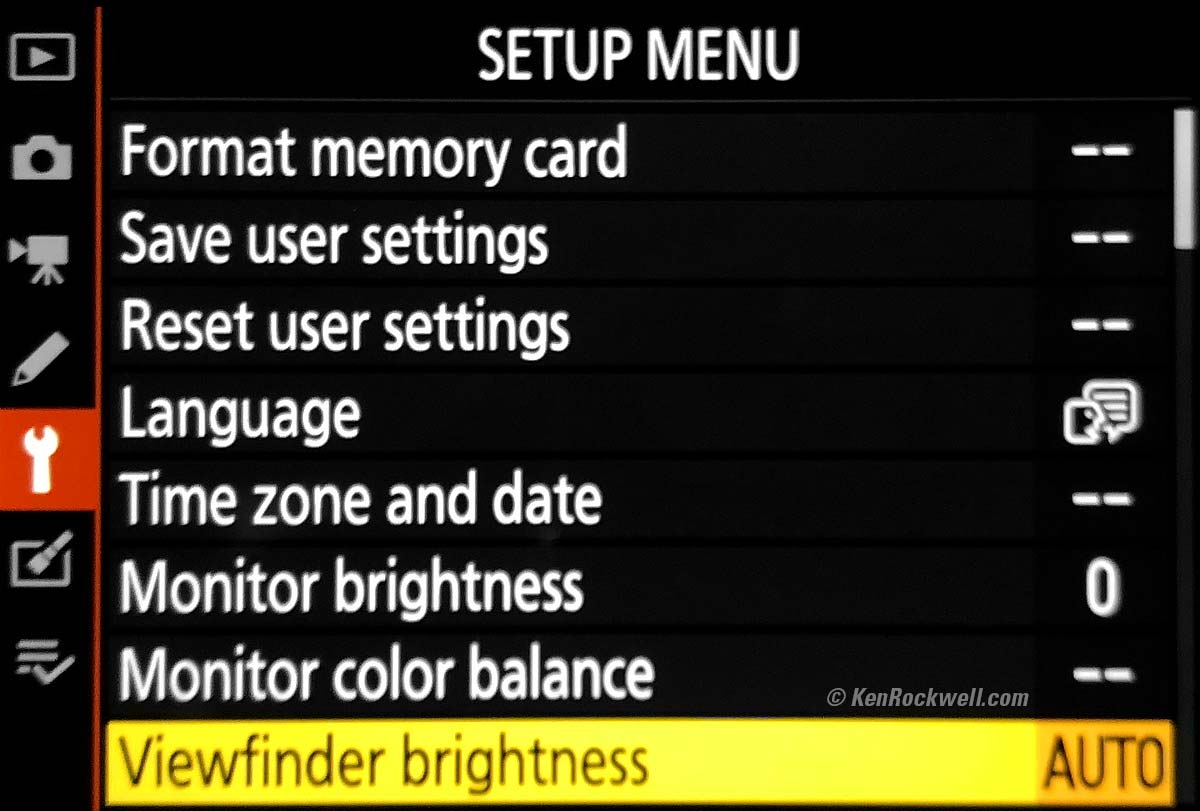 |
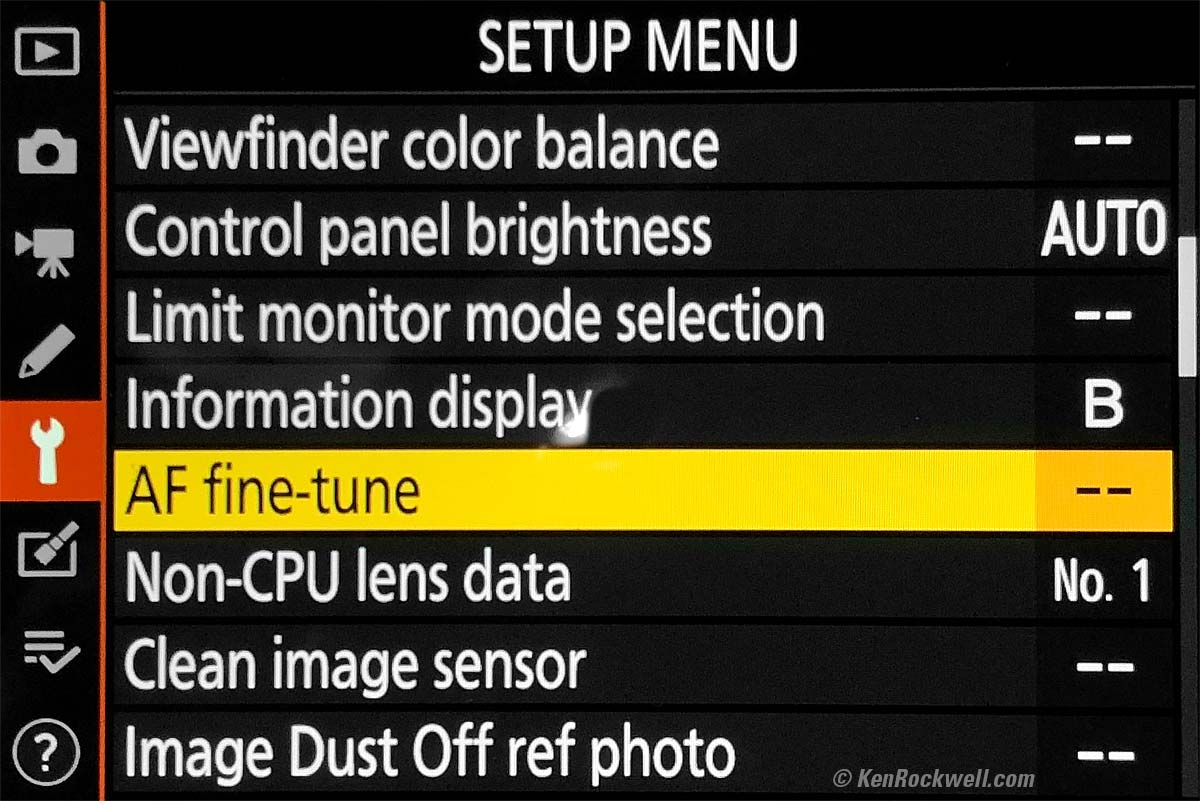 |
Everything looks the same.
Compare this to Sony's menu system, where everything also looks the same, but it's completely disorganized. We never can find anything in Sony's menu system, but Nikon's is well enough organized that it's not too difficult.
Canon's menu system is the best in the business, with expert color-coding and organization and one-click navigation.
Sharpness
Sharpness is excellent While the Z7 has more pixels, I don't see any difference in pixel-to-pixel sharpness between the two. Whatever anti-alias filter the Z7 does or doesn't have, the Z6 has the same.
See Nikon Z6 vs Z7 for sample image files.
You'll never see this in actual pictures due to Pixel Dumping, but if you look at everything at 200% on your computer monitor you'll appreciate the sharpness.
Here's how sharp it is with a mediocre lens from over 70 years ago on adapters:
Tree, 09 April 2019, 5:27 PM. Nikon Z6, 1946 5cm (50mm) f/2 NIKKOR-H•C on adapters, f/8 at 1/250 at Auto ISO 100, Perfectly Clear. bigger, full-resolution or camera-original © file.
Silent Mode
The regular shutter mode is pretty quiet, and the Silent Mode, turned on at the bottom of MENU > Shooting (camera), really is completely silent.
While the camera is silent, there can still be lens-focusing or diaphragm or in-camera sensor-shift stabilization sounds not audible beyond a couple of inches away.
Like all cameras, you can't use flash, flicker reduction or HDR in silent mode, and like all cameras other than the Sony A9 you can expect some occasional weird effects under flickering light or with objects moving across the frame due to the rolling shutter.
The ISO range in Silent is limited to ISO 51,200 maximum. There's no limit to the minimum, shoot at ISO 50 if you like, but for ISO 102,400 (H+1) or 204,800 (H+2) you'll have to use the regular shutter.
Silent mode works in all frame rates up to 12 FPS.
Image Stabilization
The Z6 has excellent in-camera sensor-shift Image Stabilization (IS or VR (Vibration Reduction)).
Nikon rates it for five stops improvement with native Z lenses and three stops for everything else, and my tests confirm that.
It works great with everything from the latest Z lenses to ancient manual-focus lenses on adapters, and even Nikon's very first rangefinder lenses from the 1940s!
"Percent Perfectly Sharp Shots" are the percentage of frames with 100% perfect tripod-equivalent sharpness I get when I'm shooting hand-held while standing with no support. Hand tremor is a random occurrence, so at marginal speeds some frames will be perfectly sharp while others will be in various stages of blur — all at the same shutter speed. This rates what percentage of shots are perfectly sharp, not how sharp all the frames are:
With Z 24-70mm f/4 S at 50mm from 2018
| % Perfectly Sharp Shots | 1 |
1/2 |
1/4 |
1/8 |
1/15 |
1/30 |
1/60 |
1/125 |
1/250 |
| VR ON | 0 | 75 | 100 | 90 | 100 | 100 | 100 | 100 | 100 |
| VR OFF | 0 | 0 | 0 | 5 | 40 | 50 | 75 | 100 | 100 |
With AF-S 50mm f/1.4 G from 2008
| % Perfectly Sharp Shots | 1 |
1/2 |
1/4 |
1/8 |
1/15 |
1/30 |
1/60 |
1/125 |
1/250 |
| VR ON | 17 | 33 | 83 | 100 | 100 | 100 | 100 | 100 | 100 |
| VR OFF | 0 | 0 | 0 | 0 | 33 | 50 | 83 | 100 | 100 |
With 5cm (50mm) f/2 NIKKOR-H•C from 1946
| % Perfectly Sharp Shots | 1 |
1/2 |
1/4 |
1/8 |
1/15 |
1/30 |
1/60 |
1/125 |
1/250 |
| VR ON | 0 | 0 | 67 | 83 | 100 | 100 | 100 | 100 | 100 |
| VR OFF | 0 | 0 | 0 | 0 | 0 | 40 | 50 | 100 | 100 |
Top OLED Display
So long as you're not in direct sunlight, it has automatic brightness control and is superbly legible in any light from daytime outdoors down to starlight:
Top OLED. bigger.
It's almost invisible in direct sunlight because it can't get bright enough. You have to shield it from the sun to read it.
Unlike LCD displays, the top OLED is off whenever the camera is sleeping.
I consider top displays a throwback to 35mm film days, so I don't take these that seriously.
Nikon Z6, top OLED and 24-70mm f/4 S. bigger.
Rear LCD Monitor
The rear LCD is like every other digital camera today.
It flips up 100º and down 45º so it's good for horizontal shots above or below you, but it can't flip side to side and it can't flip 180º for self-portraits.
Playback
Playback is like other Nikons, with the new twist that we can see exactly the same things through the electronic finder as we can see on the rear LCD. Forget the old LCD loupes; just look through the finder and you can see everything big and clear even in direct sunlight — including magnification!
There's only a 4-way controller for scrolling around, not an 8-way controller and no nubbin, either. No worries; it's a touch screen so use that for zooming and scrolling.
Typical to Nikon is playback banding in blue skies. It looks the same in the finder or on the rear LCD:
Actual Z7 electronic finder image as seen through the eyepiece. Note banding in the sky. bigger.
It's an in-camera defect only; the images themselves are fine.
It's visible with full-size and reduced playback; it's not visible when zoomed-in and not in the actual images. I suspect it's Nikon playing-back a very data-reduced thumbnail inside each image file for the sake of speed.
Data
Cards are correctly formatted as "NIKON Z 6."
JPGs are tagged as 300 DPI.
Vertical images are merely flagged, not actually rotated.
Power & Battery
Battery
Battery life is very good, and power management is the best in mirrorless. You can leave the power switch ON and just go about your shooting day; the Z6 will sleep and wake automatically as it needs to.
Charging
The Z6 charges from any regular 5V USB port with any random 99¢ USB-C cable. You don't need a fancy charger or cable as you do with Canon.
It draws 467mA charging over the included USB-C cord from a 5V supply.
Unlike with the Z7, the Z6 does not include a EH-7P Charging AC Adapter or an MH-25A external battery charger, but you don't need them.
More at my Nikon Z6 User's Guide.
Clock Accuracy
Every sample is different, but mine gains 11 seconds per month (364 milliseconds per day), which is normal.
Video Version of this Review
Compared
Top Sample Images Intro Lens Compatibility
Adapted Rangefinder Lenses Specifications
Unboxing USA Version Performance
Z6 body-only: $1,697 new at Amazon or about $1,000 used if you know How to Win at eBay.
Z6 with 24-70mm f/4: $2,075 at Amazon and $2,596 at B&H.
Nikon vs Canon vs Sony Full Frame Mirrorless Compared.
Nikon Z6 versus Z7.
The Z6 is 99% the same as the Z7, but runs 33% faster for 41% less money.
Nikon vs. Sony Mirrorless
Huge advantages of Nikon mirrorless over Sony are:
 Feels and handles like a real camera, not a VCR like Sonys do.
Feels and handles like a real camera, not a VCR like Sonys do.
 Superior Nikon color rendition. While mirrorless is fun, I get better colors on my Canons and Nikons than I get from Fuji or Sony.
Superior Nikon color rendition. While mirrorless is fun, I get better colors on my Canons and Nikons than I get from Fuji or Sony.
 Full-time instant manual-focus override. A core incompetancy of Sony's and Fuji's systems are that only one lens I've used does this. The rest of the system only can do this part time, only if you set the camera in certain modes, and often the other brand lenses use electronic manual focus which doesn't respond instantly. This Z6 and 24-70Z has manual-focus override that works as it should.
Full-time instant manual-focus override. A core incompetancy of Sony's and Fuji's systems are that only one lens I've used does this. The rest of the system only can do this part time, only if you set the camera in certain modes, and often the other brand lenses use electronic manual focus which doesn't respond instantly. This Z6 and 24-70Z has manual-focus override that works as it should.
User's Guides
See my Nikon Z6 Written User's Guide or the video version:
Recommendations
Top Sample Images Intro Lens Compatibility
Adapted Rangefinder Lenses Specifications
Unboxing USA Version Performance
Get this Z6 instead of the Z7. The Z7 doesn't run as fast, no one needs the Z7's extra resolution (24 MP is more enough for anything unless you really are printing 6 feet (2 meters) wide or more) and the Z6 costs much, much less. See also Nikon Z6 vs Z7, which includes sharpness samples.
Z6 body-only: $1,697 new at Amazon or about $1,000 used if you know How to Win at eBay.
Z6 with 24-70mm f/4: $2,075 at Amazon and $2,596 at B&H.
Since it only uses XQD cards, be sure to get at least one XQD card, and get an XQD card reader; your existing CF or SD cards and readers are now useless with this camera.
This all content, junk-free website's biggest source of support is when you use those or any of these links to approved sources when you get anything, regardless of the country in which you live. Nikon does not seal its boxes in any way, so never buy at retail or any other source not on my personally approved list since you'll have no way of knowing if you're missing accessories, getting a defective, damaged, returned, non-USA, store demo or used camera. I use the stores I do because they ship from secure remote warehouses where no one gets to touch your new camera before you do. Buy only from the approved sources I use myself for the best prices, service, return policies and selection.
Thanks for helping me help you!
More Information
Top Sample Images Intro Lens Compatibility
Adapted Rangefinder Lenses Specifications
Unboxing USA Version Performance
Z6 body-only: $1,697 new at Amazon or about $1,000 used if you know How to Win at eBay.
Z6 with 24-70mm f/4: $2,075 at Amazon and $2,596 at B&H.
© Ken Rockwell. All rights reserved. Tous droits réservés. Alle Rechte vorbehalten.
Help Me Help You
I support my growing family through this website, as crazy as it might seem.
The biggest help is when you use any of these links when you get anything. It costs you nothing, and is this site's, and thus my family's, biggest source of support. These places always have the best prices and service, which is why I've used them since before this website existed. I recommend them all personally.
If you find this page as helpful as a book you might have had to buy or a workshop you may have had to take, feel free to help me continue helping everyone.
If you've gotten your gear through one of my links or helped otherwise, you're family. It's great people like you who allow me to keep adding to this site full-time. Thanks!
If you haven't helped yet, please do, and consider helping me with a gift of $5.00.
As this page is copyrighted and formally registered, it is unlawful to make copies, especially in the form of printouts for personal use. If you wish to make a printout for personal use, you are granted one-time permission only if you PayPal me $5.00 per printout or part thereof. Thank you!
Thanks for reading!
Ken Rockwell.
